
The Road to Ruin: The Global Elites' Secret Plan for the Next Financial Crisis
by
James Rickards
Published 15 Nov 2016
Climate, biology, solar flares, forest fires, traffic jams, and other natural and man-made behaviors can all be described using complexity theory. Lorenz’s observation that long-run forecasting in nonlinear systems is impossible given minute differences in initial conditions did not mean that no valuable information is derived from the models. Applied complexity theory is interdisciplinary. Complex systems all have behaviors in common, yet have dynamics unique to each domain. A team out to crack the code in applied complexity theory would include physicists, mathematicians, computer modelers, and subject matter experts from the field being addressed.
…
Complexity Bayesian technique is not a science in itself, it’s an applied mathematical tool with robust predictive properties. The prime science of capital markets is complexity theory. Capital markets are complex systems, yet complexity is little understood and even less used in financial economics. From the 1998 global liquidity crisis, to the 2000 tech bubble collapse, to the 2008 panic, policymakers have led the world into one crash after another. Their failure to use complexity theory explains why. The case for complexity theory is straightforward. It’s not difficult to grasp. Investors must grasp it now if they wish to preserve wealth. The next panic will be too late.
…
This is why central bank and Wall Street equilibrium models produce consistently weak results in forecasting and risk management. Every analysis starts with the same data. Yet when you enter that data into a deficient model, you get deficient output. Investors who use complexity theory can leave mainstream analysis behind and get better forecasting results. The third tool in addition to behavioral psychology and complexity theory is Bayesian statistics, a branch of etiology also referred to as causal inference. Both terms derive from Bayes’ theorem, an equation first described by Thomas Bayes and published posthumously in 1763. A version of the theorem was elaborated independently and more formally by the French mathematician Pierre-Simon Laplace in 1774.

Currency Wars: The Making of the Next Gobal Crisis
by
James Rickards
Published 10 Nov 2011
A new paradigm has emerged in the past twenty years from several schools of thought, including behavioral economics and complexity theory, among others. This new thinking comes with a healthy dose of humility—practitioners in many cases acknowledge the limitations of what is possible with the tools at hand. The new schools avoid the triumphalism of Keynes’s claim to a “general theory” and Friedman’s dictum that inflation is “always and everywhere” monetary. The most promising new school is complexity theory. Despite the name, complexity theory rests on straightforward foundations. The first is that complex systems are not designed from the top down.
…
Cold War era Collapse of Complex Societies, The (Tainter) collateralized debt obligations (CDOs) commodities Commodity Futures Modernization Act Communist Party of China competitive devaluations complexity theory Connally, John connectedness, in complex systems convening power theory copper correlation, in global financial warfare Cosmic Evolution (Chaisson) Coughlin, Charles counterfeiting Credit-Anstalt Bank of Vienna critical state systems critical thresholds currency collapse capital flight response to dollar collapse in complexity theory 1920s currency convergence currency devaluations competitive dollar devaluation against gold, 1930s and 1970s 1930s and 1970s sterling devaluations Tripartite Agreement of 1936 and currency markets currency peg currency wars Atlantic theater benefits of chaos as outcome of Currency War I (1921–1936) Currency War II (1967–1987) Currency War III (2010–) Eurasian theater Pacific theater Czechoslovakia Davison, Henry P.
…
When the system reaches a certain scale, the energy inputs dry up because the exponential relationship between scale and inputs exhausts the available resources. In a nutshell, complex systems arise spontaneously, behave unpredictably, exhaust resources and collapse catastrophically. When you apply this paradigm to finance, you begin to see where the currency wars are headed. Complexity theory has a strong empirical foundation and has had wide application in a variety of natural and man-made settings, including climate, seismology and the Internet. Significant progress has been made in applying complexity to capital and currency markets. However, a considerable challenge arises when one considers the interaction of human behavior and market dynamics.

The Blockchain Alternative: Rethinking Macroeconomic Policy and Economic Theory
by
Kariappa Bheemaiah
Published 26 Feb 2017
If the economy is seen in this light, then the reactions of technology with agents and the following assemblages and adaptations that are seen in an economy are reflective of the study of complex systems, an academic discipline that observes the deep laws of complexity and emergence in any system. Complexity theory was born in the 1970’s (Wilson, 1998) and was originally inspired by 19th century physics, specifically the fields of classical mechanics, statistical non-equilibrium physics and thermodynamics (Helbing and Kirman, 2014). The main tenets of complexity theory borrow their conceptions from chaos theory, self-criticality and adaptive landscapes, to bring into focus the way complex systems grow, persist and collapse. The first scholars of complexity theory began their formulations at the Santa Fe institute, and based their study of complex systems on abstract non-linear transformative computer simulations.
…
Jack Rabin, Handbook of Strategic Management (pp. 67-87). Routledge. Levy, M. (2012). Agent Based Computational Economics. In R. A. Meyers, Computational Complexity: Theory, Techniques, and Applications (pp. 18-39). Springer. Manson, S. M. (2001). Simplifying complexity: a review of complexity theory. Geoforum, Volume 32, Issue 3, 405-414. Morçöl, G. (2008). A Complexity Theory for Policy Analysis. In K. A. Richardson and Linda F. Dennard (Editors), Complexity and Policy Analysis (pp. 23 - 35). ISCE Publishing. Pfleiderer, P. (2014). Chameleons: The Misuse of Theoretical Models in in Finance and Economics . Stanford Graduate School of Business.
…
Journal of Economic Perspectives - Volume 6, Number 2, 117-136. Kirman, D. H. (2014). Rethinking Economics Using Complexity Theory . Iowa State University. Kirman, M. G. (2013). Reconstructing economics: Agent based models and complexity . Baltzer Science Publishers, DOI : 10.7564/12-COEC2 . Lawrence J. Christiano, M. E. (1998). Monetary Policy Shocks: What Have We Learned and to What End? LeBaron, B. (2002). Building the Santa Fe Artificial Stock Market . Brandeis University. Levy, D. L. (2000). Applications and Limitations of Complexity Theory in Organization Theory and Strategy. In G. J. Jack Rabin, Handbook of Strategic Management (pp. 67-87).
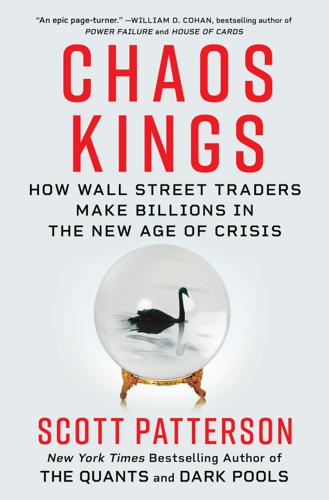
Chaos Kings: How Wall Street Traders Make Billions in the New Age of Crisis
by
Scott Patterson
Published 5 Jun 2023
CHAPTER 17 TRANSITION TO EXTINCTION Taleb had first met Yaneer Bar-Yam, a slender, cerebral man with a curly shock of hair and an enduring fondness for wool sweaters, when he attended a New England Complex Systems Institute conference in Cambridge in 2010. He’d been teaching Bar-Yam’s textbook, Dynamics of Complex Systems, to his class at NYU, and saw interesting connections between Bar-Yam’s specialty, complexity theory, and his own idiosyncratic Black Swan worldview. Bar-Yam, he came to believe, was the world’s leading expert in complexity theory. It was a big claim. No less an authority than Stephen Hawking proclaimed, “Complexity is the science of the twenty-first century.” Not only founder of NECSI but also chair of the International Conference on Complex Systems, Bar-Yam had long been at the very forefront of the complexity pack.
…
Crunching the numbers on a computer program called Wolfram Mathematica, Taleb grew increasingly unnerved. If the disease got out of control, it could be devastating. Millions could die. Videos emerging from Wuhan of overrun hospitals and doctors in space-age protective suits frightened Taleb. He called Yaneer Bar-Yam, a friend and expert in complexity theory—the broad, interdisciplinary study of interactions within and among systems ranging from cells to forests to the global climate—and the disturbing dynamics of pandemics in the modern world. “You’ve got to pay attention to what’s going on in Wuhan,” Taleb told him. Bar-Yam agreed. Founder of an elite research center called the New England Complex Systems Institute, or NECSI, Bar-Yam had for years been growing progressively worried about the outbreak of a global pandemic.
…
Neither Spitznagel nor Taleb claim to know when the crashes will happen. As Spitznagel wrote in a 2020 letter to investors, “There are no crystal balls!” Not everyone agrees that it is impossible to predict market crashes, however. A growing breed of mathematicians, many of whom are steeped in a fiendishly arcane branch of science called complexity theory, practiced by brainiacs such as Taleb’s friend Yaneer Bar-Yam, have claimed they can detect certain signals in the market’s noise that auger collapse. Experts in the theory, such as French physicist Didier Sornette, have devised experiments to demonstrate the reliability of their predictive systems, with some surprising successes.

Nomad Citizenship: Free-Market Communism and the Slow-Motion General Strike
by
Eugene W. Holland
Published 1 Jan 2009
The best illustration of immanent self-organization, as far as I know, is still jazz group improvisation, to which chapter 1 will add a number of others from a variety of fields (including science, games, and ethology); the concept of immanence they illustrate, in any case, is key to nomadism and nomadology, as first defined by Deleuze and Guattari.24 Some of its roots lie in complexity theory and nonlinear mathematics, which have both formalized and reinforced long-standing impressions that order can and often does arise in systems spontaneously, without being imposed by some transcendent instance standing above or outside the system. Complexity theory supports both the nontotalized view of society and the nonlinear view of history informing nomadology.25 The discovery of emergent self-organization seemed to belie the second law of thermodynamics, according to which entropy is supposed to increase—in any closed system operating close to equilibrium, that is.
…
Complexity theory supports both the nontotalized view of society and the nonlinear view of history informing nomadology.25 The discovery of emergent self-organization seemed to belie the second law of thermodynamics, according to which entropy is supposed to increase—in any closed system operating close to equilibrium, that is. But the fields to which complexity theory was most dramatically applied were not closed systems and were nowhere near equilibrium: life on earth, for instance, receives practically immeasurable amounts of energy from the sun and thus represents a classic case of negentropy or syntropy rather than en tropy. As Stuart Kauffmann (among others) has shown, starting from al most trivially simple mathematical models, spontaneous self-organization emerges in all kinds of systems, from inorganic molecule clusters to cells and organisms, to ecosystems, economies, and cultures.26 Of course, de bates about the sources or bases of social organization date back to the dawn of philosophy, but complexity theory gave new impetus and added credence to conceiving of various kinds of social order as immanently self organizing, and this becomes a key component of the concept of nomad citizenship.
…
As Stuart Kauffmann (among others) has shown, starting from al most trivially simple mathematical models, spontaneous self-organization emerges in all kinds of systems, from inorganic molecule clusters to cells and organisms, to ecosystems, economies, and cultures.26 Of course, de bates about the sources or bases of social organization date back to the dawn of philosophy, but complexity theory gave new impetus and added credence to conceiving of various kinds of social order as immanently self organizing, and this becomes a key component of the concept of nomad citizenship. The main components of the concept of free-market communism, mean while, come from more disparate sources, starting with theories of the free market and Marxist theory itself.
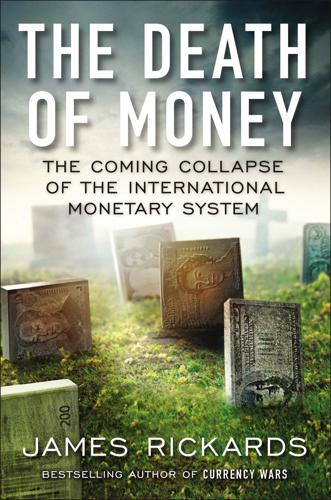
The Death of Money: The Coming Collapse of the International Monetary System
by
James Rickards
Published 7 Apr 2014
Only nations and individuals who make provision today will survive the maelstrom to come. In place of fallacious, if popular, methods, this book considers complexity theory to be the best lens for viewing present risks and likely outcomes. Capital markets are complex systems nonpareil. Complexity theory is relatively new in the history of science, but in its sixty years it has been extensively applied to weather, earthquakes, social networks, and other densely connected systems. The application of complexity theory to capital markets is still in its infancy, but it has already yielded insights into risk metrics and price dynamics that possess greater predictive power than conventional methods.
…
-Iran financial war and, 56, 57 Warlord Period, 91 Warring States period, 90 China Daily, 52 China Investment Corporation (CIC), 51 China National Petroleum Corporation, 97 China Petrochemical Corporation (SINOPEC), 97 China Railway Corporation, 255 China State Shipbuilding Corporation, 97 China Telecom, 97 Churchill, Winston, 116, 223 Citibank, 28, 30–31, 262 Citigroup, 196 civilizational collapses, 5 Clinton, Bill, 210 cluster paradigm, 192–93, 194, 198 CNN, 36, 37 codetermination, 123–24 Cohen, David, 54 Coinage Act of 1792, 217 Cold War, 46, 231 collapse civilizational, 5 financial, 265–67 of international monetary system, 5 market, 11–12 warning signs of, 295–98 collateral swaps, 188 College of Europe, 116 commodities, 217 Communist Dynasty, 90, 91–92 complexity theory, 6, 269–70 financial collapse and, 265–67 market collapse and, 11–12 phase transitions in, 172, 265, 289–90 computational complexity theory, 71 confidence, in U.S. dollar, 253–56, 291 confirmation bias, 26 continuity of government operations, 63 contract theory of money (contractism), 165–67, 169 corporate tax rates, 122 correlations, 4–5 Cosco, 133 Counter-Reformation, 115 credit, in premoney economies, 255 creditism, 168–69 credit risk, 218 criticality, 270 Croatia, 136 Croseus, King, 217 “Crunch Time: Fiscal Crises and the Role of Monetary Policy” (Mishkin), 286–87 Crusades, 115 currency war, 159 cyberattacks, 59–60 cyclical downturns, 197–98 Cyprus, 200, 290 Dam, Kenneth W., 209–10 Da Silva, Tekoa, 236 Davoudi, Parviz, 151 “Day After, The” (Ambinder), 63 debasement, of money, 172 debt, 171–80, 290–91 Federal Reserve monetary policy’s relation to, 176–77, 180–89 Federal Reserve Notes as, 167 monetization of, 287–88 sustainable, 171–72, 176–80 tests for acceptable government spending, 173–76 of United States, 171–73 Debt-Deflation Theory of Great Depressions, The (Fisher), 246–47 debt-to-GDP ratio, 159–60, 173 deflation, impact of, 9, 258–59 of Japan, 159, 259, 261 of United Kingdom, 159 of United States, 159, 173, 259 defensive aspects of financial war, 46 deficits, 172–73, 176–80 deflation, 9–11, 76–83, 243–52, 256–64 banking system, impact on, 9, 259 Bernanke’s response to, 76, 77 Chinese imports and, 76 debt-to-GDP ratio and, 9, 258–59 deleveraging after housing market collapse and, 76–77 government debt repayment and, 9, 258 Greenspan’s response to, 76 versus inflation, in depression of 2007 to present, 243–52, 260, 290–91 in Japan, 160–61, 260–62, 264 post-2000 deflationary bias, 76 SDR issuance to prevent, 213–14 tax collection and, 9, 259–60 unemployment and, 77 De Gasperi, Alcide, 116 degree distribution, 265–66 de Léry, Jean, 115 deleveraging, 76–77, 246 DeMint, Jim, 205 Democrats, 175–76, 179, 180, 294 Deng Xiaoping, 93, 97 depressions defined, 244 deflation in, 246–47 Great Depression, 84, 85, 125–26, 155, 221–22, 223–24, 234, 244, 245 Long Depression, in Japan, 160 of 1920, 246–47 regime uncertainty and, 125–26 2007 to present, 3, 76, 87, 126, 197, 243–52, 260, 290–91 derivatives, 80–81 gold as not constituting, 217–18 mortgage-related, 290 risk posed by, 11–12 size of positions in, 11 Deutsche Bank, 32–33 Deutsche Bundesbank, 232 devaluations, 158, 200 of dollar, U.S., 1, 10–11, 235 Gold Bloc devaluations, 222 Great Depression and, 223 digital currencies, 254 dollar, U.S., 161 alternatives to, 254 Beijing Consensus and, 120–21 confidence in, 253–56, 291 contract theory of, 165–67, 169 deflation as threat to, 9–11 demise of, potential paths of, 292–95 devaluation of, 1, 10–11, 235 financial war as threat to, 6–7 geopolitical threats to, 12–13 gold convertibility abandoned, in 1971, 1, 2, 5, 209, 220, 235, 285 inflation as threat to, 7–9 King Dollar (sound-dollar) policy, 118, 176–77, 210, 211 loss of confidence in, in 1970s, 1–2, 5 market collapse as threat to, 11–12 MARKINT as means of detecting attacks on, 40 pegging to, effect of, 155 SDRs as potential reserve currency replacement for, 211–14, 292–93 threats to, 5–13 Volcker’s efforts to save, 2 Washington Consensus and, 118–20 dollar index in 1978, 1, 253–54 in 1995, 2, 253–54 in 2011, 2–3, 253–54 in 2013, 253–54 SDR issuance and weakness in, 210–11 Dr.
…
If the United States faces severe deflation again, the antidote of dollar devaluation against gold will be the same, because there is no other solution when printing money fails. ■ Market Collapse The prospect of a market collapse is a function of systemic risk independent of fundamental economic policy. The risk of market collapse is amplified by regulatory incompetence and banker greed. Complexity theory is the proper framework for analyzing this risk. The starting place in this analysis is the recognition that capital markets exhibit all four of complex systems’ defining qualities: diversity of agents, connectedness, interdependence, and adaptive behavior. Concluding that capital markets are complex systems has profound implications for regulation and risk management.
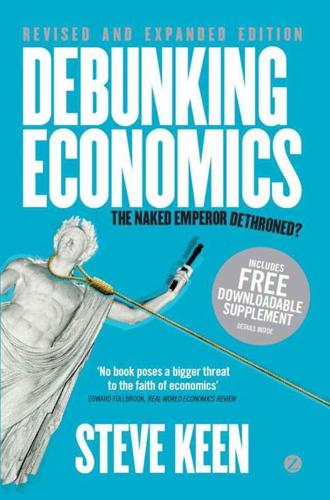
Debunking Economics - Revised, Expanded and Integrated Edition: The Naked Emperor Dethroned?
by
Steve Keen
Published 21 Sep 2011
The Sraffian scorecard Though the Sraffian school was fairly influential up until 2000, there have been few developments in it since, certainly in comparison to the growth in post-Keynesian economics since that date. Complexity theory and Econophysics Complexity theory is not so much a school of thought in economics as a group of economists who apply what is popularly known as ‘chaos theory’ to economic issues. Since the first edition of this book, there has also been an enormous growth in the number of physicists taking an active interest in economics and finance, and this new school of ‘Econophysics’ has largely subsumed the complexity theory approach. The concept of chaos itself was first discovered in 1899 by the French mathematician Henri Poincaré.
…
Modeling Minsky Minsky did develop a mathematical model of a financially driven business cycle in his PhD, which resulted in the one paper he ever had published in a mainstream economic journal, the American Economic Review (Minsky 1957).3 But the model was unsatisfactory for a number of reasons, and he subsequently abandoned it to stick with predominantly verbal reasoning. Minsky’s failure to develop a satisfactory mathematical model was partly due to bad timing: the 1950s pre-dated the development of complexity theory, which made trying to build a model of his hypothesis virtually impossible. Minsky simply added a financial dimension to the dominant linear trade cycle model of the day, which was a particularly unsuitable foundation for his hypothesis.4 In 1993, well after complexity theory had developed, I built my initial Minsky model using the far more suitable foundation of the cyclical growth model developed by the non-neoclassical economist Richard Goodwin (Goodwin 1967).
…
The Sonnenschein-Mantel-Debreu result is one of many that have effectively split the caste of mathematical economists into two sects. One pretends that business as usual can continue, despite the presence of this (and many other) fallacies in the creed. The other is dabbling in alternative religions – such as complexity theory, or evolutionary economics. Sadly, the uninformed majority of the profession believes that the first sect is the bearer of the true religion, and that the members of the second sect have betrayed the faith. A more accurate analogy is that the dabblers in alternative religions are experiencing the first flushes of adolescence, while the majority of the profession remains mired in infancy.
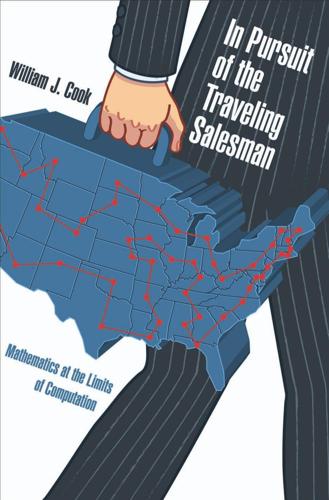
In Pursuit of the Traveling Salesman: Mathematics at the Limits of Computation
by
William J. Cook
Published 1 Jan 2011
What sets the traveling salesman problem apart is the fact that despite decades of research by top applied mathematicians around the world, in general it is not known how to significantly improve upon simple bruteforce checking. It is a real possibility that there may never exist an efficient method that is guaranteed to solve every example of the problem. This is a xii Preface deep mathematical question: is there an efficient solution method or not? The topic goes to the core of complexity theory concerning the limits of feasible computation. For the stouthearted who would like to tackle the general version of the problem, the Clay Mathematics Institute will hand over a $1,000,000 prize to anyone who can either produce an efficient method or prove that this is impossible. The complexity question that is the subject of the Clay Prize is the Holy Grail of traveling-salesman-problem research and we may be far from seeing its resolution.
…
Thousands of LP users nonetheless go ahead and include such restrictions in their models everyday, unable to resist the flexibility that integer-only variables bring to the table. The extended framework is known as integer programming, or IP for short. Dantzig himself was the first to document how versatile integer programming can be. In a paper that is fundamental in both the field of optimization and the field of complexity theory, he showed how each member of a long list of important optimization problems can be modeled as an IP problem.29 Dantzig described his work as follows in his 1963 LP book.30 Linear Programming Figure 5.19 Four-coloring of a graph. Our purpose is systematically to review and classify problems that can be reduced to linear programs, some or all of whose variables are integer valued.
…
Edmonds was coy with his explanation, noting only that it was a legitimate possibility that no good algorithm exists. Four years after this bet, Stephen Cook and Richard Karp developed their theory placing the question in the larger world of P vs. N P. The Complexity Classes Mathematicians like to keep things tidy, and in the case of complexity theory this has led to a focus on decision problems, that is, a focus on problems having yes or no answers. So, for example, does a graph have a Hamiltonian circuit? Yes or no. Or, given a set of cities, is there a tour of length less than 1,000 miles? Yes or no.7 Among decision problems, Richard Karp introduced the short notation P to denote those that have good algorithms.
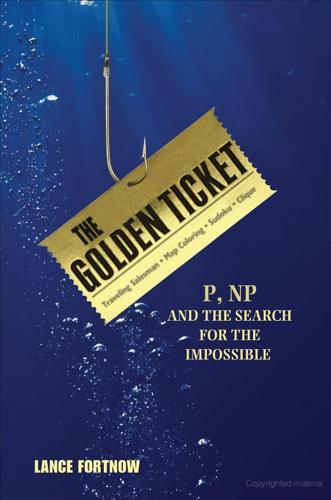
The Golden Ticket: P, NP, and the Search for the Impossible
by
Lance Fortnow
Published 30 Mar 2013
The Association for Computing Machinery is a major society serving computing researchers and professionals, and Communications is the society’s main magazine devoted to articles of interest for that community. At first I tried to push the article onto another computer scientist, but eventually relented. As Moshe put it to me, “If physicists write popular articles (and books) about string theory, we should be able to explain what complexity theory has accomplished, I’d hope.” I wrote the article, aiming for the Communications audience, not just about the status of the P versus NP problem, which can be summarized as “still open,” but about how people deal with hard problems. “The Status of the P versus NP Problem” was published in the September 2009 issue and quickly became the most downloaded article in the Communications’ history.
…
Every year dozens of these manuscripts are emailed to computer scientists, submitted to academic journals, and posted on the Internet. The most prestigious computer science journal receives a steady stream of papers claiming to resolve the P versus NP question and has a specific policy for those papers: The Journal of the ACM frequently receives submissions purporting to solve a long-standing open problem in complexity theory, such as the P/NP problem. Such submissions tax the voluntary editorial and peer-reviewing resources used by JACM, by requiring the review process to identify the errors in them. JACM remains open to the possibility of eventual resolution of P/NP and related questions, and continues to welcome submissions on the subject.
…
JACM remains open to the possibility of eventual resolution of P/NP and related questions, and continues to welcome submissions on the subject. However, to mitigate the burden of repeated resubmissions of incremental corrections of errors identified during editorial review, JACM has adopted the following policy: No author may submit more than one paper on the P/NP or related long-standing questions in complexity theory in any 24 month period, except by invitation of the Editor-in-Chief. This applies to resubmissions of previously rejected manuscripts. Most attempts at solving P versus NP are unreadable or clearly wrong and are generally ignored by the community. Deolalikar’s paper went through a different process.
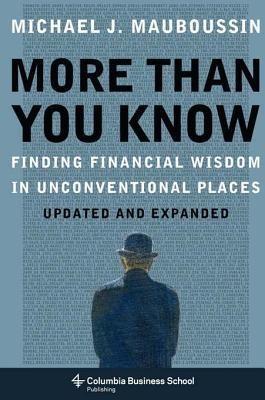
More Than You Know: Finding Financial Wisdom in Unconventional Places (Updated and Expanded)
by
Michael J. Mauboussin
Published 1 Jan 2006
Tools of the Trade-Off Chapter 24 - You’ll Meet a Bad Fate If You Extrapolate Social Versus Security Nonstationarity and Historical P/Es Why the Past May Not Be Prologue Bounded Parameters Unpacking the (Mental) Baggage Chapter 25 - I’ve Fallen and I Can’t Get Up Returns and Growth Death, Taxes, and Reversion to the Mean I’ve Fallen and I Can’t Get Up Chapter 26 - Trench Cooperation The War Metaphor—Death or Life? Why a Date and a Marriage Are So Different Price and Quantity Chapter 27 - Great (Growth) Expectations Compounding and Confounding Reality Check The Bigger They Are, the Slower They Grow (or Don’t Grow) Refuse Refuge in Castles in the Air Part 4 - Science and Complexity Theory INTRODUCTION Chapter 28 - Diversify Your Mind Ant Brain A-Mazing Getting a Diversity Degree Creativity and Investing Chapter 29 - From Honey to Money Smart Ant Traveling Salesman? Follow the Ant . . . Delphic Decision Markets The Stock Market—the Ultimate Hive? Swarm Smarts Chapter 30 - Vox Populi The Accuracy of Crowds Needle in a Haystack Weighing the Ox with the Vox Estimating Printers with Populi And Now, For the Real World Chapter 31 - A Tail of Two Worlds Experience Versus Exposure Tell Tail What Fat Tails Mean for Investors Chapter 32 - Integrating the Outliers Bernoulli’s Challenge What’s Normal?
…
Unlike a best-selling thriller, you can read More Than You Know from back to front just as easily as from front to back. But I recommend you simply go to the table of contents, find something that interests you, and jump in. While the essays cover a range of topics, I categorize them into four parts—investment philosophy, psychology of investing, innovation and competitive strategy, and science and complexity theory. Consider these compartments in a toolbox, each addressing a distinct facet of investing. That said, every essay is meant to stand by itself. This edition has updated tables and charts and new chapters in each part. Fresh topics include thoughts on management assessment, the role of intuition, applications of game theory, and the mechanisms behind the market’s mood swings.
…
Furthermore, while there is nothing wrong with growth stocks, the indications are that it is very difficult to know which companies will exceed expectations and which will disappoint. Investors should continue to focus on investment ideas where the expected value is favorable—where the upside opportunity outstrips the downside risk. Part 4 Science and Complexity Theory INTRODUCTION One of my first calls after the major East Coast power blackout in August 2003 was to my friend Duncan Watts, then a Columbia University sociology professor. I peppered him with questions about the failure: what might have caused it, how it progressed, and by what means could we avoid future similar events.
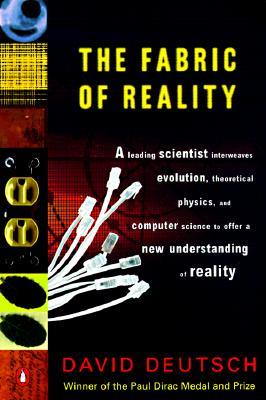
The Fabric of Reality
by
David Deutsch
Published 31 Mar 2012
From now on, when I refer to universality I shall mean it in this sense, unless otherwise stated. Just how efficiently can given aspects of reality be rendered? What computations, in other words, are practicable in a given time and under a given budget? This is the basic question of computational complexity theory which, as I have said, is the study of the resources that are required to perform given computational tasks. Complexity theory has not yet been sufficiently well integrated with physics to give many quantitative answers. However, {197} it has made a fair amount of headway in defining a useful, rough-and-ready distinction between tractable and intractable computational tasks.
…
We could not avoid the latter question, and it is effectively a repetition of what we were trying to answer in the first place. Now we can rephrase Dr Johnson's criterion thus: If, according to the simplest explanation, an entity is complex and autonomous, then that entity is real. Computational complexity theory is the branch of computer science that is concerned with what resources (such as time, memory capacity or energy) are required to perform given classes {91} of computations. The complexity of a piece of information is defined in terms of the computational resources (such as the length of the program, the number of computational steps or the amount of memory) that a computer would need if it was to reproduce that piece of information.
…
The resemblance may be concrete, as when the images in a planetarium resemble the night sky; more importantly, it may be abstract, as when a statement in quantum theory printed in a book correctly explains an aspect of the structure of the multiverse. (Some readers may be familiar with the geometry of fractals; the notion of self-similarity defined here is much broader than the one used in that field.) {96} complexity theory The branch of computer science concerned with what resources (such as time, memory capacity or energy) are required to perform given classes of computations. SUMMARY Although solipsism and related doctrines are logically self-consistent, they can be comprehensively refuted simply by taking them seriously as explanations.

Emergence
by
Steven Johnson
That story begins in the late sixties in New York City, with a scientist named Evelyn Fox Keller. A Harvard Ph.D. in physics, Keller had written her dissertation on molecular biology, and she had spent some time exploring the nascent field of “nonequilibrium thermodynamics,” which in later years would come to be associated with complexity theory. By 1968, she was working as an associate at Sloan-Kettering in Manhattan, thinking about the application of mathematics to biological problems. Mathematics had played such a tremendous role in expanding our understanding of physics, Keller thought—so perhaps it might also be useful for understanding living systems.
…
Weaver had played a leading role in the Natural Sciences division of the Rockefeller Foundation since 1932, and when he retired in the late fifties, he composed a long report for the foundation, looking back at the scientific progress that had been achieved over the preceding quarter century. The occasion suggested a reflective look backward, but the document that Weaver produced (based loosely on a paper he had written for American Scientist) was far more prescient, more forward-looking. In many respects, it deserves to be thought of as the founding text of complexity theory—the point at which the study of complex systems began to think of itself as a unified field. Drawing upon research in molecular biology, genetics, physics, computer science, and Shannon’s information theory, Weaver divided the last few centuries of scientific inquiry into three broad camps. First, the study of simple systems: two or three variable problems, such as the rotation of planets, or the connection between an electric current and its voltage and resistance.
…
As our everyday life becomes increasingly populated by artificial emergence, we will find ourselves relying more and more on the logic of these systems—both in corporate America, where “bottom-up intelligence” has started to replace “quality management” as the mantra of the day, and in the radical, antiglobalization protest movements, who explicitly model their pacemakerless, distributed organizations after ant colonies and slime molds. Former vice president Al Gore is himself a devotee of complexity theory and can talk for hours about what the bottom-up paradigm could mean for reinventing government. Almost two centuries after Engels wrestled with the haunting of Manchester’s city streets, and fifty years after Turing puzzled over the mysteries of a flower’s bloom, the circle is finally complete.
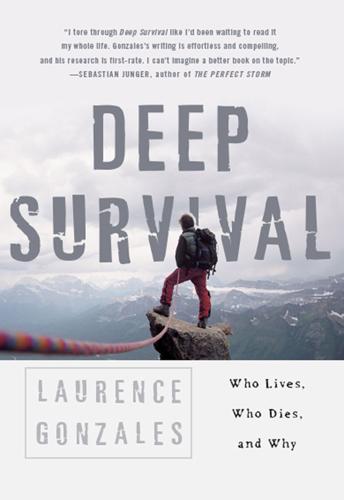
Deep Survival: Who Lives, Who Dies, and Why
by
Laurence Gonzales
Published 1 Dec 1998
In a sense, complexity was an extension of the thinking that gave rise to chaos theory; indeed, it was often referred to as existing at “the edge of chaos.” (There has also been strong objection to linking complexity and chaos and to using the term “complexity.”) Like chaos theory, complexity theory postulated “upheaval and change and enormous consequences flowing from trivial-seeming events—and yet with a deep law hidden beneath.” Complexity theory is a bold attempt to explain everything all at once, and so far it’s done a better job in some ways than either Einstein’s relativity theory or Niels Bohr’s quantum mechanics did. The climbers on Mount Hood discovered the enormous consequences of the trivial-seeming event of pulling their protection.
…
The closer you get, the more interesting detail you see, until at last you are looking at the tiniest of figures sculpted on its surface. Matter itself appears to be like that. Just when you think you’ve found the smallest piece, you find another even smaller one. The theory of self-organized criticality, sometimes called Complexity theory, was developed hard on the heels of chaos theory by some of the same people. It asked and suggested answers to questions as fundamental as: Where does order come from? How do you reconcile it with the second law of thermodynamics, which says that everything is heading toward more disorder? In a sense, complexity was an extension of the thinking that gave rise to chaos theory; indeed, it was often referred to as existing at “the edge of chaos.”
…
Now under stress, he failed to take in new information: In his haste, he built his fire beneath a tree that was laden with snow. It was one of those nonlinear kickback systems that was tightly coupled and that magnified trouble when upset. The Sand Pile Effect. London described all this long before chaos or complexity theory had been developed. His story touches on the most important elements of surviving in a spare and systematic manner: Each bough was fully freighted. Each time he had pulled a twig [from the tree] he had communicated a slight agitation to the tree—an imperceptible agitation, so far as he was concerned, but an agitation sufficient to bring about the disaster.

Applied Cryptography: Protocols, Algorithms, and Source Code in C
by
Bruce Schneier
Published 10 Nov 1993
As a general rule, diffusion alone is easily cracked (although double transposition ciphers hold up better than many other pencil-and-paper systems). 11.2 Complexity Theory Complexity theory provides a methodology for analyzing the computational complexity of different cryptographic techniques and algorithms. It compares cryptographic algorithms and techniques and determines their security. Information theory tells us that all cryptographic algorithms (except one-time pads) can be broken. Complexity theory tells us whether they can be broken before the heat death of the universe. Previous Table of Contents Next Products | Contact Us | About Us | Privacy | Ad Info | Home Use of this site is subject to certain Terms & Conditions, Copyright © 1996-2000 EarthWeb Inc.
…
7.6 Caveat Emptor Chapter 8—Key Management 8.1 Generating Keys 8.2 Nonlinear Keyspaces 8.3 Transferring Keys 8.4 Verifying Keys 8.5 Using Keys 8.6 Updating Keys 8.7 Storing Keys 8.8 Backup Keys 8.9 Compromised Keys 8.10 Lifetime of Keys 8.11 Destroying Keys 8.12 Public-Key Key Management Chapter 9—Algorithm Types and Modes 9.1 Electronic Codebook Mode 9.2 Block Replay 9.3 Cipher Block Chaining Mode 9.4 Stream Ciphers 9.5 Self-Synchronizing Stream Ciphers 9.6 Cipher-Feedback Mode 9.7 Synchronous Stream Ciphers 9.8 Output-Feedback Mode 9.9 Counter Mode 9.10 Other Block-Cipher Modes 9.11 Choosing a Cipher Mode 9.12 Interleaving 9.13 Block Ciphers versus Stream Ciphers Chapter 10—Using Algorithms 10.1 Choosing an Algorithm 10.2 Public-Key Cryptography versus Symmetric Cryptography 10.3 Encrypting Communications Channels 10.4 Encrypting Data for Storage 10.5 Hardware Encryption versus Software Encryption 10.6 Compression, Encoding, and Encryption 10.7 Detecting Encryption 10.8 Hiding Ciphertext in Ciphertext 10.9 Destroying Information Part III—Cryptographic Algorithms Chapter 11—Mathematical Background 11.1 Information Theory 11.2 Complexity Theory 11.3 Number Theory 11.4 Factoring 11.5 Prime Number Generation 11.6 Discrete Logarithms in a Finite Field Chapter 12—Data Encryption Standard (DES) 12.1 Background 12.2 Description of DES 12.3 Security of DES 12.4 Differential and Linear Cryptanalysis 12.5 The Real Design Criteria 12.6 DES Variants 12.7 How Secure Is DES Today?
…
It is easy to imagine that 50 years in the future we will all sit around, reminiscing about the good old days when people used to think factoring was hard, cryptography was based on factoring, and companies actually made money from this stuff. It is easy to imagine that future developments in number theory will make factoring easier or that developments in complexity theory will make factoring trivial. There’s no reason to believe this will happen—and most people who know enough to have an opinion will tell you that it is unlikely—but there’s also no reason to believe it won’t. In any case, today’s dominant public-key encryption algorithms are based on the difficulty of factoring large numbers that are the product of two large primes.

Why Machines Learn: The Elegant Math Behind Modern AI
by
Anil Ananthaswamy
Published 15 Jul 2024
“You look at your undergrad classes in math or physics, and they’re so complicated. And then this stuff is so simple. You just read two papers and you understand such powerful concepts. How can it be that it’s so simple?” Sutskever had a background in computational complexity theory, the study of what computers can and cannot do. “One of the things that comes up from looking at computational complexity theory is that certain computational models are much more powerful than others,” he said. “The thing that was very clear about neural networks is that [they] fit the bill of a powerful computational model. It was powerful enough.” And indeed, a problem big enough to pose questions of neural networks appeared in 2009.
…
It does this by establishing what are called lower and upper bounds for the algorithm, which are measures of at least and at most how much time and resources the algorithm needs to arrive at the desired solution. Proving such bounds for algorithms is a difficult, intricate, and esoteric task in a field of research called computational complexity theory. In 2018, Manuel Sabin, a young researcher I met at the University of California, Berkeley, gave an eloquent perspective on such work in a short film that I wrote, hosted, and co-directed (the film was part of a documentary series). “There are deep connections between lower bounds and upper bounds.
…
GO TO NOTE REFERENCE IN TEXT the training algorithm: Shivaram Kalyanakrishnan, “The Perceptron Learning Algorithm and Its Convergence,” January 21, 2017, PDF, https://www.cse.iitb.ac.in/~shivaram/teaching/old/cs344+386-s2017/resources/classnote-1.pdf. GO TO NOTE REFERENCE IN TEXT “There are deep connections”: Simons Institute, “Until the Sun Engulfs the Earth: Lower Bounds in Computational Complexity,” Theory Shorts, YouTube, n.d., www.youtube.com/watch?v=-DWmBhMgWrI. GO TO NOTE REFERENCE IN TEXT “Most workers in Al research”: “Part I: Artificial Intelligence: A General Survey by Sir James Lighthill, FRS, Lucasian Professor of Applied Mathematics, Cambridge University, July 1972,” PDF, www.aiai.ed.ac.uk/events/lighthill1973/lighthill.pdf.
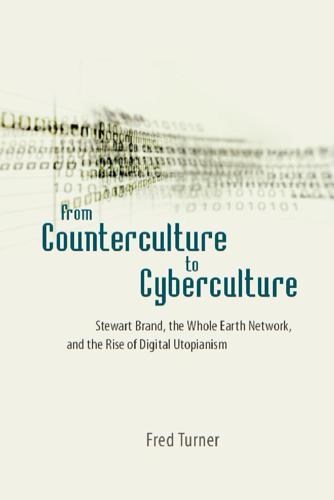
From Counterculture to Cyberculture: Stewart Brand, the Whole Earth Network, and the Rise of Digital Utopianism
by
Fred Turner
Published 31 Aug 2006
In 1995 Brad Hoyt, a senior project manager at Senco, a Cincinnati toolmaker, recalled a scenario-planning session with Stewart Brand: “He changed my whole life in one scenario planning session. He asked whether we’d heard about complexity theory. . . . Little did I know he’s on the board of the Santa Fe Institute.”36 Over the next year, Hoyt reported reading another dozen books on complexity and came to use complexity theory as a guide to “thinking about the housing industry and other ecosystems affecting Senco.” For executives like Hoyt, the systems-oriented rhetoric of complexity theory, buttressed by the cultural legitimacy of Stewart Brand, offered a compelling framework within which to understand the topsy-turvy economy of the late 1980s and early 1990s.
…
Early reviews included Poundstone, “Can You Trust Your Computer?”; Boisvert, “Weird Science”; Mitchell, “Mystifying the Net”; and Tetzeli, “Managing in a World Out of Control.” 63. Taylor, “Control in an Age of Chaos,” 65. 64. For critiques of Kelly’s cyberrevolutionism, see Terranova, “Digital Darwin”; Best and Kellner, “Kelly’s Complexity Theory”; Borsook, Cyberselfish. 65. As Walter Powell has pointed out, these forces included a flattening of corporate hierarchies, newly flexible employment structures for executives as well as laborers, globalization, and the integration of information technology into the firm. See Powell, “Capitalist Firm in the Twenty-First Century,” esp. 40 – 61. 66.
…
Berkeley: University of California Press, 1981. Berman, Morris. The Reenchantment of the World. Ithaca, NY: Cornell University Press, 1981. Bertalanffy, Ludwig von. General System Theory: Foundations, Development, Applications. New York: G. Braziller, 1968. Best, Steven, and Douglas Kellner. “Kevin Kelly’s Complexity Theory: The Politics and Ideology of Self-Organizing Systems.” Organization and Environment 12, no. 2 (1999): 141– 62. Bey, Hakim. T.A.Z.: The Temporary Autonomous Zone, Ontological Anarchy, Poetic Terrorism. Brooklyn, NY: Autonomedia, 1991. Bijker, Wiebe E. “The Social Construction of Bakelite: Toward a Theory of Invention.”
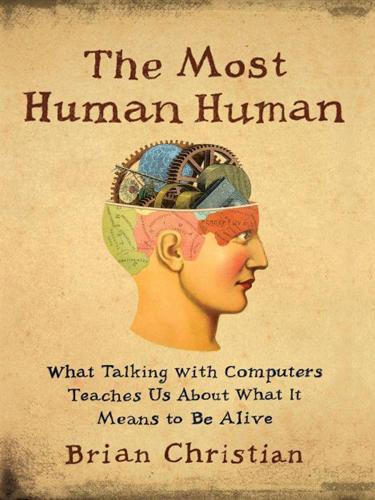
The Most Human Human: What Talking With Computers Teaches Us About What It Means to Be Alive
by
Brian Christian
Published 1 Mar 2011
A guy can’t catch a break—or more accurately might be he can’t get someone else to catch his breaks. Somehow the timing ballet that feels like second nature in person seems consistently—here, and as a general rule—to break down over the phone. I do the best I can, but it feels, somehow, solitary— Computability Theory vs. Complexity Theory The first branch of computer science theory was what’s come to be known as “computability theory,” a field that concerns itself with theoretical models of computing machines and the theoretical limits of their power. It’s this branch of theory in which Turing made some of his greatest contributions: in the 1930s and ’40s, physical computing machines were so fledgling that it made sense to think idealistically about them and the purely theoretical extents and limits of their potential.
…
The two operations are both perfectly computable, but the second happens to be exponentially slower—making it intractable. This is what makes online security, and online commerce, possible. The next generation of computer theorists after Turing, in the 1960s and ’70s, began to develop a branch of the discipline, called complexity theory, that took such time-and-space constraints into account. As computer theorist Hava Siegelmann of the University of Massachusetts explains, this more “modern” theory deals not only “with the ultimate power of a machine, but also with its expressive power under constraints on resources, such as time and space.”
…
But note that the idealized form of language which Chomsky makes his object of study explicitly ignores “such grammatically irrelevant conditions as memory limitations … [and] actual performance.” In other words, Chomsky’s theory of language is the computability theory of Turing’s era, not the complexity theory that followed. Very similarly idealized, as it happens, are chatbots’ models of language. Yet it turns out—just as it did in computer science—that there’s a tremendous amount happening in the gap between the “ideal” process and the “actual performance.” As a human confederate, I planned to make as much of this gap as possible.

Boom: Bubbles and the End of Stagnation
by
Byrne Hobart
and
Tobias Huber
Published 29 Oct 2024
And what he saw was a time nexus within this cave, a boiling of possibilities focused here, wherein the most minute action—the wink of an eye, a careless word, a misplaced grain of sand—moved a gigantic lever across the known universe. He saw violence with the outcome subject to so many variables that his slightest movement created vast shiftings in the pattern.” Herbert, Dune (London: Hodder, 2015), 375. 345 Sornette, Why Stock Markets Crash; Sornette, “Nurturing Breakthroughs: Lessons from Complexity Theory, ” Journal of Economic Interaction and Coordination 3, no. 2 (2008): 165. 346 Derek de Solla Price was one of the first to describe scientific progress in terms of super-exponential growth. Given this growth trajectory, he concluded that within a century scientific progress would reach “doomsday” and stagnation, since “all the apparently exponential laws of growth must ultimately be logistic.”
…
: The Phenomenon of the Declaration of Closure in a Discipline.” History of Science 37, no. 4 (1999). Solow, Robert M. “A Contribution to the Theory of Economic Growth.” Quarterly Journal of Economics 70, no. 1 (February 1956): 65–94. https://doi.org/10.2307/1884513. Sornette, Didier. “Nurturing Breakthroughs: Lessons from Complexity Theory.” Journal of Economic Interaction and Coordination 3 (2) (2008): 165. Smil, Vaclav. Invention and Innovation: A Brief History of Hype and Failure. Cambridge, MA: MIT Press, 2023. Spengler, Oswald. The Decline of the West. Oxford: Oxford University Press, 1991. Stanley, Kenneth O., and Joel Lehman.
…
“Housing in the New Millennium: A Home Without Equity Is Just a Rental with Debt.” SSRN (June 29, 2001). http://dx.doi.org/10.2139/ssrn.1162456. Scott, James C. Seeing Like a State: How Certain Schemes to Improve the Human Condition Have Failed. New Haven, CT: Yale University Press, 2020. Sornette, Didier. “Nurturing Breakthroughs: Lessons from Complexity Theory.” Journal of Economic Interaction and Coordination 3, no. 2 (2008). Vernon, Austin, and Eli Dourado. “Energy Superabundance: How Cheap, Abundant Energy Will Shape Our Future.” The Center for Growth and Opportunity Policy Paper, June 2022. Wang, Dan. “Definite Optimism as Human Capital,” August 7, 2017, https://danwang.co/definite-optimism-as-human-capital/.
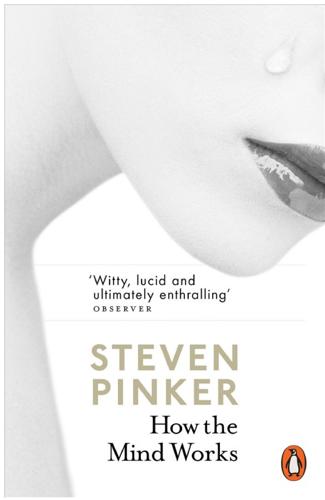
How the Mind Works
by
Steven Pinker
Published 1 Jan 1997
Stuart Kauffman, one of the movement’s leaders, suggested that feats like self-organization, order, stability, and coherence may be an “innate property of some complex systems.” Evolution, he suggests, may be a “marriage of selection and self-organization.” Complexity theory raises interesting issues. Natural selection presupposes that a replicator arose somehow, and complexity theory might help explain the “somehow.” Complexity theory might also pitch in to explain other assumptions. Each body has to hang together long enough to function rather than fly apart or melt into a puddle. And for evolution to happen at all, mutations have to change a body enough to make a difference in its functioning but not so much as to bring it to a chaotic crash.
…
“Punctuated equilibria” are not the same as macromutations: Dawkins, 1986; Gould, 1987, p. 234. 160 “Adaptive mutation”: Cairns, Overbaugh, & Miller, 1988; Shapiro, 1995. Problems with adaptive mutation: Lenski & Mittler, 1993; Lenski & Sniegowski; Shapiro, 1995. 160 Complexity theory: Kauffman, 1991; Gell-Mann, 1994. 161 Take a hike, Darwin: James Barham, New York Times Book Review, June 4, 1995; also Davies, 1995. 161 Limitations of complexity theory: Maynard Smith, 1995; Horgan, 1995b; Dennett, 1995. 162 Evidence for natural selection: Dawkins, 1986, 1995; Berra, 1990; Kitcher, 1982; Endler, 1986; Weiner, 1994. 163 Ascent of man: Bronowski, 1973, pp. 417–421. 164 Simulated evolving eye: Nilsson & Pelger, 1994; described in Dawkins, 1995. 165 Darwin-hating academics: Dawkins, 1982; Pinker & Bloom, 1990 (see commentaries and reply); Dennett, 1995. 165 Straw adaptationist: Lewontin, 1979. 166 Snagged seminal ducts: Williams, 1992. 166 Adaptationist advances: Mayr, 1983, p. 328. 167 Animal engineering excellence: Tooby & Cosmides, 1992; Dawkins, 1982, 1986; Williams, 1992; Griffin, 1974; Tributsch, 1982; French, 1994; Dennett, 1995; Cain, 1964. 168 The splendid camel: French, 1994, p. 239. 168 Howlers: Author’s reply in Pinker & Bloom, 1990.
…
If there are abstract principles that govern whether a web of interacting parts (molecules, genes, cells) has such properties, natural selection would have to work within those principles, just as it works within other constraints of physics and mathematics like the Pythagorean theorem and the law of gravitation. But many readers have gone much further and conclude that natural selection is now trivial or obsolete, or at best of unknown importance. (Incidentally, the pioneers of complexity theory themselves, such as Kauffman and Murray Gell-Mann, are appalled by that extrapolation.) This letter to the New York Times Book Review is a typical example: Thanks to recent advances in nonlinear dynamics, nonequilibrium thermodynamics and other disciplines at the boundary between biology and physics, there is every reason to believe that the origin and evolution of life will eventually be placed on a firm scientific footing.
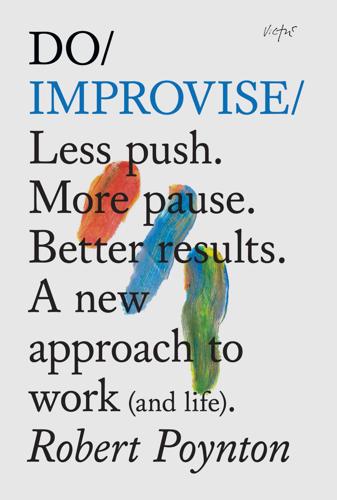
Do Improvise: Less push. More pause. Better results. A new approach to work (and life) (Do Books)
by
Poynton, Robert
Published 14 May 2013
Every now and then something happens, apparently by chance, that sparks off a cascade of connections and insights I could never have anticipated. It is a glorious feeling. The first of these was when I met Gary Hirsch, in Portland, Oregon. We met to talk about his art, but he happened to make a few passing comments about improv. Odd though it may seem, in an instant I connected what he was saying to complexity theory. I had been studying the science of complexity and adaptive systems for years, because I felt it held great promise for changing the way we think about organisations and creativity. The trouble was I couldn’t explain it for toffee. Improv, by contrast, was something I could use. A business, a great friendship and everything else I have written about followed.
…
50–2 listening intently 55–6 one-way/two-way 43–4 presentations 39, 44–58 trust the driver 48 what is expected of the audience; what are they going to have to do? 49 what is the audience going to get as a result of listening? 50 ‘whites of the eyes’ 46 who am I (the speaker) beyond labels? 48–9 your own baggage (shadow story) and 42 complexity theory 118 ‘connective tissue’ 99 control: changing attitudes towards 116–17 companies which give employees 121–3 exerting influence without 31 imposing in areas where it isn’t appropriate 9, 11 as neither sensible or desirable 30 new ideas and 79§ paying attention to what you can 12, 52, 113–14 creativity 65–88 all creativity is co-creativity 85–6 and solving future world problems 66 creative doing, not creative thinking 72–6 creative process 67 ‘creativity is the new literacy’ 85 embracing constraint and 80–6 Game: Object Taps 87–8 importance of 66, 85–6 importance of play 69–72 ‘last letter, first letter’ 80, 81 popular image of 66–8 putting flow first 77–80 sets humans apart 85 Csikszentmihalyi, Mihaly 66 ‘Dance Your Ph.D’ (TED talk) 76 discomfort, accepting 10, 94, 96 eatbigfish 20, 138 Edison, Thomas 102 education 30, 114 either/or, seeing things as 114 Everything’s An Offer (EAO) 17, 18 ‘Facebook effect, the’ 23 ‘fit and well’ 35, 102 Fleming, Alexander 70 flexibility 90–1, 107, 121 future-proof 30, 101 games, killer 12–13, 27–8, 32, 33–8, 59–64, 78, 79, 81–2, 87–8, 99, 108–11, 112, 117, 118, 120, 125–37, 138 see also under individual game name General Motors 103 Gore Associates 121 Heifetz, Professor Ronald 107 Hirsch, Gary 27, 38, 45–6, 49, 61, 71, 88, 111, 118 Hollywood 67, 89, 93–4 Honda 122–3 ideas, generating new 10, 12, 70, 87, 88, 113 acting first 72–6 constraint and 80–6 creating a flow of 31 finding in areas your competitors don’t notice 20, 21, 22–5 flow and 77–80 games and see games in spite of how things are organised, not because of them 116 leaders and see leadership new ideas as combinations of old ones, re-expressed 14 play and 69–72 practice and 94, 95, 96 re-designing organisations and 121 using other people’s 98–100 IDEO 75 IKEA 28, 102–3, 111 image bank 85 improv in action 112–24 analysis, nature of 113–15 building into the design of an organization 119–23 education and 114 either/or ‘yes, and...’ 114 enthusiasm for taking things to pieces and 115–16 journeys and 115 order without control 113, 116–17 planning and 114–15 improv theatre 31, 112, 119 improvisation, nature of 8–13 incorporations (game) 135–7 intuition/hunch 30, 100, 101, 115, 123 journeys, improv and 115 Kamprad, Ingvar 28, 102–3 Keating, David 42–3 Kelleher, Herb 85 knee-jerk conclusions/reaction, resisting 18, 23–4 Kranz, Gene 100 leadership 89–111 accepting discomfort and 94, 95 distributed 91–2 ‘fit and well’ 102 flexibility and 107 fluid approach to 90–1 focus on your own experience 93 Game: Swedish Story 108–11 intuition/hunch and 100, 101, 123 level of trust in 99 looking for offers 101–3 mistakes and 93–4, 95, 102–3 new ideas and 98–9 no single leader 89–92 paying attention to others and 97–8, 99–100 practice and 93, 94–6 presence and 96–7 status and 104–6 value ‘connective tissue’ 99 Let Go 15, 16, 17, 18, 22–5, 29, 34–5, 55, 56, 70, 84, 91, 96, 101, 117, 119, 122, 125, 127, 129 listening 20, 21, 29, 41, 42, 44, 45, 47, 48, 49, 55–6, 60, 62, 81, 96–8, 107 Mandela, Nelson 97 Michelangelo 79 mistakes 26, 27, 54, 93–4, 95, 101, 102–3, 105, 113, 114–15, 123, 127 Morgan, Adam 20, 42, 51 Morning Star 121–2 Nike 48 ‘no’, saying 28, 42, 51, 54 Notice More 15, 16, 17, 18–22, 35, 81, 96–7, 119 Object Taps (game) 87–8 offer/offers: blocking 37, 40–2, 54, 56–7, 58, 59, 61, 62, 63, 64, 76, 78–80, 103, 120 errors and mistakes as 26–8, 103 Everything’s An Offer (EAO) 16, 17, 18, 26, 102–3 failure and breakdowns as 28–9 seeing objections as 56–7, 101–3 On Your Feet 38, 49, 71, 82, 84, 119, 122 One to Twenty (game) 125, 131–4 Pascale, Richard 122–3 paying attention 19, 22, 24, 96–8, 99–100 Pert, Candace 22 planning 9, 51–2, 62, 63, 81, 113, 114–15 practice, improvisational 12, 13, 14–31 Let Go 15, 16, 17, 18, 22–5, 29, 34–5, 55, 56, 70, 84, 91, 96, 101, 117, 119, 122, 125, 127, 129 Notice More 15, 16, 17, 18–22, 35, 81, 96–7, 119 Presents (game) 33–8, 62, 63, 111, 129 Use Everything 15–16, 17, 18, 26–9, 96, 119 presentations 39, 44–58 Presents (game) 33–8, 62, 63, 111, 129 Robinson, Sir Ken 85, 86 Rodriguez, Robert 28 Roshi, Suzuki 27 Rosling, Hans 53 SCRUM 119 Semco 121 senses 18–21, 76, 96 shadow story 24–5, 42, 56 Sloan, Alfred 103 software engineers 119–20 Southwest Airlines 85 status 49, 104–6, 107 storyteller improv games 27–8, 99, 108–11 Swedish Story (game) 108–11 taking things to pieces, enthusiasm for 8, 18, 29, 30, 113, 115–16 TED talks 53, 76 3M 121 Toyota Production System 91 Twain, Mark 54 Use Everything 15–16, 17, 18, 26–9, 35, 96, 119 Wake Wood (film) 42–3 weak signals 99–100 ‘whites of the eyes’ 46 ‘Yes, and’ (game) 59–64, 78 ‘yes, and...’, seeing things as 11, 42, 98, 114, 120 Published by The Do Book Company 2013 Works in Progress Publishing Ltd www.thedobook.co Text copyright © Robert Poynton 2013 Illustrations copyright © Andy Smith 2012 The right of Robert Poynton to be identified as author of this work has been asserted by him in accordance with the Copyright, Designs and Patents Act 1988 All rights reserved No part of this publication may be reproduced, stored in or introduced to a retrieval system, or transmitted in any form or by any means (electronic, mechanical, photocopying, recording or otherwise) without the prior written permission of the publisher.

We-Think: Mass Innovation, Not Mass Production
by
Charles Leadbeater
Published 9 Dec 2010
David, ‘From Keeping “Nature’s Secrets” to the Institutionalization of “Open Science”‘, in Rishab Aiyer Ghosh (Ed.), Code (Cambridge, MA/London: MIT Press, 2005) 30 Alessandro Nuvolari, ‘Open Source Software Development: Some Historical Perspectives’, Eindhoven Centre for Innovation Studies Working Paper 03.01 (2003); Koen Frenken and Alessandro Nuvolari, ‘The Early Development of the Steam Engine: An Evolutionary Interpretation Using Complexity Theory’, Eindhoven Centre for Innovation Studies Working Paper 03.15 (2003) Chapter 3 1 Andrew Brown, In the Beginning Was the Worm (Pocket Books, 2003) 2 Eric S. Raymond, The Cathedral and the Bazaar (O’Reilly, 2001) 3 Doc Searls, ‘Making a New World’, in Chris DiBona, Danese Cooper and Mark Stone (Eds), Open Sources 2.0 (O’Reilly, 2006) 4 Glyn Moody, Rebel Code: Linux and the Open Source Revolution (Penguin, 2002) 5 Like many radical innovations Linux is not as revolutionary as it first seems.
…
Available from http:// www.essex.ac.uk/chimera/content/pubs/wps/ CWP-2005–02-Blogging-in-the-Knowledge-Society-MB.pdf Bragg, Melvyn, The Routes of English (BBC Factual and Learning, 2000) Bragg, Melvyn, The Adventure of English (Hodder & Stoughton Ltd, 2003) Brown, Andrew, In the Beginning Was the Worm (Pocket Books, 2003) Brown, John Seely, and Paul Duguid, The Social Life of Information (Boston, MA: HBS Press, 2000) Bush, Vannevar, ‘As We May Think’, Atlantic Monthly, July 1945. Available from http://www.theatlantic.com/ doc/194507/bush Byrne, David, Complexity Theory and the Social Sciences (Routledge, 1998) Castells, Manuel, The Rise of the Network Society (Malden, MA: Blackwell, 1996) Castells, Manuel, and Pekka Himanen, The Information Society and the Welfare State (Oxford University Press, 2002) Chesbrough, Henry, Open Innovation (Boston, MA: HBS Press, 2003) Chesbrough, Henry, Wim Vanhaverbeke and Joel West (Eds), Open Innovation: Researching a New Paradigm (Oxford University Press, 2006) Christensen, Clayton M., The Innovator’s Dilemma (Boston, MA: HBS Press, 1997) Clippinger III, John H.
…
Lakhani (Eds), Perspectives on Free and Open Source Software (Cambridge, MA: MIT Press, 2005) Ferris, Timothy, Seeing in the Dark (New York: Simon & Schuster, 2002) Flichy, Patrice, The Internet Imaginaire (Cambridge MA: MIT Press, 2007) Florida, Richard, The Rise of the Creative Class (New York: Basic Books, 2002) Florida, Richard, The Flight of the Creative Class (New York: HarperBusiness, 2005) Frayn, Michael, Copenhagen (Methuen, 2003) Frenken, Koen, and Alessandro Nuvolari, ‘The Early Development of the Steam Engine: An Evolutionary Interpretation Using Complexity Theory’, Eindhoven Centre for Innovation Studies Working Paper 03.15 (2003) Garud, Raghu, Arun Kumaraswamy and Richard N. Langlois (Eds), Managing in the Modular Age (Malden, MA: Blackwell, 2003) Gawer, Annabelle, and Micheal A. Cusumano, Platform Leadership: How Intel, Microsoft and Cisco Drive Industry Innovation (Boston, MA: HBS Press, 2002) Ghosh, Rishab Aiyer (Ed.), Code (Cambridge, MA/London: MIT Press, 2005) Gillmor, Dan, We the Media (Farnham: O’Reilly, 2004) Gladwell, Malcolm, The Tipping Point (Little, Brown, 2000) Granstrand, Ove (Ed.), Economics of Technology (Amsterdam/London: North-Holland, 1994) Gratton, Lynda, The Democratic Enterprise (Harlow: Pearson, 2004) Gray, Matthew, ‘Web Growth Summary’, www.mit.edu.

Skin in the Game: Hidden Asymmetries in Daily Life
by
Nassim Nicholas Taleb
Published 20 Feb 2018
The mere sight of these books reminds me of a lunch with a former member of the Federal Reserve Board, the kind of thing to which one should never be subjected more than once per lifetime. So I will dispatch the topic of torts in a few lines. As we intimated in the first paragraphs of the introduction, some nonsoporific topics (pagan theology, religious practices, complexity theory, ancient and medieval history, and, of course, probability and risk taking) match this author’s naturalistic filter. Simply: if you can’t put your soul into something, give it up and leave that stuff to someone else. Talking about soul in the game, I had to overcome some shame as follows. In the Paris episode of Hammurabi at the Louvre, when I stood in front of the imposing basalt stele (in the room with Koreans with selfie sticks), I felt uneasy not being able to read the stuff and having to rely on experts.
…
And, as the anthropologist David Graeber has observed, even the investment bank Goldman Sachs, known for its aggressive cupidity, acts like a communist community from within, thanks to the partnership system of governance. So we exercise our ethical rules, but there is a limit—from scaling—beyond which the rules cease to apply. It is unfortunate, but the general kills the particular. The question we will reexamine later, after deeper discussion of complexity theory, is whether it is possible to be both ethical and universalist. In theory, yes, but, sadly, not in practice. For whenever the “we” becomes too large a club, things degrade, and each one starts fighting for his own interest. The abstract is way too abstract for us. This is the main reason I advocate political systems that start with the municipality, and work their way up (ironically, as in Switzerland, those “Swiss”), rather than the reverse, which has failed with larger states.
…
and Skin in the game prevents systems from rotting. THE STATIC AND THE DYNAMIC Visibly, a problem with economists (particularly those who never took risk) is that they have mental difficulties with things that move and are unable to consider that things that move have different attributes from things that don’t. That’s the reason complexity theory and fat tails (which we will explain a few pages down) are foreign to most of them; they also have (severe) difficulties with the mathematical and conceptual intuitions required for deeper probability theory. Blindness to ergodicity, which we will begin to define a few paragraphs down, is indeed in my opinion the best marker separating a genuine scholar who understands something about the world from an academic hack who partakes of ritualistic paper writing.

The Long Boom: A Vision for the Coming Age of Prosperity
by
Peter Schwartz
,
Peter Leyden
and
Joel Hyatt
Published 18 Oct 2000
We've built some extremely complex systems, such as the global marketplace, that already work on these letting-go principles, and we've built some powerful tools to help us master these principles. We now have computers capable of tracking billions of functions at a time, and we have intellectual and mathematical models, like complexity theory, to carry the insights of nature into our realm. Complexity theory was born in the attempt to track the complex gyrations of the mushroom clouds of atomic explosions, where billions of independent variables all come together. But since the 1980s, complexity theory has evolved to try to apply to human systems like market behavior and global economics. Much of the early work was done in more offbeat places like the Santa Fe Institute, but now the theory has gone mainstream—and it looks as if its influence will only grow.
…
See microprocessors Connections, See Networks Christian Democratic coalition, 94, Control vs. complexity, 263-265 113 Copernicus, 212 Chrysler, 60, 175 Corporations, 2, 42-45, 121 Citibank, 262 Climate change Corruption, 114-115, 126 COX2, 190 developing vs. developed worlds, 157-159 Crime, 285-286 floods, 150 Culture preservation, 234 forest fires, 150-151 Cuyahoga River, 156 global warming, 10, 152-154 Cyberspace libraries, 89 Hurricane Andrew, 149,150 Cystic fibrosis, 198 Hurricane Mitch, 150 overview, 148-154 Daimler-Benz, 60,171, 174 pollution in China, 158-159 D'Alema, Massimo, 94 regional weather problems, 151 Dark matter, 213 tornadoes, 151 Databases, 215-216 United Nation's Conference on Decentralization Climate Change, 157 personal computers and, 19, 26 Clinton, President Bill, 41, 52, 76, ragtag computer techies fostering, 92, 121 28-30 Cloning, 195-199 of telecommunications, 22,178 Club of Rome, 162 of utilities industry, 178-181 Coal, 158-159 Defense Advanced Research Projects Coca Cola, 112 Agency (DARPA), 50 Code of honor, 28-30 Delphi Energy & Engine Cold fusion, 219-220 Management Systems, 176 Cold War, 48, 49, 134-135, 22 Deming, W, Edwards, 119 Colorado, 267 Democracy Communism, 40, 116, 262 free markets and, 111-112, 115 Compassionate conservatism, 274 growth of middle class and, 235 Complexity theory, 263-265 media freedom in, 114 Computers rule of twos in, 112-114 economic decentralization and, in Singapore, 269 19, 26, 28-30 transparency rule, 114-115 impact of, 189-190 women in, 250 326 Democratic Party, 76-77 Democrats of the Left, 92 Deng, Xiaoping, 48, 116 Depression, 51-52 Deregulation of European businesses, 93 of U.S. businesses, 41 of utilities industry, 178,180-181 in Washington consensus, 96 Detroit Edison, 178 Digital technologies, 25-26 Diversity, 248, 273 DNA, 188-189, 197-198 Dolly, 195 Dow Jones Industrial Average, 47, 92 Downsizing, 42, 93 Drake, Frank, 220 Drake's equation, 220 Drexler, Eric, 203-204, 208 Dust Bowl, 149 Earth Day, 160 Earth Summit, 157 East vs.

The Case for Space: How the Revolution in Spaceflight Opens Up a Future of Limitless Possibility
by
Robert Zubrin
Published 30 Apr 2019
But putting that aside, a larger problem is that, while necessary for life, stars could readily exist in universes having a much broader set of parameters than those which life requires. For example, life as we know it requires the existence of carbon, with all its peculiar characteristics that enable complex organic chemistry. Stars have no such requirement. So, let me advance a hypothesis of my own, which is based on complexity theory. According to such theory, as set forth in other contexts by thinkers like Santa Fe Institute philosopher Stuart Kauffmann, order arises spontaneously in systems when A causes B and B causes A (or A causes B which causes C which causes D which causes A).20 The free market works like this. Farmers grow crops that other people want to buy.
…
See carbon dioxide colonization of asteroids, 131–35, 142–43 chemistry for space settlers of, 150 leading to new types of societies, 143–45 list of what needs to be done, 327–34 of Mars, plate 7, 101–23 chemistry for space settlers of, 146–50 commercial benefits of, 114–17 “Dragon Direct” plan, 108 habitation module, plate 5 leading to a human asteroid mission, 131–32 as new frontier for humanity, 277–79, 316 as a public-private enterprise, 328 raising families on Mars, plate 8 use of greenhouses, 101, 113, 115, 278 of the moon, 69–99 achieving long-range mobility on, 80–81 chemistry for space settlers of, 145–46 energy sources, 82–91 phases of Moon Direct program, 75 as a public-private enterprise, 317 range and lunar accessibility of an LEV, 81 sending solar energy back to earth, 82–83 use of microwaves to extract water vapor, 79 need for low cost spaceflight, 25–26 Noah's Ark Eggs (seed spaceships), 209–14 of outer solar system Jovian system, 166–70 obstacles to settling, 173–74 Saturn system, 160–65, 173 reasons for pursuing for the challenges, 271–86 for the future we can create, 315–25 to gain more freedom, 301–25 for the knowledge gained, 249–69 for survival of humanity, 287–99 terraforming other worlds, 215–45 time needed for interstellar civilizations to spread, 266–67 vision of for the year 2069, 317 vision of for the year 3000, 319–24 Columbus, Christopher, 174, 182, 208, 316, 328 comets, 129, 130, 151, 170, 171, 195–96 commercial benefits of spaceflight, 66–68 on asteroids, 136–40 commercial energy system in space, 57–60 communications and data satellites, 51–56 CubeSat revolution, 54–56 fast global travel on Earth, 40–43 on Mars, 114–17 orbital industries, 48–50 orbital research labs, 47–48, 50 of outer solar system, 161–62 commercial development of Titan, 162–65 Jovian system, 166–70 in the Kuiper Belt and Oort Cloud, 171–72 space business parks, 50–51 space tourism, 45–47 space triangle trade (Earth-Mars-asteroids), 140–42 See also mining Commercial Orbital Transportation Services (COTS), 330–31 Commonwealth Fusion Systems (CFS), 176–77 communications and data satellites, 23, 52–56, 63, 64, 65, 277 CubeSat revolution, 54–56 potential impact of on World War II, 61–62 “Compact Fusion Reactor” (CFR) project, 180 complexity theory applied to the universe, 262–63 computers, early, 233–34 constants, role of in physics, 260–61 Coons, Steve, 148 Coppi, Bruno, 176–77 Cosmic Microwave Background Surveyor, 251 cosmic rays, 104, 132, 135, 167, 192, 253, 259, 339 cost-plus contracting, 22–24, 330–31 COTS (Commercial Orbital Transportation Services), 330–31 Crèvecoeur, Jean de, 274 cryogenic hydrogen and oxygen, 102, 339–40 CT Fusion, 180 CubeSat revolution, 54–56 Curiosity rover (NASA), 13, 106 Customs and Border Protection (US), 138 Cygnus (constellation), 240 D.
…
See fusion Thiel, Peter, 179 thrust, 38, 143, 185–86, 188, 191, 193, 194, 296–97, 344 dipole drive thrust, 205, 206 of fission reactor propulsion, 143 of fusion reactor propulsion, 160, 161, 168, 179 use of high thrust FRC rockets to depart Jupiter, 179 of Interplanetary Transport System (SpaceX), 108 and magnetic sails, 202, 203, 204 and Noah's Ark Eggs (seed spaceships), 210 and Nuclear Electric Propulsion systems, 343 and nuclear thermal rockets, 343 and specific impulse, 45, 344 Titan (moon of Saturn), 152, 260 commercial development of, 162–65, 168 terraforming of, 223 Titan-Saturn ferry, 163–64 Titius, Johann Daniel, 125 Tito, Dennis, 33 TLI (translunar injection), 107, 110, 111 TMI (Trans-Mars injection), 77, 344 Tokamak Energy, 175–76, 176 tokamaks, 84, 344 defined, 176–77 spherical tokamak, 175–76, 176 spherical tokamak (ST), 180 See also fusion, entrepreneurial fusion revolution Tombaugh, Clyde W., 152 Toutatis (near-Earth object), 129 Transcontinental Railroad, 97, 97 Transiting Exoplanet Survey Satellite (TESS telescope), 244, 251 “Translife” mission, 31 translunar injection orbit (TLI), 107, 109, 110, 111 Trans-Mars injection (TMI), 77, 344 transorbital railroad, 93–97 Tri-Alpha Energy (TAE), 177–78, 178 Triton (moon of Neptune), 152, 237 Tsiolkovsky, Konstantin, 316 Tumlinson, Rick, 138, 332 Turner, Frederick Jackson on importance of having a frontier to conquer, 272–73 Twigg, Robert, 54 two-stage rocket systems, 39–45 payloads for one and two stage reusable rockets, 42 types of civilization. See civilizations, types of Ulam, Stanislaw, 186 United Launch Alliance (Lockheed Martin-Boeing), 35 comparison of space launch systems, 36 universe, why it is an ultimate mystery, 260 complexity theory, 262–63 universes born within black holes, 262 University of Rochester/Sandia Lab project, 180 Uranus, 125, 181, 200, 239 discoveries of, 152 exploration spacecraft to, 153 moons of, 152 solar system energy resources of, 159 statistics on getting to and back from, 162 Van Allen, James, 166 Vancouver Sun (newspaper), 228–29 vapor pressure, 344 Vector Launch, 12, 37–38 Vector-H microsatellite launcher, 36 Vector-R microsatellite launcher, 36, 37 Vega (star), 240, 244 Velcro as a space-program spin-off, 284 Venrock, 177 Venus IKAROS solar sail spacecraft flying to, 197 NASA and Soviet probes reaching, 220 terraforming of, 220–23 water on, 221–22 “young Venus,” 222, 223 Verne, Jules, 318 Vesta (asteroid), 125, 130 Viking mission (NASA), 119, 153 Virgin Group, 29, 53 Virgin Galactic, 12, 29–30, 38, 42, 43 virtual reality allowing visits to space, 98–99 von Braun, Wernher, 296, 332 Von Neumann, John, 231 Voyager missions (NASA), 154, 167, 168, 181, 183, 184 Voyager 1, 152–53 Voyager 2, 153 wars belief in inevitability of, 305–309, 309 use of space power to deter, 60–66 War with the Newts, The (Čapek), 212 water on asteroids, 130, 131, 140, 142–43, 294, 297 on Jupiter's moons, plate 10, 153–54, 167 Kepler mission finding, 242 in Kuiper Belt, 170, 171 on Mars, 14, 101, 102–103, 105–106, 109, 113–15, 117, 118, 120, 146–49, 218, 222, 297 on the moon, 13, 55, 69, 70, 73, 75–76, 79, 79, 81, 91–92, 145–46 nuclear salt-water rocket, 187–88, 187 in Oort cloud, 171 reverse water-gas shift reaction, 147–48, 149 on Saturn's moons, 155–56, 157, 163, 164, 165 use of in fusion, 142–43 on Venus, 221–22 water vapor, 13 on Mars, 117, 218 on the moon, 79, 79 on Venus, 222 Webb, Walter Prescott, 271 Webb space telescope, 201, 251 Wellcome Trust, 177 WFIRST (WideField InfraRed Space Telescope), 251 Whitmire, Daniel, 202 Whyte, Dennis, 177 WideField InfraRed Space Telescope (WFIRST), 251 Williams, John, 148 WorldVu (aka OneWeb), 53 World War II, 64–65 impact present technology could have had on, 61–62 lead-up to, 305–309 Wyler, Greg, 53 XPRIZE Foundation, 29 Young, Larry, 133 zero-gravity.
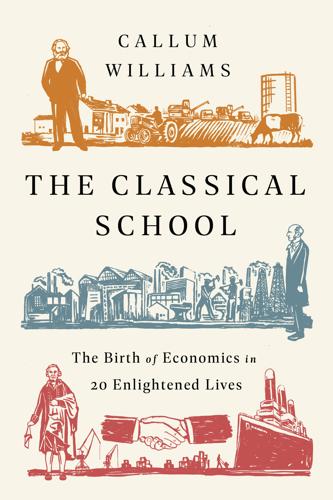
The Classical School
by
Callum Williams
Published 19 May 2020
In 1963 Thomas Sowell wrote a long paper that explained Malthus’s supposed position in torturous detail. But one can understand Malthus in roughly the following way. He disagreed with Say, arguing that his theories were “utterly unfounded”. He disagreed with Ricardo, who had also come up with a complex theory explaining why depressions were not possible. Malthus did not have Ricardo’s gift for abstract theorising–if you can call it a “gift”–but it was obvious to him that the economy was not self-correcting. He just looked out the window. According to Keynes, Malthus explained the “formidable” weakness of the economy as a problem of “the insufficiency of effective demand”.
…
We have what you could call the “pamphleteer Marx”, who co-wrote the Communist Manifesto with his sidekick, Friedrich Engels, in 1848, and who delivered rousing speeches to left-wing groups across Europe. Then we have what you can call the “British Library Marx”, a man who spent hours a day by himself, critiquing the works of political economists such as David Ricardo and Adam Smith. The “British Library Marx” came up with complex theories about how capitalism had evolved, and where it was going next. Understanding Marx’s thought is especially difficult because he changed his mind over the course of his life. Ideas that are raised in early books do not make it into later ones. Some philosophers delineate between a “young”, optimistic Marx and an “old”, pessimistic Marx.
…
The classical political economists tried to cram everything they knew into a beautiful, overarching theory that would, in time, benefit from formal mathematical analysis. Marshall, despite being the best mathematician in this book, steered economics back towards its empiricist roots. Bagehot had remarked in 1876 that political economy “lies rather dead in the public mind”. People were fed up with complex theories that treated humans like automatons and which suggested that a sustained improvement in living standards was impossible. Marshall came along and offered a more positive story. Economists could, he said, help to effect positive social change. They just had to get their hands dirty. “[O]nce Marshall had become the leading British economist”, says Jacob Viner, it was no longer “a common charge against economics that… all that it asked of men ‘is that they should harden their hearts’… the question of whether humane men could be devotees of the dismal science had ceased to be a live one”.
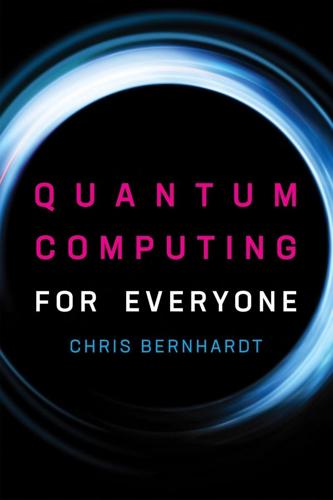
Quantum Computing for Everyone
by
Chris Bernhardt
Published 19 Mar 2019
We also prove some amazing results concerning superdense coding, quantum teleportation, cloning, and error correction. Chapter 8. This is probably the most challenging chapter. In it we look at some quantum algorithms and show how quickly they can compute an answer compared to classical algorithms. To talk about the speed of algorithms we need to introduce various ideas from complexity theory. Once we have defined something called query complexity, we study three quantum algorithms and show that they are faster with respect to this type of complexity than their classical counterparts. Quantum algorithms exploit the underlying structure of the problem that is being solved. It is much more than just the idea of quantum parallelism—putting the input into a superposition of all possible states.
…
The other question that we need to address is this: How many times do we need to run the quantum circuit? As we pointed out, in the worst-case scenario, we can keep running our qubits through the circuit and never get any useful information. However, this is extremely unlikely. We examine this idea in more detail in the next section. Complexity Classes In complexity theory, the main classification is between problems that take polynomial time to solve and those that need more than polynomial time. Polynomial time algorithms are regarded as being practical even for very large values of n, but non-polynomial time algorithms are regarded as being infeasible for large n.
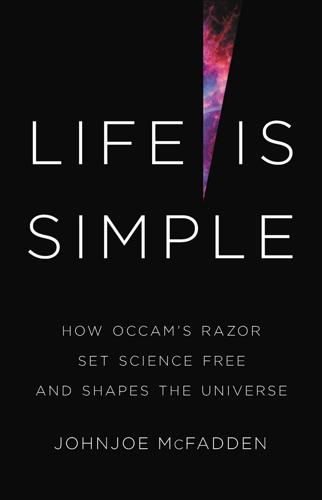
Life Is Simple: How Occam's Razor Set Science Free and Shapes the Universe
by
Johnjoe McFadden
Published 27 Sep 2021
Boyle doesn’t identify who the ‘true philosophers’ were, but in another passage refers ‘to the generally owned rule about hypotheses, that “entia non sunt multiplicanda absque necessitate”’.20 You don’t need to understand Latin to recognise the edge of Occam’s razor. All of Boyle’s remaining criteria, in one way or another, look for simple solutions. His seventh principle states that ‘To frame a Hypothesis, one must see First, that it clearly Intelligible be.’ Comprehensible theories tend to be simple; and, conversely, errors in complex theories, such as alchemy, usually become apparent when they are explained in the simplest possible terms. Descartes had made a similar point, insisting that ‘a conception which springs from the light of reason alone; it is more certain than deduction itself, in that it is simpler.21 Boyle’s eighth principle comes with its own parsimonious razor.
…
Boyle, like Occam, insisted that scientists should select the simplest theories that fit their data. Boyle’s simplicity criterion was absorbed into the science promoted by the Royal Society and from there incorporated into the modern scientific method. It remains with us today, though its origin is seldom acknowledged or even realised. Ask any scientist whether they would support a complex theory that accounts for their data when a simple one does the job just as well. They may pause for a moment to think, and ask you additional questions, such as whether you mean all the data; but, so long as you reply, ‘Yes, all the available data’, then they will concede that they always opt for the simplest explanation that accounts for all of the data.
…
As the Nobel Prize-winning chemist Roald Hoffmann put it, Planck followed ‘the logic, an Occam’s Razor logic, to the quantum hypothesis’.2 Of course, Max Planck cited neither William of Occam nor his razor in his revolutionary paper. He did not need to. By this time, all scientists took their preference for simple solutions for granted despite the fact that most would have been hard-pressed to justify it. Opting for a complex theory when a simpler one will do the job is, to any modern scientist, simply unscientific. Yet, as we have discovered, this steadfast preference for simplicity within science is a relatively recent innovation and owes everything to William of Occam who blew away the dusty cobwebs of medieval doctrine to provide space for a leaner and sharper science.

Everything Bad Is Good for You: How Popular Culture Is Making Us Smarter
by
Steven Johnson
Published 5 Apr 2006
The postmodern assumption of a "constructed reality" goes nicely with the idea of con sciousness as a kind of artificial theater and not a direct apprehension of things in themselves. Semiotics and struc turalism both have roots in Levi-Strauss's research i nto uni versal mythology, which obviously has deep connections to the proj ect of evolutionary psychology. And De Landa has a mply demonstrated the fundamental alli ance between Deleuzian philosophy and complexity theory, an alliance that goes back to Deleuze's interest in the work of Nobel laureate (and founding co mplexity theori st) IIya Prigogine. And so i n climbing the l adder of consilience , we can't af ford to draw an arbitrary line at the sciences; too many pro ductive connections exist. If McLuhan is right and media are extensions of our central nervous system, then we need a theory of the central nervous system as much as we need a theory of medi a ; if the network technology we ' re creating N O T E S O N F U RT H E R R E A D I N G 2 09 takes the form of self-organizing systems, then we need the tools of complexity theory to make sense of those networks.
…
If McLuhan is right and media are extensions of our central nervous system, then we need a theory of the central nervous system as much as we need a theory of medi a ; if the network technology we ' re creating N O T E S O N F U RT H E R R E A D I N G 2 09 takes the form of self-organizing systems, then we need the tools of complexity theory to make sense of those networks. But neither should we grant the sciences a de facto su premacy over the other levels in the interpretative model. In this book 's argument, neuroscience arrives at several key points to explain the interaction between media and mind, but it's certainly not correct to describe my argu ment as ul ti mately reducing everything down to the firing of neurons.
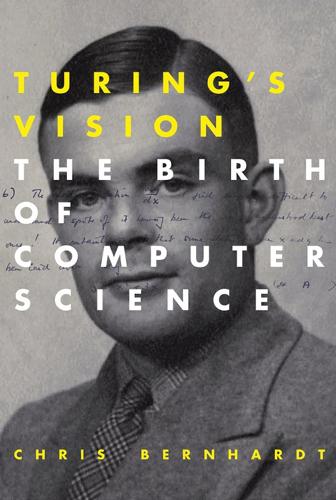
Turing's Vision: The Birth of Computer Science
by
Chris Bernhardt
Published 12 May 2016
In fact, there is a million dollar prize offered by Clay Mathematics Institute for the first person to give a proof of whether or not P is the same set as NP, some people conjecture that the set of problems that quantum computers can solve in polynomial time contains all of P and also some problems not in P, but not all of NP. But this is a conjecture. The proof would have to show that P is not equal to NP. This area of the theory of computation dealing with the amount of time and storage needed to do computations based on the size of the input is known as complexity theory. These questions are not just of theoretical interest, but have important practical applications. Much of internet commerce requires secure ways of encrypting information. However, many of the current methods of encryption are based on methods that are conjectured, but not proven, to be exponentially difficult to crack.
…
J., 124 Brown, Gordon, 161 Busy beaver function, 119 Canonical systems, 62 Cantor, Georg, 12, 108, 111, 123 Cantor’s Theorem, 132 CAPTCHA (Completely Automated Public Turing Test To Tell Computers and Humans Apart), 158 Cardinality, 124 computations, 140 real numbers, 136 Cells, 25, 43 Cellular automata, 82 Central Limit Theorem, 1 Central processing unit, 98 Chinese Room Argument, 158 Church, Alonzo, 16, 24, 62, 63, 71, 148 Church-Turing thesis, 61–62 Clay Mathematics Institute, 66 Code breaking, 147, 150, 153, 160 Collatz function, 80–81 Colossus, 153 Compiler, 98, 105, 156 Complement of a language, 33, 40 Complexity theory, 66 Computable function, 59, 120 Computable numbers, 141 Computational power, 12, 25, 63, 71, 101 Computing Machine Laboratory, 147, 153, 160 Concatenation, 38, 91 Configurations, 43, 46 Continuum hypothesis, 22, 139 Control unit, 98 Conway, John, 164 Cook, Matthew, 86, 103 Copeland, Jack, 160, 163 Correspondence problem.
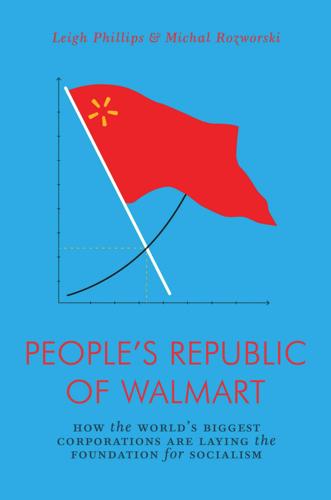
The People's Republic of Walmart: How the World's Biggest Corporations Are Laying the Foundation for Socialism
by
Leigh Phillips
and
Michal Rozworski
Published 5 Mar 2019
It is this second sort—an uncountable infinity—that Murphy says describes the full set of prices needed to engage in planning. Essentially, Cockshott, Cottrell, Marciszewski, Murphy and a handful of others had revived the long-dormant calculation debate but recast it as a problem for the field of computational complexity theory, a branch of theoretical computer science that seeks to classify the inherent difficulty of different sorts of problems, and the resources needed to solve them. In the same way that neuroscientists have in recent decades stolen debates over the theory of mind away from philosophers, complexity theorists and computer scientists are stealing this debate away from economists and political scientists.
…
However, over the last two generations, a great many progressive thinkers (though certainly not all) have come from the academy, in particular from the humanities—history, law, philosophy, literature—and from the social sciences—sociology, anthropology, economics, political science. Any future Left that takes the question of planning seriously will also have to depend heavily upon talents from computer science, operations research, combinatorics and graph theory, complexity theory, information theory and allied fields. And the transformation needed if it is to be democratic, rather than technocratic, will have to be led by, not on behalf of, workers at Walmart, Amazon, Facebook and other transnationals. Humans have long relied on planning, from the simple distribution carried out by the first settled civilizations, to the complex calculations that undergird today’s corporate behemoths, to those rare instances, like war or disaster, when the rules of today’s complex economy are temporarily suspended and planning takes over on the grandest scales.
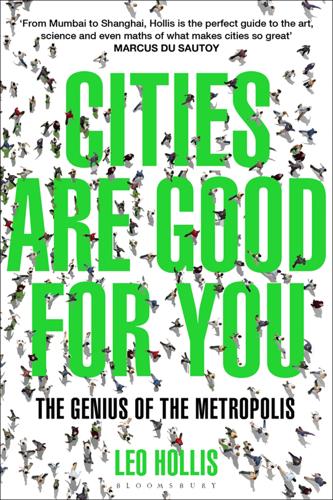
Cities Are Good for You: The Genius of the Metropolis
by
Leo Hollis
Published 31 Mar 2013
Thus he suggested that the world was made up of systems, groups of linked individuals who had a powerful impact on each other. The art of Complexity Theory, therefore, was to work out the original forms of the system and to calculate the particular dynamic that transformed them. Weaver’s work set out the template of the science of self-organised systems; in time, the ideas opened new avenues of enquiry in biology, technology, physics, cybernetics and chemistry. His fascination with systems became the language expressed in E. O. Wilson’s groundbreaking study of anthills and the development of his socio-biological ideas of the super-organism. Complexity Theory became central to the development of the packet-switch method that underpins the internet.
…
It also shows that a larger animal is likely to live longer than a small one: for while most animals die at between 1–2 billion heartbeats, a chicken heart beats 300 times a minute, an elephant’s only 30 times. Kleiber found a direct relationship between size and life expectation. In his research West refined Kleiber’s original laws and attempted to find out why they worked. In 2005 West was named president of the Santa Fe Institute, the mecca of study in Complexity Theory, set up in the 1980s to explore the connections between physics, mathematics, computation and evolutionary biology (the institute is so multidisciplinary that even the novelist Cormac McCarthy has a desk in the facility). There, West turned his focus on the nature of cities, perhaps the greatest self-organising organism of all; the results would gain him the honour of being named one of Time magazine’s ‘100 Most Influential People in the World’.

Cogs and Monsters: What Economics Is, and What It Should Be
by
Diane Coyle
Published 11 Oct 2021
There is a rapidly-growing body of research into digital platforms, although with plenty of gaps remaining to fill. Appreciating the feedbacks, the self-reinforcing (or self-averting) phenomena, is likely to require a different approach to modelling and analysis. There are examples of alternatives already being used by some economists, such as complexity theory (Arthur 2021; Hidalgo 2021), agent-based modelling (Gallegati and Kirman 2012; Richiardi 2016) and connectionism (Schulze 2010). All involve computer-based approaches rather than the algebraic analysis economists have typically used, and are increasingly being adopted in economics—without there yet being a single new paradigm to dethrone the existing mainstream.
…
Hicks, J., 1937, ‘Mr. Keynes and the “Classics”’; A Suggested Interpretation’, Econometrica, 5 (2), 147–159. Hicks, J. R., 1939, ‘The Foundations of Welfare Economics’, The Economic Journal, 49 (196), 696–712. Hicks, J., 1942, The Social Framework, Oxford: Clarendon Press. Hidalgo, C. A., 2021, ‘Economic Complexity Theory and Applications’, Nature Review Physics, 3, 92–113, https://doi.org/10.1038/s42254-020-00275-1. Hirschman, Daniel, 2016, ‘Inventing the Economy Or: How We Learned to Stop Worrying and Love the GDP’, PhD dissertation, University of Michigan, Ann Arbor, https://deepblue.lib.umich.edu/handle/2027.42/120713.

When More Is Not Better: Overcoming America's Obsession With Economic Efficiency
by
Roger L. Martin
Published 28 Sep 2020
In the Pareto distribution, an important dynamic is that the effect (having more followers) is the cause of still more of the effect (having still more followers), which causes yet more effect, and so on. Since Pareto’s time, many scholars have studied the dynamics and implications of Pareto distributions, including those who work in complexity theory, who note that Gaussian distributions aren’t the only ones that appear in nature. Pareto distributions do as well. A favorite example for complexity theorists is the collapsing sand pile. Imagine on the above Pareto graph, the number of grains of sand dropped on a pile is measured on the vertical axis and the effect of each sand grain on the horizontal axis.
…
Index AARP, 192 activist investors, 155, 158–159 adaptation, 82–83, 84, 103–106, 129–130, 142–143 AdSense, 154 Advanced Micro Devices, 129 Affordable Care Act, 92 agricultural workers, 192 Ahir, Hites, 82 almond industry, 73–75 Alphabet, 134 Amazon, 134, 192 American Dream, 2 American International Group (AIG), 137 analogic reasoning, 25–26 Anheuser-Busch InBev (ABI), 123–124 anomalies, 111–112 antitrust legislation, 53–56, 152, 153 Apple iOS, 131 Argyris, Chris, 167, 178 Aristotle, 183 Aspen Publishers, 77 AT&T, 53–54, 130–131 Atlanta testing scandal, 45–46, 53 Australia, 206 auto exports, 151 Avishai, Ellie, 171 Bain & Company, 175 balance, 183–184 balanced scorecard, 129 Bank Act (Canada), 139, 143 bank bailouts, 137–138 Bank Holding Company Act, 108 bankruptcies, 97–98, 137 banks, 137–142, 151 baseball, 101–102 Bass, Jo Ann, 116, 118 Belgium, 157 bell curve, 33, 72 See also Gaussian distribution Bernanke, Ben, 78, 79 bid-ask spreads, 55–56 Bieber, Justin, 65 Black Monday, 52 Blue Chip Economic Indicators forecast, 77–78, 82 bond market, 109–111 bond-rating agencies, 109–111 Boston Consulting Group, 175 Box, George, 25 boycotts, 189, 192 Bracken, Michael, 147–149 Bridgewater Associates, 31 Bristol University, 184 budgets, 124, 126, 173, 199–200 Buffett, Warren, 157 Bush, George W., 30 business adaptation in, 129–130 proxies in, 49–53 business executives, 113 agenda for, 115–135 backgrounds of, 120–121 reductionism and, 121–122 business models, 27–29 business schools, 32, 174–176, 180 business siloes, 32, 122 business strategy, 175–176 butterfly effect, 81 buycotts, 189, 192 buying groups, 192 buy recommendations, 112–113 cable TV, 130, 131 Canada antitrust policies in, 55 financial system of, 138–142, 151 metaphor for, 26 voter registration in, 205–206 capital efficiency, 97–99 capitalism, 4, 12 See also democratic capitalism discontent with, 12–13 survival of, 210 capital markets, 50, 55, 85, 86, 99, 109–110, 112, 129, 155 capital-markets policy, 55 Cargill, 133 cash flows, 97–98 central limit theorem, 35, 60 certainty, teaching, 170–173, 181, 185 Chambers, John, 51–52 chaos theory, 81 Chavez, Cesar, 192 Chicago Board of Trade, 64, 90 chief executive officers (CEOs), 64, 86–88, 121, 155 See also business executives China, 151, 210 Churchill, Winston, 26 circuit-breaker system, 108 Cisco Systems, 51–52 citizens, 114 agenda for, 187–207 collective action by, 192–197, 207 engagement of, 198–201 interviews of, 147–148 model of, 145 passive, 198 purchasing power of, 188–192, 207 reciprocal political relationships and, 197–200 responsibility of, 189–190 voting by, 201–206 civil-law system, 105–106 Clayton Antitrust Act, 53 Clinton, Bill, 54 cloud computing, 131 clustered industries, 67–70 collapsing sand pile example, 61–62 collective action, 192–197, 207 college students, 172–173 commercial banks, 108 common-law system, 105–106 communism, 15 comparative advantage, 40–41, 56 compensation theory, 146 competition, 63–65, 131–135, 151 competition policy, 53–54 competitive advantage, 67, 71 Competitive Advantage of Nations, The (Porter), 17, 67 complex adaptive systems, 80, 176–178, 182, 211–212 See also natural systems complexity design for, 100–103 teaching about, 176–177 complexity theory, 61–62, 81 Congressional Budget Office (CBO), 31, 78, 79 connectedness, 106–113 consensus estimates, 86, 87 Consensus Forecasts, 82 consolidation See also mergers industry, 71–73 consumer protection, 54 continuous adaptation, 82–83, 105–106 Contract with America, 198, 199 Costco, 125 Cowan, George, 177 Crawford, Cindy, 64, 65 creativity-intensive jobs, 68–70 Criterion-Referenced Competency Tests (CRCT), 45–46 customer experience, 117, 122–123 customer feedback, 130, 135 customer loyalty, 27–29, 48 customer value, 130 Dalio, Ray, 31 Darwin, Charles, 129–130 data directly observable, 178–181 interpretation of, 172, 178–179 Data Resources Inc.

Why People Believe Weird Things: Pseudoscience, Superstition, and Other Confusions of Our Time
by
Michael Shermer
Published 1 Jan 1997
The contract calls for individuals to surrender all rights (except self-defense) to the sovereign who, like the biblical Leviathan, is responsible only to God. Compared to a war of all against all, a sovereign presiding over the state is far superior and forms the basis for a rational society in which peace and prosperity are available on a mass scale. I have oversimplified the steps in Hobbes' complex theory, but the point is that his reasoning was Euclidean and his system mechanical. He began with metaphysical first principles and ended with an entire social structure. Moreover, because many political theorists consider Hobbes the most influential thinker of the modern age, the connection Hobbes made between politics and science is not dead yet.
…
They are social follies and mental fantasies, driven by a curious phenomenon called the feedback loop. A Witch Craze Feedback Loop Why should there be such movements in the first place, and what makes these seemingly dissimilar movements play out in a similar manner? A helpful model comes from the emerging sciences of chaos and complexity theory. Many systems, including social systems like witch crazes, self-organize through feedback loops, in which outputs are connected to inputs, producing change in response to both (like a public-address system with feedback, or stock market booms and busts driven by flurries of buying and selling).
…
Buckley to join his team in a television PBS debate on evolution and creation. (Buckley's PBS Firing Line show aired in December 1997, where it was resolved that "Evolutionists should acknowledge creation." The debate was emblematic of the new creationism, employing new euphemisms such as "intelligent-design theory," "abrupt appearance theory," and "initial complexity theory," where it was argued that the "irreducible complexity" of life proves it was created by an intelligent designer, or God.) For my money, however, the quintessential example of a smart person believing a weird thing is Frank Tipler, a professor of theoretical mathematics at Tulane University and one of the world's leading cosmologists and global general relativists.

Culture and Prosperity: The Truth About Markets - Why Some Nations Are Rich but Most Remain Poor
by
John Kay
Published 24 May 2004
Some scientists have attempted to establish general principles that might be relevant to all problems of organized complexity. The world center for this research is a spin-off from the U.S. nuclear research establishment at Los Alamos, located at Santa Fe in the mountains ofNew Mexico, and analysis undertaken there goes under the heading of complexity theory. 21 The hope is not to predict the future, but to gain a better understanding of the general properties of complex systems. We cannot know what the weather will be like next June 4. But meteorologists can give an indication of the average temperature to be expected and the likely range. They can assess the probability of rain and make contingent predictions-it is more likely to be sunny on June 4 if it was sunny on June 3.
…
Height above sea level in Simon's example might equally be a measure of how well a species is adapted to its environment, or how effectively scarce resources are allocated between competing ends. Kauffman's conjecture is that common models and principles of self-organization describe phenomena as diverse as the emergence of life and the construction of social order. Complexity theory today occupies a strange, perhaps unique, position within the scientific canon. It has attracted the attention of scientists of exceptional distinction and creativity, yet stands somewhat outside the mainstream of professional knowledge. Economists are particularly skeptical. 27 As I shall describe in chapter 28, the analogy with physics is central to their thinking.
…
See Arrow-Debreu model competitive markets, 20, 137-94, 345-48 Chicago school and, 199,200 compatibility standards, 259-62 cooperation vs., 256 definition of, 137 and economic rent, 290-301 emergence of, 146 examples of, 14, 137-52 information asymmetry effects, 232-33 and Pareto efficiency, 192-94,202,291, 319 and public goods, 341-42 rigging of, 150-51 in risk, 153-61 spontaneous order in, 152, 311 views of, 203, 206-7 virtual, 148-50, 156 See also antitrust laws; Arrow-Debreu model; coordination; market economy complexity theory, 131, 132, 134, 183 computers, 18, 108, 115 development of, 118-22, 267, 272-73, 306 standards, 161,351 Congo,12,31,282-83,354 conservatism, 11, 82, 198-201, 289-90, 321-22,324,335,338-39,344 consumer goods choice in, 88, 107 demand evolution, 141 imperfect information on, 222,223-27 Japanese manufacture, 64 reliance factors, 352 supply coordination, 127-28 vector comparisons, 186-87, 191 contracts, 11, 73, 74-76, 77, 352 convexity, 179-81 cooperation, 207,247-58 adaptive nature of, 219, 247, 255-56, 347 self-interest vs., 247-48, 250, 253, 255-56, 320 teamwork, 20, 252-53, 320 See also spontaneous order coordination, 126-28, 173-83,341,350-51 Arrow-Debreu model, 100, 134, 179, 181-83,232,259 and externalities, 259-65 theoretical developments, 207 See also competitive markets; spontaneous order copyright, 74, 89,272,273,274 corporations, 320, 334 adaptive vs. optimal behavior, 214-16 American business model, 79, 322, 342-44 centralized decision-making errors, 106-9, 114 competitive advantage, 88-90, 296-98 development of, 69, 78-79 executive rewards, 12-13, 77, 321,342 and new technologies, 79-81, 117-22 and pluralism, 115-24 regulation of, 87, 352 social responsibility of, 241-42,315-16 corruption, 5, 7, 12, 51, 96, 109,281 as adaptive behavior, 213, 218 and monopoly grants, 295 in poor states, 281,282-84 in Russian privatization, 288, 306, 307 Crick, Francis, 80, 267,274 Darwin, Charles, 126, 132,216,217,256 Debreu, Gerard, 179, 358.
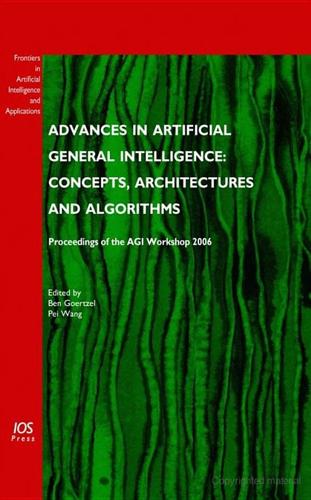
Advances in Artificial General Intelligence: Concepts, Architectures and Algorithms: Proceedings of the Agi Workshop 2006
by
Ben Goertzel
and
Pei Wang
Published 1 Jan 2007
The learning so innately programmed appears quite automatic, reliably resulting in creatures with similar abilities provided that they are allowed interaction with the world during development. Complexity theory suggests that learning is a hard problem, requiring vast computation to extract structure. Yet we learn so fast that we do not have time to do the requisite computation. This is possible only because creatures are preprogrammed to extract specific kinds of meaning. The bulk of the requisite computation, and thus the guts of the process from the point of view of complexity theory, went into the evolution of the genome. Empirical evidence shows that creatures are in fact programmed with specific inductive biases.
…
Turing's thesis gives us a precise language which we can use to discuss and model thought, the language of computer programs. This thesis, however, left us with some puzzles. A first important one is: what about this particular code causes it to understand? A second important one is: given that complexity theory has indicated that many computations are inherently time consuming, how does the mind work so amazingly fast? Computational learning theory has explained generalization as arising from Occam's razor. The most studied context is concept learning, where one sees a series of classified examples, and desires to learn a function that will predict correctly whether new examples are examples of the concept or not.
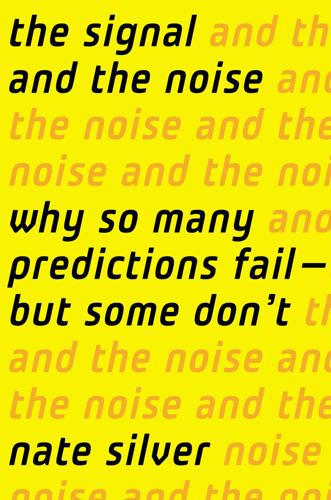
The Signal and the Noise: Why So Many Predictions Fail-But Some Don't
by
Nate Silver
Published 31 Aug 2012
Recent efforts by NASA and by Rundle to measure fault stress through remote sensing systems like GPS satellites have shown some promise.76 Although the efforts are crude for the time being, there is potential to increase the amount of data at seismologists’ disposal and get them closer to understanding the root causes of earthquakes. • • • These methods may eventually produce some forward progress. If success in earthquake prediction has been almost nonexistent for millennia, the same was true for weather forecasting until about forty years ago. Or it may be that as we develop our understanding of complexity theory—itself a very new branch of science—we may come to a more emphatic conclusion that earthquakes are not really predictable at all. Either way, there will probably be some failed predictions first. As the memory of our mistakes fades, the signal will again seem to shimmer over the horizon.
…
S., 401 caloric consumption, 372, 373 Cal State Fullerton, 161 Calvinism, 112 Campbell, Murray, 268, 284–85, 286, 288 Canada, 52, 210, 379 capitalism, 13 Protestant work ethic and, 5 see also free markets CAPTCHA technology, 124 carbon dioxide, 374, 375, 379, 392–93, 395, 401–3, 404, 406, 408, 508 carbon emissions, 397–98, 399, 406, 410 Carew, Rod, 84, 85 Carley, Kathleen, 440 Carruthers, David, 319 Carter, Jimmy, 208 cartography, 3, 220 Case, Karl, 30, 32 Case-Shiller index, 30, 30, 464 causation, correlations vs., 185–88, 254–55 Center for Strategic and International Studies (CSIS), 425–27 Centers for Disease Control (CDC), 205, 206–7, 211 Central Park, 391, 391 CFOs, 359 Chadwick, Henry, 95 chaos, cone of, 139 chaos theory, 118–22, 124, 132, 162, 172, 195, 386 complexity theory vs., 386n Charleston, S.C., 150 chartists, 339–40, 341 Chavez, Eric, 99 chemistry, 114 chess, 10, 16, 262–64, 263, 265–66, 493–94 beginning of game, 268–71 birth of computers for, 265–66 databases for, 270, 277 endgame of, 268, 276–79, 285 forecasting in, 271, 289 heuristics for, 267, 269, 272, 273, 284, 286 midgame of, 268, 271–76, 285 pattern detection in, 281 as theoretically solvable, 267 ChessBase.com, 292–93 Chicago, Ill., 223–24, 225, 228, 230, 432 Chicago, University of, 227 Chicago Cubs, 63, 104 Chicago White Sox, 88 Chile, 144, 438 China, 189, 209, 400 chlorofluorocarbons (CFCs), 375 Christchurch, New Zealand, 174 Christianity, 490 CIA, 51, 467 terrorism prevention by, 273, 424, 426, 433, 443, 510 CIBC Oppenheimer, 352 cigarette smoking, 254–55, 258 Cinema Rex theater, 425n Cirque du Soleil, 318 Citizens Bank Park, 286 Civil Aeronautics Administration, 123n Civil Protection Department, Italy, 143 Clarke, Richard, 425 Clauset, Aaron, 427, 431, 432, 437, 441, 442, 511–12 Clean Air Act, 400 Cleveland, Grover, 334 Cleveland Cavaliers, 239–40, 257 Clift, Eleanor, 48, 49, 50, 56 climate change, use of term, 376, 377n see also global warming Climategate, 408 Climatic Research Unit (CRU), 408 climatology, 131, 132, 370–411 Bayesian reasoning in, 371, 377–78, 403, 406–7, 407, 410–11 models of, 371, 380, 384–85, 401–6, 402 signal vs. noise in, 371–73 uncertainty in, 389–93, 390 Clinton, Bill, 55, 56, 433, 510 Clinton, Hillary, 59, 60, 252 clouds, 385, 386 CNN, 217 coal, 410 cognitive psychology, 227 Cole, USS, 422, 423 comets, 447 commerce, 10 Commerce Department, U.S., 123n commercial lending, 187 commodity prices, 186n, 202 common sense, 451 communism, 51 community cards, 299 compartments, in disease modeling, 220–21, 223 competition, 1, 16, 97, 106, 128, 189 in poker, 313 in the stock market, 313, 352, 364 in weather forecasting, 127–28, 131–37, 132 competitive advantage, 313–14 competitiveness, 97 complexity, of global warming forecasting, 382 complexity theory, 172–73, 368–69, 386 chaos theory vs., 386ncomputer age, 7–8 computers: chess played by, 261–62, 287–88; see also Deep Blue; Deep Thought; Fritz poker played by, 324 predictions and, 292 weather forecasting by, 116–18, 123–25, 289 condom fatigue, 222–23 cone of chaos, 139 Conference Board, 187 confidence, 46 accuracy and, 203 see also overconfidence confidence interval, see margin of error Congress, U.S., 19, 123n, 207, 408 low approval rating of, 188 see also House of Representatives, U.S.; Senate, U.S.
…
S., 401 caloric consumption, 372, 373 Cal State Fullerton, 161 Calvinism, 112 Campbell, Murray, 268, 284–85, 286, 288 Canada, 52, 210, 379 capitalism, 13 Protestant work ethic and, 5 see also free markets CAPTCHA technology, 124 carbon dioxide, 374, 375, 379, 392–93, 395, 401–3, 404, 406, 408, 508 carbon emissions, 397–98, 399, 406, 410 Carew, Rod, 84, 85 Carley, Kathleen, 440 Carruthers, David, 319 Carter, Jimmy, 208 cartography, 3, 220 Case, Karl, 30, 32 Case-Shiller index, 30, 30, 464 causation, correlations vs., 185–88, 254–55 Center for Strategic and International Studies (CSIS), 425–27 Centers for Disease Control (CDC), 205, 206–7, 211 Central Park, 391, 391 CFOs, 359 Chadwick, Henry, 95 chaos, cone of, 139 chaos theory, 118–22, 124, 132, 162, 172, 195, 386 complexity theory vs., 386n Charleston, S.C., 150 chartists, 339–40, 341 Chavez, Eric, 99 chemistry, 114 chess, 10, 16, 262–64, 263, 265–66, 493–94 beginning of game, 268–71 birth of computers for, 265–66 databases for, 270, 277 endgame of, 268, 276–79, 285 forecasting in, 271, 289 heuristics for, 267, 269, 272, 273, 284, 286 midgame of, 268, 271–76, 285 pattern detection in, 281 as theoretically solvable, 267 ChessBase.com, 292–93 Chicago, Ill., 223–24, 225, 228, 230, 432 Chicago, University of, 227 Chicago Cubs, 63, 104 Chicago White Sox, 88 Chile, 144, 438 China, 189, 209, 400 chlorofluorocarbons (CFCs), 375 Christchurch, New Zealand, 174 Christianity, 490 CIA, 51, 467 terrorism prevention by, 273, 424, 426, 433, 443, 510 CIBC Oppenheimer, 352 cigarette smoking, 254–55, 258 Cinema Rex theater, 425n Cirque du Soleil, 318 Citizens Bank Park, 286 Civil Aeronautics Administration, 123n Civil Protection Department, Italy, 143 Clarke, Richard, 425 Clauset, Aaron, 427, 431, 432, 437, 441, 442, 511–12 Clean Air Act, 400 Cleveland, Grover, 334 Cleveland Cavaliers, 239–40, 257 Clift, Eleanor, 48, 49, 50, 56 climate change, use of term, 376, 377n see also global warming Climategate, 408 Climatic Research Unit (CRU), 408 climatology, 131, 132, 370–411 Bayesian reasoning in, 371, 377–78, 403, 406–7, 407, 410–11 models of, 371, 380, 384–85, 401–6, 402 signal vs. noise in, 371–73 uncertainty in, 389–93, 390 Clinton, Bill, 55, 56, 433, 510 Clinton, Hillary, 59, 60, 252 clouds, 385, 386 CNN, 217 coal, 410 cognitive psychology, 227 Cole, USS, 422, 423 comets, 447 commerce, 10 Commerce Department, U.S., 123n commercial lending, 187 commodity prices, 186n, 202 common sense, 451 communism, 51 community cards, 299 compartments, in disease modeling, 220–21, 223 competition, 1, 16, 97, 106, 128, 189 in poker, 313 in the stock market, 313, 352, 364 in weather forecasting, 127–28, 131–37, 132 competitive advantage, 313–14 competitiveness, 97 complexity, of global warming forecasting, 382 complexity theory, 172–73, 368–69, 386 chaos theory vs., 386ncomputer age, 7–8 computers: chess played by, 261–62, 287–88; see also Deep Blue; Deep Thought; Fritz poker played by, 324 predictions and, 292 weather forecasting by, 116–18, 123–25, 289 condom fatigue, 222–23 cone of chaos, 139 Conference Board, 187 confidence, 46 accuracy and, 203 see also overconfidence confidence interval, see margin of error Congress, U.S., 19, 123n, 207, 408 low approval rating of, 188 see also House of Representatives, U.S.; Senate, U.S.
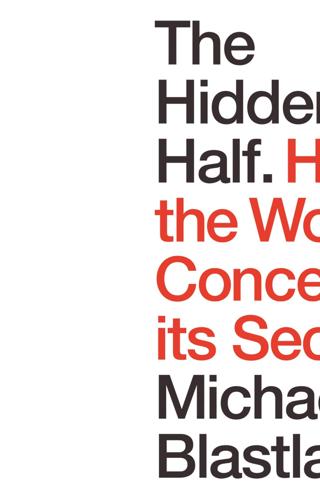
The Hidden Half: How the World Conceals Its Secrets
by
Michael Blastland
Published 3 Apr 2019
Mercer et al., ‘Changes in Sexual Attitudes and Lifestyles in Britain through the Life Course and Over Time: Findings from the National Surveys of Sexual Attitudes and Lifestyles (Natsal)’, Lancet, vol. 382, no. 9907, 2013, pp. 1757–1856. 9 Laura Lindberg, John Santelli and Sheila Desai, ‘Understanding the Decline in Adolescent Fertility in the United States, 2007–2012’, Journal of Adolescent Health, vol. 59, no. 5, 2016, pp. 577–583. 10 Some readers will again be put in mind here of the ideas of complexity and chaos. These are useful analogies, I think, in their emphasis on the subtle, interactive power of small causal influences. One committed student of complexity theory who works as an advisor to government told me it is an uphill task to persuade ministers and others that they are not pulling levers on a simple machine. 11 Nancy Cartwright and Jeremy Hardie, Evidence Based Policy: A Practical Guide to Doing it Better, Oxford, Oxford University Press, 2012. 12 In my more radical moments, I am not sure that causality exists as we usually think of it.
…
Index abstract formulas 141 Academy of Medical Sciences 133 adoption studies 41 aid, economic development 141 aid-effectiveness craze, the 153 alcohol consumption 180 AllTrials campaign 114–5 Altman, Doug 129–30 Amano, Yukiya 185 ambiguity 209–10 Amgen 111–2 Analysis (radio programme) 102 analytic validity 158, 263n18 anarchy 224 aphorisms 68–9, 149 apprenticeships 205–6 argument, beliefs and habits of 186 asthma 135 Attanasio, Orazio 225–9, 230 Autho, David 219–23 average knowledge 173 background influences 23–34 background norms, rejecting 24–5 bacon 161–3, 162–3 Banerjee, Abhijit 150–4, 157 Bangladesh 80–2, 82, 101–2, 158, 261n6 Bank of England 103, 216 Bank of Japan 103 Basbøll, Thomas 244–5 baseline data 165 base-rate neglect 176–7 basic laws 140 Bateson, William 245 BBC 88, 98 Beatles, the 52–3, 259n33 Begley, Glenn 111–7 behaviour context-specific 42–3 environmental cues 65–7 behavioural economics 157 Behavioural Insight Team 155, 156, 232 beliefs 60 contradictory 63–4 inconsistency of 60–6 justification 60–1, 63 manipulation 62–3 power of information on 66–8 self-contradiction 61–2 Berlin, Isaiah 199 betting, on knowledge 236–7 big causes, power of 35 big events causal intricacy 193–6 complexity 185–7 difficulty determining causality 188–96 power of circumstance 196–9 big picture, the 215–6 Bijani, Ladan 40–1 Bijani, Laleh 40–1 biographies 49 biological randomness 43–4 biomedical science, research standards 129–36 Bolsover 217–8 Boorstin, Daniel 17, 136, 138, 264n24 Booth, Charles 146–7 BP 211 brain, the 64 plasticity 56 self-justifying 83 breast cancer 45–6, 46 Brexit referendum 18–9, 20, 90, 214–8, 223–4, 241 Bunnings 77 Burckhardt, Jacob 255n20 Burke, Edmund 269n1 Burns, Terry 102–3 business decisions, failures 210–1 cancer 45–8 breast 45–6, 46 lung 174–5 risk 162–3, 166, 174–5 screening 132–3 Cancer Research UK 133 canned laughter 154–5 capitalism 118 Carillion 211 Carp, Joshua 123–4 Cartwright, Nancy 79, 79–82, 82, 193–4, 195, 202–3, 203–4, 263n18 causal instincts 123 causal interactions, complexity 239 causal intricacy 193–4 causal models 242–4, 243, 269–70n3 causal theorizing 212–4 causality assumption of 212–4 difficulty determining 188–96 existence of 276–7n12 hard 225–9 importance of 212 mechanical models 242–4, 243 in one person 48 cause and effect dependable 203–4 patterns of 23, 25–6, 26 supposed 248 unreliable 204 causes and causal influences 90, 94 competing 248 criminals 29 interaction 193–6 and luck 178 secret life of 8–11 simple 184–5 cells, biographical stories 47–8 certainty, desire for 235 Chadwick, Edwin 146–7 chance 14, 37–8, 247, 281n1 chaos theory 56–7, 276n10 Chater, Nick 59, 60, 63, 64–5, 66–7 Chernobyl disaster 185 child and adolescent development 23–6, 41–2 child mental health 206–7 childhood influences 23–5 delinquent boys 26–34 China, rise of 218–23, 279n19 choice, situated 31–3, 34 choice blindness 62 choices 60 Cialdini, Robert 154–5 Cifu, Adam 131–2 circumstances 70 power of 196–9 claims inflation 130 climate change 238–9 Clinton, Hillary 222 Cochrane Collaboration, the 189–90 cognition 64 cognitive biases 14 cognitive limitations 14, 214 Comaroff, John 107–8 common sense 69–70 comparative cost analysis 173 competence 236–7 complacency 237 complexity adding 244 big events 185–7 facing 15 hidden 184–201 of reality 245 complexity theory 276n10 complexity-avoidance 187 complications, hidden 187 Conan Doyle, Arthur 108 confidence 72 consistency 68–75, 202–4, 260n6, 260n8 constructive realism 17 consumer behaviour 77 context 41–2, 72, 101 context-specific behaviour 72 context-specific learning 42–3 control alternative to 248–9 elusiveness of 85–6 powers of 195 conviction 104 coping strategies 16–7, 225–46 adapting 230–3 betting 236–7 communicate uncertainty 237–9 embracing uncertainty 234–6 exceptions 244–5 experiment 230–3 governing for uncertainty 239–41 managing for uncertainty 241–2 metaphors 242–4 negative capability 234 relax 246 triangulation 233–4 use of probability 242 Corbyn, Jeremy 20 corporate power 241 cost/benefit analysis, cows 117–22 cows, cost/benefit analysis 117–22 Coyle, Diane 216, 262n12 Crabbe, John 85–7 credibility 238–9 credibility crisis 18 crime causes of 142–4 heroes and villains view 142 opportunist 144–5 reduced opportunity 144–5 theory of 142–6, 143 victims and survivors view 142–3 criminals causal influences 29 childhood influences 26–34 desisters 30 high rate chronics 30 life-course persistent offenders 28–9 life-courses 28, 236 variables 31 critical factors 83–5 crowds, wisdom of 149 cultural difference 79–82, 79–85 Daniels, Denise 43–4, 57 Darwin, Charles 50–1 data granularity 216–7 interpretation 98–100 Dawid, Philip 276–7n12 De Rond, Mark 198, 201 de Vries, Ymkje Anna 114 deadweight cost 205–6 debate 98 decision making 58–60 influences 32–3 situated choice 31–3 deep preferences 65 deeper rationale, construction of 60 Deepwater Horizon 211 defining characteristics 43 degrees of freedom 122–9 delinquent boys 26–34 dementia 176–7, 274n16 democracy 20 Deng Xiaoping 219 Denrell, Jerker 199, 201 desires 59 details importance of 49–54 neglecting 151–2 problem of 229 selective 26 determinism 28 development economics 150–3 developmental difference, sources of variation 9–11 developmental noise 10 difference 15 pockets of 214–24 Dilnot, Andrew 237, 275n3 disciplined pluralism 231 disorder 45 forces of 11–3 doubt 238 Down’s syndrome 166 drugs comparative cost analysis 173 impact 171–2 medical effect 167–9, 169, 170–4 non-responders 172 Numbers-Needed-to-Treat (NNTs) 168, 169, 170, 173–4 predictive weakness 170–3 duelling certainties 235 Duflo, Esther 83, 84, 141, 150–3, 157–8, 158–9, 230–1 ecological validity 263n18 economic development, aid 141 economic forecasting 92, 102–7 economic recovery 217–8 economics 233 economy, the 87–100, 91, 93, 94, 95 education 151–2, 206–7, 275– 6n7 Einstein, Albert 140–1 Emerson, Ralph Waldo 68 enigmatic variation 13–6, 48 environment context 72 non-shared 37 shared 35 environmental influences 43–4 epidemiology 181 epigenetics 6–7 erratic influences 60 essential you, the 59–60 estimates 89–91, 96 European Central Bank 103 evidence 21 balance of 114 conclusive 186, 187 the Janus effect 121, 122–9 limitations of 117–22 statistical significance 137 strength of 137 evidence-based medicine 133–4 exceptions 214–24, 244–5 expectations 35 big 196 frustration of 15 of regularity 47, 202–4 unrealistic 182 experience, influence of 33, 34, 55–7 experiment 230–3 expertise, crisis of 18–9 experts, credibility crisis 18–9 external validity 101, 158, 263n18, 264n19 extreme performance 199 failure 204–11 fairness 66–7 false negatives 113–4 false positives 113–4, 122 falsification 245 family, changes of 41 farmer and a chicken, the 202–4 fate 30 fears, exaggerated 46 Financial Times 77 First World War 108 Fitzroy, Robert 50 flat mind, the 60, 60–8 Flaubert, Gustave 139 forecasting 109 former Yugoslavia 108 foxes 199 France 186–7 Freedman, Sir Lawrence 108, 109 freedom 236 Fukushima nuclear power station meltdown 185–7 fundamentals 141 identifying 153 further education 208–9 Galbraith, John Kenneth 110 Gartner, Klaus 87 Gash, Tom 142–3 Gates, Bill 199 GDP data 262n12 growth estimation 88–100, 91, 93, 94, 95, 262–3n14 local 214–5, 216, 218 Gelman, Andrew 124–5, 244 gene–environment interaction 6–7 general principles 140 generalities 174 generalization 76–8, 146, 152, 263n18 genes and genetics influence of 34–7, 39–41, 44, 45–7 overclaiming 134–5 power of 33, 45 genetic risk 45–7 genius, dangerous 212–4 genotype 8 Germany 185, 186, 188 Gillam, John 77 global financial crisis, 2008–9 104, 106, 210, 235 globalization 213 Gove, Michael 18–9 granularity 216–7 ground truth 217 groupthink 149 guarantees, lack of 160 Guardian 207 Gupta, Rajeev 117, 118 Haldane, Andy 216–7, 218 Harford, Tim 156–7, 237 Harris, Judith Rich 40–2, 72 Hayek, Friedrich 105–6 health screening 177 heart disease 163–6 hedgehogs 199 Henry (ex-delinquent) 32 Hensall, Abigail 39–40, 41 Hensall, Brittany 39–40, 41 herd mentality 154–5 hidden causes 35–8 hidden half, the coping strategies 225–46 ignoring 202–24 mystery of 35 power of 44–5 hidden trivia 8–9 hindsight 78 hindsight bias 83 history 107–8 lessons of 109 Homebase 76–7 Honda, US motorcycle market penetration 196–9 hubris 77 human sameness irregularity 45–9 limits of 34–45 human understanding, fundamentals 213 Human Zoo, The (radio programme) 60–6 humility 224, 248–9 IBM 199 ibuprofen 163–5 ideological divide 240 ideologies 9–10 idiosyncratic influence 53–4 ignorance 21, 107 disguising 242 the shock of 7 imagination 138 impulsive judgement, value of 149 incarceration rates, United States of America 222, 240, 280n10 incidentals, effect of 51–2 incoherency problem, the 149 inconsistency beliefs 60–6 justifiable 70–1 incredible certitude 209 Indian Express 117 individual differences 56 individuality conjoined twins 39–42 neurological foundation of 56 industrial policy 208 inflation 102–7 influences background 23–34 childhood 26–34 criminals 26–34 decision making 32–3 environmental 43–4 erratic 60 hidden 204 microenvironmental 8–9, 253–4n12 information power of 66–8 selective 66–7 Institute for Fiscal Studies 205–6 Institute for Government 208–9 intangible differences 253n11 intangible variation 10, 229 interaction, problems of 193–6 internal validity 101–2, 158 International Journal of Epidemiology 43 intuition 54, 204 Ioannidis, John 121, 133–6 irrationality, human 14 irregularity 94 disruptive power of 224 frustration of 15 human 45–9 influence 12 problem of 229 underestimating 214–24 Islamic State 108 it’s-all-because problem 91, 96 James, Henry 29, 56 James, William 141 Janus effect, the 121, 122–9 Johansen, Petter 62 Johnson, Samuel 214 Johnson, Wendy 71–2 Jones, Susannah Mushatt 162–3, 165 journalism 237–8 Juno (film) 193 Kaelin, William 130 Kawashima, Kihachiro 197 Kay, John 16, 68, 197, 231, 232 Keats, John 138–9, 234 Kempermann, Gerd 56, 57 Keynes, John Maynard 107, 271n9 Keynesianism 103 King, Mervyn 103, 104, 106, 110 Kinnell, Galway 28 Knausgaard, Karl Ove 86–7 Knight, Frank 107 Knightian uncertainty 107 knowledge 12–3, 170 advance of 20–1 average 173 betting on 236–7 credibility crisis 18 critical factors 83–5 failures of 19, 76–8, 79–82 fallibility of 248 generalizable 234 generalization 76–8 illusion of 136, 138 lessons of the past 102–7, 107–10 in medicine 182 negative capability 138–9 as obstacle to progress 17 obvious 82 paths to 136–9 plausibility mistaken for 132 practical 30–1 pretence of 105–6 probabilistic 160, 161, 163–4, 172–3 and probability 180 problem of scale 177–80 provenance 116 relevant 82–5 replication crisis 111–7 subverting 76–110 and time variations 87–100, 91, 93, 94, 95 transfer 37, 76–8, 83, 101–2 unknowns 85–7 validity 100–2 validity across time 107–10 weakest-link principle 79–82 Krugman, Paul 210 Lancet 225–6 Langley, Winnie 51, 165, 178 Laub, John 26–34, 42 law-like effects, claims about 21 learning styles 207 Leicester City Football Club 199–201 Leon (ex-delinquent) 31–2 Leyser, Ottoline 114 life, mechanics of 51 life-course persistent offenders 28–9 limits and limitations 16–7, 44, 75 base-rate neglect 176–7 of cleverness 278n14 individual level 174–6, 178–9, 181–3 lack of guarantees 160 marginal probabilistic outcomes 176–7 medical effect 167–9, 169, 170–4 on prediction 165–6 on probability 160–83 problem of scale 161–6, 174– 6, 177–80, 181–3 Liskov Substitution Principle 261n3 Little Britain (TV comedy) 192 Liu, Chengwei 198, 201 lives, understanding 29 location shift 264n20 Loken, Erik 124–5 long-acting reversible contraceptives (LARCS) 190 luck 37–8, 48, 178, 198 lung cancer 174–5 Lyko, Frank 1, 2 machine mode thinking 151–2 Macron, Emmanuel 20 Manski, Charles 209, 235 Mao Zedong 218 marginal probabilistic outcomes 176–7 marmorkrebs 1–9, 4, 10, 12, 12–3, 22, 35, 81, 182, 252n2 Marteau, Theresa 65 Martin, George 52 May, Theresa 208 Mayne, Stephen 77 measurement 99–100 mechanical relationships 212, 242, 244 mechanical thinking 242–4, 243 media stigma 192–3 medical effect, drugs 167–9, 169, 170–4 medical reversal 131–3 medicine comparative cost analysis 173 knowledge in 182 non-responders 172 Numbers-Needed-to-Treat (NNTs) 168, 169, 170, 173–4 personalized 181–3 predictive weakness 170–3 probability and 167–9, 169, 170–4 memory 56, 102–7 Mendelian randomization 233 Menon, Anand 214–5 mental shortcuts 14–5 mere facts 202–3 meta-science 19, 20 methodological revisions 97–8, 120 mice 55 microenvironmental influences 8–9, 253–4n12 micro-irregularity 35–7 micro-particulars 128 Microsoft 147–50, 199 Miller, Helen 66–7, 67 mind, the flat 59–60, 60–8 shape 59 models and modelling 140, 242–4, 243, 269–70n3 moment when, the 52 morality, changing 108 More or Less (radio programme) 237 Munafò, Marcus 234 Nadella, Satya 147–8 National Survey of Family Growth 192 National Surveys of Sexual Attitudes and Lifestyles 191–2 nationalism 108 Nature 2, 112, 136, 168, 174 nature/nurture debate 3, 5–6, 9–10 negative capability 138–9, 234 neurology 58 New England Journal of Medicine 131–2 Newcastle upon Tyne 214 Newton, Isaac 140–1 noise 14 definition 10 developmental 10 as intellectual dross 11 re-appraisal of 11–3 non-shared environment 37 Nosek, Brian 129 noses 49–51 Nottingham 217 Numbers-Needed-to-Treat (NNTs) 168, 169 nurture, influence of 44 O’Connor, Sarah 217–8 Office for National Statistics 89, 92, 98, 99–100, 216 O’Neill, Onora 238 opinions 21, 59 order 11–2, 13 organ donation campaign 155–6 outside influence 44 overclaiming 134–5 overconfidence 21 overseas business expansion 76–8 Oxfam, sexual abuse scandal 210 Paphides, Pete 52–3 parental behaviour 41 parents, impact of 41 Parris, Matthew 63 parthenogenesis 1–2 particularism 271–2n15 particularity problem, the 93 past, the, lessons of 102–7, 107–10 pattern-making instinct 21 patterns 13 pendulums 57 perceptual systems 64 performance 72–5 personalized medicine 181–3 Peto, Richard 47–8 phenotypes 8 physiognomy, and character 50 plausibility 132 Plomin, Robert 43–4, 49, 57 pluralism 231–2 polarization 235 policy making 231–2 appraisal 277n4 chances of success 208 failures 204–9 governing for uncertainty 239–41 and probability 178–9 secret of 209 seminar 207–8 sequential changes 208 political assumptions, fall of 20 political beliefs 60–6 population validity 263n18 populism, rise of 20 poverty 240–1 Prasad, Vinayak 131–2 precision 183 predictability 28 predictive weakness 165–6, 170–3 preferences 59, 62 deep 65 priming 126–8 probabilistic knowledge 160, 161, 163–4, 170, 172–3 probability 54, 70, 107, 258n25, 272n2 advantages 177–80 base-rate neglect 176–7 difference in 30 fear of low probabilities 166 individual level 174–6, 178–9, 181–3 limits and limitations 160–83 marginal 176–7 medical effect 167–9, 169, 170–4 paradox 170 and policy making 178–9 predictive weakness 165–6 problem of scale 161–6, 174– 6, 177–80, 181–3 recognizing significance 161 risk evaluation 161–6 suggestion of knowledge 180 use of 242 usefulness 161 problems, conceptualizing 17 productivity growth 209–10 progress, knowledge as obstacle to 17 psychoanalysis 58 psychology 58 Pullinger, John 278n14 Pullman, Philip 37 quantification, risk and risk-taking 162–5 racism 125–6 radical uncertainty 106, 107 Radio, Andrew 102 rage to conclude, the 139 randomized controlled trials, value of 280n6 randomness, pure 9 Ranieri, Claudio 200–1 rationality 68, 260n6, 260n8 reality 230, 245, 254n14 reciprocity 155 reflection 65–6 regularity 73, 160 assumption of 212–4 expectations of 47, 202–4 search for 212, 230 statistical 240–1 replication crisis 18, 111–7, 117– 22, 129, 136, 138 Replication Project 129 research 111–39 balance of evidence 114 breadth 130 claims inflation 130 confidence in 115–6 credibility crisis 18 decision rules 136–9 depth 130 evidence-based medicine 133–4 false negatives 113–4 false positives 113–4, 122 fragility 128–9 freedom 122–9 half wrong 113, 115–6 the Janus effect 121, 122–9 limitations of 117–22 micro-particulars 128 multiple analyses 125–6 multiple conclusions 117–22 overclaiming 134–5 priming 126–8 redemption 20 replication crisis 111–7, 117– 22, 129, 136, 138 rigour 19 scepticism 115–6 standards 129–36 statistical significance 122 triangulation 138 validity 101–2 research-credibility crisis 18 rigour 19, 246 risk and risk-taking 70–1, 107, 186 alcohol consumption 180 cancer 162–3, 166, 174–5 communication of 133 evaluation 161–6 heart disease 163–6 quantification 162–5, 166 quantified 187 risk-perception 71 Rockhill, Beverly 181 Rolling Stone magazine 23 Rose, Geoffrey 175–6 Rowntree Joseph 146–7 Royal Bank of Scotland 211 Russell, Bertrand 202, 202–3 samples, validity 100–2 Sampson, Robert 26–34, 42, 236 sanitation 225–9 Santayana, George 109 scale, problem of 161–6, 174–6, 177–80, 181–3 scepticism 105, 115–6, 128, 206 schizophrenia 34–6, 256n10 Science 56 Scientific American 55 Scotland, Triple-P parenting programme 206 screening 132–3, 177 searing memory, doctrine of the 102–7 selection bias 244 self-understanding 67 Sense about 115 serendipitous events 43, 52–3 sex education, role of 189–90 short-term gene–environment interaction 7 significance, recognizing 161 Silberzahn, Raphael 125–6 Simmons, Joseph 122–3 situated choice 31–3, 34, 42 situations, appraisal of 72 sliding-doors moments 50 small differences, power of 56–7 small effects, influence of 49–54 small experiences, influence of 35–7 smartphones 97, 191 Smith, George Davey 50, 51, 234, 281n1 social contexts 31, 195 social media 191 social mobility 240–1 social policy 195 social proof 154–6 social reformers 146–7 social science, utility of 146–50 special theory of relativity 140–1 Spiegelhalter, David 180, 244–5 spontaneous interaction 9 stagflation 103 statins 171 statistical regularities 240–1 statistical significance 122, 137 stents, use of 131 stories and storytelling 25–6, 53–4, 244–5, 247, 248, 258n25, 258n27 structural forces 54 Sun, the 51 support factors 194 Surfers Against Sewage 70–1 surgeons, skills 73–4 system 1 thinking 149 systematic forces 54 systems-level thinking 153 Tamil Nadu 79–82, 101–2 Tangiers, Morocco 84 technology, changing 108 Teen Mom (TV show) 193 teenage pregnancy rate decline in 184, 188–96 estimates 275n3 terrible simplifiers 255n20 Tesco 77, 211 Thaler, Richard 157 theories 140–59 analytic validity 158 arguments about 150–4 of crime 142–6, 143 development economics 150–3 fitness 157 implementation 152 limitations 157 and practice 141 refining 156–7 relevance 157–8 social science 146–50 tension in 154–9 using 156–7 ‘thick’ description 86 time, validity across 107–10 Time magazine 193 time variations, and knowledge 87–100, 91, 93, 94, 95 The Times 63 toilets 225–9 Toshiba 211 trade-offs 190–1 trends 54 trials 156 triangulation 138, 233–4 Triple-P parenting programme 206–7 trivia, importance of 84–5 true uncertainty 107 Trump, Donald 20, 218, 222, 223–4 trust 238 trust deficit 218 trustworthiness 238 Tufte, Edward 139 turning points, variety 49–54 TV crime shows 143, 143 twins and twin studies conjoined 39–42 identical 34–7, 39, 256n10 Tyson, Mike 23, 23–6 Tyson, Rodney 24–5, 255n3 Uhlmann, Eric 125–6 uncertainty 89–90, 100, 209– 12, 254n14 admitting 238 communicating 237–9 data 89–91 embracing 234–6 erratic 93 governing for 239–41 Knightian 107 language of 238 managing for 241–2 in medicine 167–9, 169, 170–4 perpetual 230 radical 106, 107 true 107 uncertainty laundering 268n33 understanding hidden half of 13 limiting effects on 14 limits of 54 unemployment 221–2, 263n17 unintended consequences 105, 229 United States of America China trade 220–3 incarceration rates 222, 240, 280n10 labour market 221 minimum wage 266–7n10 unemployment 221–2 universal gravitational attraction, theory of 140–1 unknowns 85–7, 206 unusual, the 195 upbringing 23–5 Uyeno, Lori 47 validity across time 107–10 analytic 158, 263n18 ecological 263n18 external 101, 158, 263n18, 264n19 internal 101–2, 158 knowledge 100–2, 107–10 population 263n18 research 101–2 samples 100–2 values 59, 232 variation, sources of 5–8 Volkswagen, diesel emissions scandal 211 Wall Street Journal 219 Wallace, Alfred Russel 259n33 Walmart 77 Watts, Duncan 68, 69, 147–50 weakest-link principle 79–82 Wedgwood, Josiah 50–1 Wellington, Duke of 51 Wesfarmers 76–7 West Germany, motorcycle thefts 142–4 Western, Bruce 54 Wilson, Harold 99 World Bank Independent Evaluation Group 79 World Health Organization 162 world picture 63–4 Wright, Sewall 253n11
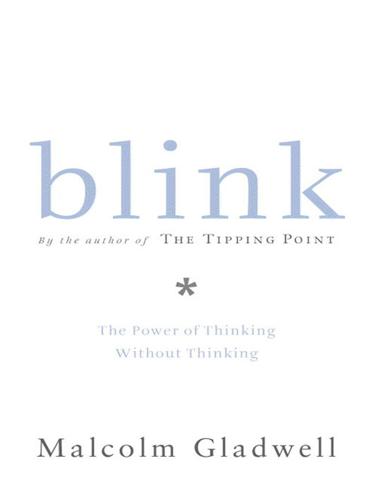
Blink: The Power of Thinking Without Thinking
by
Malcolm Gladwell
Published 1 Jan 2005
This is why, in many ways, the choice of Paul Van Riper to head the opposing Red Team was so inspired, because if Van Riper stood for anything, it was the antithesis of that position. Van Riper didn’t believe you could lift the fog of war. His library on the second floor of his house in Virginia is lined with rows upon rows of works on complexity theory and military strategy. From his own experiences in Vietnam and his reading of the German military theorist Carl von Clausewitz, Van Riper became convinced that war was inherently unpredictable and messy and nonlinear. In the 1980s, Van Riper would often take part in training exercises, and, according to military doctrine, he would be required to perform versions of the kind of analytical, systematic decision making that JFCOM was testing in Millennium Challenge.
…
Do you accept the argument that we are completely oblivious to our unconsciously motivated behavior (like the disturbing IAT results that show 80 percent of test takers have pro-white associations)? Is this just a convenient excuse to justify our biases? Chapter 4 / Paul Van Riper’s Big Victory 17. Van Riper believed that strategy and complex theory were inappropriate and futile in the midst of battle, “where the uncertainties of war and the pressures of time made it impossible to compare options carefully and calmly.” What other “work” situations discount rational analysis and demand immediate “battlefield” decision making? 18. Can one ever really prepare for decisive, rapid-fire scenarios?

The Connected Company
by
Dave Gray
and
Thomas Vander Wal
Published 2 Dec 2014
Notes for Chapter Nineteen DISTRIBUTED LEADERSHIP Irving Wladawsky-Berger, “The MIT Distributed Leadership Forum,” blog post, November 23, 2009, http://blog.irvingwb.com/blog/2009/11/the-mit-distributed-leadership-forum.html. ADAPTIVE TENSIONS Bill McKelvey, “Improving Corporate IQ,” published in the Workshop on Managerial Implications of Complexity Theory in the Network Economy, July 14, 2001. JOHN BOYD & MORAL AUTHORITY A Vision So Noble: John Boyd, the OODA Loop, and America’s War on Terror, by Daniel Ford (CreateSpace, 2010). JOHN MACKEY & TRUST “John Mackey: Want trust? Let people be their whole selves,” MIX TV, http://www.managementexchange.com/video/john-mackey-want-trust-let-people-be-their-whole-selves.
…
The Service profit Chain: How Leading Companies Link Profit and Growth to Loyalty, Satisfaction, and Value By James L. Heskett, W. Earl Sasser, and Leonard A. Schlesinger, Free Press, 1997. The Seven-Day Weekend: Changing the Way Work Works By Ricardo Semler, Portfolio Hardcover, 2004. Simply Complexity: A Clear Guide to Complexity Theory By Neil Johnson, Oneworld, 2009. Steve Jobs By Walter Isaacson, Simon and Schuster, 2011. Structural Holes: The Social Structure of Competition By Ronald S. Burt, Harvard University Press, 1995. Toyota Production System: Beyond Large-Scale Production By Taiichi Ohno and Norman Bodek, Productivity Press, 1988.

Strategy: A History
by
Lawrence Freedman
Published 31 Oct 2013
Boyd was widely read in the scientific literature of the time and picked up easily on developing theories which used simple propositions to explain complex phenomena. From these he drew language and insights to describe the sort of conflicts that interested him. From Norbert Wiener’s cybernetics to Murray Gell-Mann’s complexity theory emerged some core themes about the interaction of parts within systems, adaptation to changing environments, and outcomes that seemed indeterminate but were not beyond explanation. The conclusions for practical strategists that emerged from these theories rarely did justice to the elegance of the originals, and could lead to the suspicion that the main result was to develop more impressive language for matters that were already well understood.
…
The conclusions for practical strategists that emerged from these theories rarely did justice to the elegance of the originals, and could lead to the suspicion that the main result was to develop more impressive language for matters that were already well understood. Many of the emerging themes were present, for example, in Schelling’s writings. The most important contribution of complexity theory was to underline the importance of considering individual actors as part of complex systems, so that they must always be assessed in relation to their environment, which was adapting to them as they adapted to it. Problems arose with an inability to adapt. “Chaos theory” explained how systems in which cause and effect were supposedly known, and in which strategic calculations might be assumed to be reliable, could nonetheless turn into disorderly systems marked by apparently random effects.
…
In an article he coauthored, published in 1999, claims were made about the role of the book in translating the key themes in organizational studies, to the point of describing it as an accessible version of Weick.13 They addressed the issue of whether it was possible to simplify without being simplistic. Even if the situation demanded complex theories, managers would not find them interesting and so good theory would not affect practice. The article claimed immodestly that In Search of Excellence succeeded by saying “pretty much everything there was to say about behavior in organizations and got it right, by virtue of the experts cited.” Ideas of learning organizations, bounded rationality, narratives, and agenda-setting could all be found, with key theorists getting mentioned.

The Singularity Is Near: When Humans Transcend Biology
by
Ray Kurzweil
Published 14 Jul 2005
Furthermore, the idea that a completely deterministic process can produce results that are completely unpredictable is of great importance, as it provides an explanation for how the world can be inherently unpredictable while still based on fully deterministic rules.68 However, I am not entirely surprised by the idea that simple mechanisms can produce results more complicated than their starting conditions. We've seen this phenomenon in fractals, chaos and complexity theory, and self-organizing systems (such as neural nets and Markov models), which start with simple networks but organize themselves to produce apparently intelligent behavior. At a different level, we see it in the human brain itself, which starts with only about thirty to one hundred million bytes of specification in the compressed genome yet ends up with a complexity that is about a billion times greater.69 It is also not surprising that a deterministic process can produce apparently random results.
…
Extensive databases are methodically cataloging our exponentially growing knowledge of the brain.3 Researchers have also shown they can rapidly understand and apply this information by building models and working simulations. These simulations of brain regions are based on the mathematical principles of complexity theory and chaotic computing and are already providing results that closely match experiments performed on actual human and animal brains. As noted in chapter 2, the power of the scanning and computational tools needed for the task of reverse engineering the brain is accelerating, similar to the acceleration in technology that made the genome project feasible.
…
But certain details are critical in decoding the principles of operation of the brain, which compels us to distinguish between them and those that comprise stochastic "noise" or chaos. The chaotic (random and unpredictable) aspects of neural function can be modeled using the mathematical techniques of complexity theory and chaos theory.16 ·The brain uses emergent properties. Intelligent behavior is an emergent property of the brain's chaotic and complex activity. Consider the analogy to the apparently intelligent design of termite and ant colonies, with their delicately constructed interconnecting tunnels and ventilation systems.
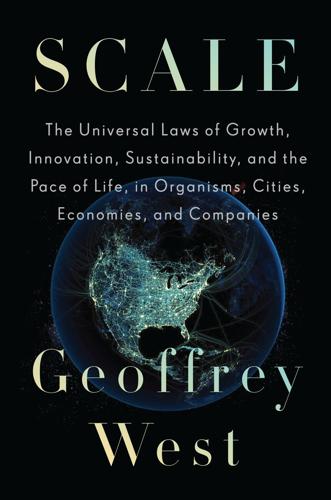
Scale: The Universal Laws of Growth, Innovation, Sustainability, and the Pace of Life in Organisms, Cities, Economies, and Companies
by
Geoffrey West
Published 15 May 2017
This would provide a detailed quantitative valuation of traffic patterns and the attractiveness of specific locations as well as other metrics that are crucial for planning purposes such as in successfully developing new areas of a city or deciding on the placement of new malls or stadiums. The leading advocate for developing the concept of the fractal city and integrating ideas from complexity theory into traditional urban analysis and planning has been Mike Batty, who runs the Centre for Advanced Spatial Analysis (CASA) at University College London. His work has focused primarily on computer models of the physicality of cities and urban systems. He is enthusiastic about the concept of cities as complex adaptive systems and has consequently become a major proponent of developing a science of cities.
…
These sorts of general properties, which are characteristic of social networks, lead to the result that the shortest path between nodes is on average a relatively small number and that this number is essentially independent of the size of the population, so that the six degrees of separation is approximately the same across all communities. Furthermore, it turns out that the modular structure is typically self-similar so that many characteristics of small-world networks satisfy power law scaling. Steve Strogatz is an eclectic applied mathematician at Cornell University who uses ideas from nonlinear dynamics and complexity theory to analyze and explain a broad range of fascinating problems. For example, he has done some lovely work showing how crickets, cicadas, and fireflies synchronize their behaviors and more recently extended it to show why London’s Millennium Bridge was dysfunctional.11 This latter problem has some interesting lessons for the science of cities, and I want to digress to explain it.
…
I feel extraordinarily fortunate and privileged to have been able to spend a number of very productive years in such a marvelous place, stimulated by like-minded colleagues from every possible corner of academia. The ambience and character of SFI are perhaps best captured by the British science writer John Whitfield, who in 2007 wrote: The institute was intended to be truly multidisciplinary—it has no departments, only researchers. . . . Santa Fe and complexity theory have become almost synonymous . . . the institute, now situated on a hill on the town’s outskirts, must be one of the most fun places to be a scientist. The researchers’ offices, and the communal areas they spill into for lunch and impromptu seminars, have picture windows looking out across the mountains and desert.
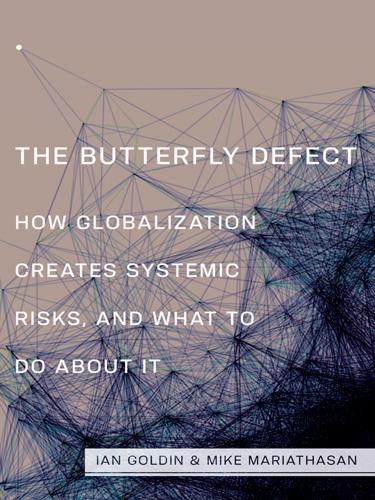
The Butterfly Defect: How Globalization Creates Systemic Risks, and What to Do About It
by
Ian Goldin
and
Mike Mariathasan
Published 15 Mar 2014
Barkley Rosser Jr., 2009a, “Computational and Dynamic Complexity in Economics,” in Handbook of Research on Complexity, ed. J. Barkley Rosser Jr. (Chelten ham, UK: Edgar Elgar), 22–25. 27. John Horgan, 1997, The End of Science: Facing the Limits of Knowledge in the Twilight of the Scientific Age (New York: Broadway Books), 303; see also Neil Johnson, 2009, Simply Complexity: A Clear Guide to Complexity Theory (Oxford, UK: Oneworld Publications). 28. Paul Ormerod, 2012, Positive Linking: How Networks Can Revolutionise the World (London: Faber and Faber). 29. Ibid., x. 30. Ibid., xi. 31. Malcolm Gladwell catalogs numerous events and trends that occur for seemingly inexplicable reasons. Linking such diverse subjects as fashion trends or crime to the patterns with which epidemics develop, his work illustrates precisely the nonlinear and opaque nature of twenty-first-century risk that we intend to study in the course of this book.
…
“Rising Income Inequality: Technology, or Trade and Financial Globalization?” IMF Working Paper 185. International Monetary Fund, Washington, DC. Accessed 3 February 2013. http://www.imf.org/external/pubs/ft/wp/2008/wp08185.pdf. Jervis, Robert. 1997. System Effects. Princeton, NJ: Princeton University Press. Johnson, Neil. 2009. Simply Complexity: A Clear Guide to Complexity Theory. Oxford, UK: Oneworld Publications. Johnson, Simon. 2009. “The Quiet Coup.” Atlantic Magazine, May. Accessed 16 October 2012. http://www.theatlantic.com/magazine/archive/2009/05/the-quiet-coup/307364/. Jorgenson, Andrew K., J. Kelly Austin, and Christopher Dick. 2009. “Ecologically Unequal Exchange and the Resource Consumption / Environmental Degradation Paradox: A Panel Study of Less-Developed Countries, 1970–2000.”

How to Read a Paper: The Basics of Evidence-Based Medicine
by
Trisha Greenhalgh
Published 18 Nov 2010
Classical management theory: the notion that ‘mainstreaming’ a change within an organisation requires a systematic plan to make it happen. The vision for change must be shared amongst a critical mass of staff, and must be accompanied by planned changes to the visible structures of the organisation, to the roles and responsibilities of key individuals, and to information and communication systems. 6. Complexity theory: the notion that large organisations (such as the UK National Health Service) depend critically on the dynamic, evolving, and local relationships and communication systems between individuals. Supporting key interpersonal relationships, and improving the quality and timeliness of information available locally are often more crucial factors in achieving sustained change than ‘top-down’ directives or overarching national or regional programmes.
…
Index absolute risk reduction (ARR) absolutism absorptive capacity (organisations) academic detailing accessible standards ‘accountability culture’ accuracy ACP PIER additional risk adult learning advertising, DTCA advice for patients AGREE instrument allocation concealment, CONSORT checklist analysis of variance anecdotes DTCA anti-inflammatory drugs, non-steroidal anticoagulant therapy applicability clinical guidelines appraisal, critical, see critical appraisal ARR (absolute risk reduction) aspirin, meta-analyses assessment ‘blind’ clinical guidelines methodological quality needs assumptions, unquestioned avoidable suffering baseline data, CONSORT checklist baseline differences behavioural learning bias expectation selection systematic work-up (verification) biological markers of disease ‘blind’ assessment blinding, CONSORT checklist blobbogram, see forest plot bluffing, deliberate boundaries fuzzy organisational break-even point browsing, informal Caesarean section, see induced delivery CardioSource care, quality of care pathways, integrated (critical) case systematic bias case reports case studies ‘caseness’ causation tests for CBT (cognitive behaviour therapy) Centre for Evidence-Based Medicine (CEBM) CHAIN (Contact, Help, Advice and Information Network) ‘champions’ cheating with statistical tests checklist CONSORT context-sensitive QADAS systematic reviews data sources choice, informed cholesterol hypercholesterolaemia Cinderella conditions citation chaining classical management theory clinical applicability clinical decision-making clinical disagreement clinical evidence clinical freedom clinical guidelines implementation clinical heterogeneity clinical prediction rules ‘clinical queries’ clinical questions clinical trials non-randomised controlled RCT, see randomised controlled trials CME (continuing medical education) Cochrane, Archie Cochrane Collaboration Cochrane EPOC, see EPOC group cognitive behaviour therapy (CBT) cohort studies systematic bias collection of data collective knowledge common sense comparable groups COMPASEN format completeness of follow-up complex interventions complexity theory confidence intervals diagnostic tests conflict of interest consistency CONSORT statement RCTs Contact, Help, Advice and Information Network (CHAIN) context context-sensitive checklist context-specific psychological antecedents quality improvement case studies receptive context for change continuing medical education (CME) continuous results control group controlled clinical trials, non-randomised controlled trials, randomised, see randomised controlled trials correlation correlation coefficient Pearson cost analysis cost cost-minimisation ‘cost per case’ counting-and-measuring perspective covariables criteria, stringent critical appraisal pre-appraised sources qualitative papers critical care pathways cross-sectional surveys cumulative meta-analyses current practice cut-off point DALY (disability-adjusted life year) data baseline collection dredging paired pooled skewed databases DARE EPOC primary studies systematic reviews TRIP see also sources, resources decision-making evidence-based evidence-based practice shared therapy deduction deep venous thrombosis (DVT) deliberate bluffing delivery, induced design complex interventions RCT research studies ‘detailers’ detailing, academic diabetes qualitative research shared decision-making yoga control diagnosis diagnostic sequence diagnostic tests validation ‘dice therapy’ dichotomy qualitative direct costs direct-to-consumer-advertising (DTCA) disability-adjusted life year (DALY) disagreement, clinical discourse analysis ‘doing nothing’ Donald, Anna ‘dose dredging, data ‘drug reps’ drug treatments drugs, see also therapy, treatments duration of follow-up DVT (deep venous thrombosis) DynaMed EBM, see evidence-based medicine economic analyses editorial independence education for patients educational intervention, specific effective searching efficacy analysis eligibility criteria embodied knowledge endpoints, surrogate epilepsy EPOC Group ethical considerations drug trials QALYs RCTs ethnography Evans, Grimley evidence application on patients formalisation hierarchy of level of ‘methodologically robust’ evidence-based decision-making evidence-based guidelines evidence-based medicine (EBM) criticisms essential steps reading papers web-based resources ‘evidence-based organisation’ evidence-based policymaking evidence-based practice expectation bias ‘expert opinion’ harmful practices explanation of results surrogate endpoints explanatory variables explicit methods explicit standards external validity ‘eXtra’ material Eysenck, Hans F-test falsifiable hypotheses federated search engines ‘female hypoactive sexual desire’ focus groups focusing, progressive follow-up forest plot formalisation of evidence formulation of problems freedom, clinical fuzzy boundaries ‘geeks’ general health questionnaire, SF-36 general psychological antecedents generalisability CONSORT checklist GIDEON (Global Infectious Diseases and Epidemiology Network) GIGO (garbage in, garbage out) GOBSAT (good old boys sat around a table) ‘gold standard’ test good clinical questions Google Scholar Grimshaw, Jeremy Grol, Richard group relations theory groups comparable focus subgroups guidelines as formalised evidence implementation practice SQUIRE guiding principles Guyatt, Gordon hands-on information hanging comparative harmful practices ‘expert opinion’ health professionals evidence-based practice shared decision-making health-related lifestyle Helman, Cecil ‘here and now’ heterogeneity hierarchy of evidence pharmaceutical industry traditional histogram holistic perspective human factor human resources HYE (Healthy Years Equivalent) hypercholesterolaemia ‘hypoactive sexual desire’, female hypothesis, null ‘illness scripts’ implementation clinical guidelines guidelines IMRAD format inadequate optimisation inception cohort incremental cost independence, editorial indirect costs individualised approaches induced delivery inductive reasoning industry, pharmaceutical, see pharmaceutical industry infertility informal browsing information ‘jungle’ information needs informed choice ‘informed consent’ intangible costs integrated care pathways ‘integrated’ EBM teaching inter-rater reliability internet-accessible format interventions complex CONSORT checklist cost analysis effect of meta-analyses organisational simple specific educational interview qualitative research see also questionnaire invited review items (questionnaire) iterative approach journalistic review ‘jungle’, information Kappa score knowledge, collective knowledge managers laboratory experiments learning organisation least-squares methods ‘length of stay’ level of evidence lifestyle, health-related likelihood ratio nomogram literature searching long-term effects longitudinal survey looking for answers ‘lumpers and splitters’ mammogram management theory, classical Marinker, Marshall marketing masking, see blinding Maskrey, Neal McMaster Health Utilities Index Questionnaire mean inhibitory concentration (MIC) mean (statistical) measurements mechanistic approach mediator/moderator effect medicine evidence-based, see evidence-based medicine ‘narrative-based’ Medline systematic reviews meta-analyses aspirin interventions methodological quality assessment problematic descriptions systematic reviews ‘methodologically robust’ evidence mixed method case study motorcycle maintenance multiple interacting components n of 1 trial ‘narrative-based medicine’ narrative interview NAHA (National Association of Health Authorities and Trusts) National Guideline Clearinghouse needs assessment negative predictive value ‘negative’ trials neonatal respiratory distress syndrome NICE (National Institute for Health and Care Excellence) NNT (number needed to treat) nomogram, likelihood ratio non-diseases non-medical factors non-medical treatments non-normal data, see skewed data non-parametric tests non-randomised controlled clinical trials non-significant results, relevant non-steroidal anti-inflammatory drug (NSAID) normal distribution ‘normal range’ normative orientation Nottingham Health Profile null hypothesis 30 objective of treatment one-stop shopping online material online tutorials, effective searching operational orientation opinion leader opportunity samples, questionnaire research option grids organisation, evidence-based organisational boundaries organisational case studies organisational interventions original studies original study protocol CONSORT checklist OSIRIS patient trial other-language studies outcome measures ‘outcomes research’ outliers p-value paired data papers economic analyses guidelines meta-analyses methodological quality qualitative research quality improvement case studies questionnaire research reading rejection systematic reviews ‘trashing’ participants qualitative research spectrum of patient-reported outcome measures (PROMs) patients advice or education for evidence application patient’s perspective ‘typical’ viewpoint withdrawal from studies Pearson correlation coefficient peer review per-protocol analysis personal digital assistants (PDAs) personal experiences perspective counting-and-measuring holistic patient’s researcher’s pharmaceutical industry evidence-based practice ‘grey literature’ pharmacokinetic measurements pharmacotherapy (PHA), see drug treatments philosophical-normative orientation PIER, see ACP PIER pilot trial piloting, questionnaire research ‘placebo’ effect clinical research studies methodological quality point-of-care resources policymaking evidence-based pooled data populations cohort studies guidelines qualitative research questionnaire research sub- positive predictive value post-test probability postal questionnaire practical-operational orientation practice, evidence-based practice guidelines pre-appraised sources pre-test probability precision prediction rules, clinical preliminary statistical questions prenatal steroid treatment press cutting prevalence primary studies PRISMA statement probability pre-/post-test problem formulation process evaluation professional behaviour prognosis progressive focusing PROMs (patient-reported outcome measures) prostate-specific antigen (PSA) test protocols original study protocol per-protocol analysis protocol-driven approach Psychiatry Online psychological antecedents, context-specific psychometric studies psychometric validity PubMed purposive sample Q-TWIST QADAS (Quality in Diagnostic and Screening tests) checklist QALY (quality-adjusted life year) QOF (Quality and Outcomes Framework) qualitative research quality methodological trial design quality improvement case studies quality improvement cycle ‘quality of care’ quality of life PROMs ‘queries’, clinical questionnaire ‘questionnaire mugger’ questionnaire research SF-36 general health questions good clinical preliminary statistical QUORUM statement quota sampling frame r-value random samples, questionnaire research randomised controlled trials (RCTs) checklist CONSORT statement cumulative meta-analyses hierarchy of evidence systematic bias rating scale measurements reading papers ‘real-life’ circumstances receptive context for change recruitment dates, CONSORT checklist reflexivity regression (statistical) rejection, papers relevant non-significant results reliability, inter-rater reporting format, structured reports, case reproducible tests research design ‘outcomes’ qualitative questionnaire research question researcher’s perspective secondary resources, Point-of-care respiratory distress syndrome, neonatal response rate retrospective subgroup analysis reviews clinical guidelines peer systematic Richard, Cliff risk, additional risk risk difference, see absolute risk reduction role preference safety improvement case studies sample size CONSORT checklist sciatica scientific jargon screening mammogram tests SD (standard deviation) search engines, federated searching effective literature secondary research clinical guidelines selection bias semi-structured interview sensitivity sensitivity analysis sequence generation, CONSORT checklist SF-36 general health questionnaire shared decision-making significance, statistical simple interventions skewed data snowball samples, questionnaire research social cognition social movement ‘social stigma’ ‘soft’ science Someren, Van sources pre-appraised synthesised specialised resources specific educational intervention specificity spectrum of participants ‘splitters and lumpers’ sponsors and stakeholders SQUIRE guidelines stages of change models stakeholders standard current practice standard deviation (SD) standard gamble measurements standardisation standards, explicit and accessible statin therapy statistical questions, preliminary statistical significance statistical tests appropriate evaluation statistics STEP (safety, tolerability, efficacy, price) steroid treatment, prenatal stratified random samples stringent criteria stroke anticoagulants meta-analyses methodological quality structured reporting format studies case cohort design in-/exclusion of participants organisational case original protocol other-language ‘patients’ primary process evaluation psychometric research question (un)original validation withdrawal of patients subgroups, complex interventions retrospective analysis subjective judgements subpopulations surfactant treatment surrogate endpoints surveys cross-sectional literature longitudinal Swinglehurst, Deborah synopses synthesised sources systematic bias systematic reviews databases evaluation evidence-based practice systematically skewed samples t-test table, two-by-two tails target population target variable X2-test tests diagnostic ‘gold standard’ non-parametric PSA reproducible screening statistical theoretical sampling therapy anticoagulant CBT decision-making ‘dice’ NSAID statin see also treatments therapy studies, trial design thrombosis, DVT time trade-off measurements traditional hierarchy of evidence transferable results ‘trashing’ papers Treasury’s viewpoint treatments drug non-medical objective of prenatal steroid see also therapy trials design n of ‘negative’ non-randomised controlled clinical pilot randomised controlled, see randomised controlled trials triangulation TRIP tutorials, online TWIST two-by-two table ‘typical’ patients underfunding ‘unoriginal’ studies unquestioned assumptions validation clinical guidelines diagnostic tests validity external psychometric variables explanatory statistical regression verification bias viewpoint of economic analyses ‘washout’ periods web-based resources, EBM Whole Systems Demonstrator work-up bias WTP/WTA (Willingness to Pay/Accept)

The Big Nine: How the Tech Titans and Their Thinking Machines Could Warp Humanity
by
Amy Webb
Published 5 Mar 2019
Without awareness of their own biases, these scientists—hoping to understand how the human mind works, how we think, and how machines might learn from all of humanity—had drastically limited their pool of data to those who look and sound just like them. The following year, the group gathered on the top floor of Dartmouth’s math department and researched complexity theory, natural language simulation, neural networks, the relationship of randomness to creativity, and learning machines. On the weekdays they met in the main math classroom for a general discussion before dispersing to tackle the more granular tasks. Professors Allen Newell, Herbert Simon, and Cliff Shaw came up with a way to discover proofs of logical theorems and simulated the process by hand—a program they called Logic Theorist—at one of the general sessions.
…
See also China Chinese Communist Revolution, Centennial of, 223 CHINOOK, 39 Clarke, Arthur, 35 Climate change: consequences of in catastrophic scenario of future, 228–229; G-MAFIA addressing in optimistic scenario of future, 171–172 Cloud: data storage, 88–89; hardware limitations and, 89; primary providers, 88. See also Azure Cloud Code of Conduct, call for establishment of AI worker, 256 Coinbase, 87 Committee on Foreign Investment in the United States (CFIUS), 93 Complexity theory, 30 Congressional Research Service, 247 Construction and building industries: in optimistic scenario of future, 165 Consumerism, acceleration of AI projects and, 98 Conway, Melvin, 106 Conway’s Law, 106; Big Nine and, 107; examples, 103–108; negative effects, 107–108 Cook, Tim: on future of privacy, 95.
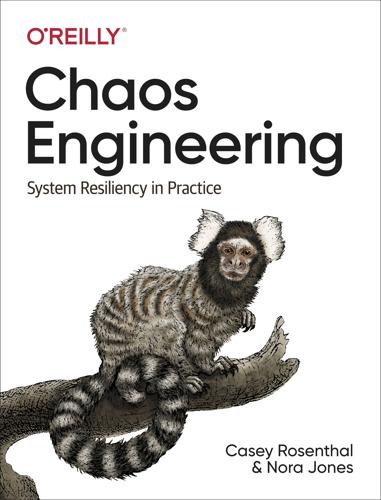
Chaos Engineering: System Resiliency in Practice
by
Casey Rosenthal
and
Nora Jones
Published 27 Apr 2020
Finding new ways to disseminate it throughout the organization will always be on my mind. I think more generally you could say the same thing about shared context and the value of finding common ground. Leadership Is an Emergent Property of the System What I find fascinating about systems thinking and complexity theory is that it applies to everything. When I realized that leadership within an organization could be looked at through this lens, it blew my mind. It’s important to note that when I talk about the word “leadership” in this context, I’m not talking about people or a team of people who “lead others.”
…
Many of the challenges we deal with in distributed systems can be mapped to challenges within an organization, and at some point ownership and accountability ultimately end up on the shoulders of the system’s leader. Moving your organization forward Dr. James Barker is a professor and researcher at Dalhousie University, specializing in organizational safety, leadership theories, and complexity theory. He describes leadership as an emergent property of the system that moves the organization forward. I love this definition. It frames leadership as decision making within bounded context. A leader is one who makes a given choice that they become accountable for. This definition aligns well with pushing context and decision making out to the edges, to the “sharp end,” the practitioners, the people who understand the most about the trade-offs they make every day.

Unweaving the Rainbow
by
Richard Dawkins
Published 7 Aug 2011
Not just Napoleon but the humblest medieval peasant had only to sneeze in order to affect something which changed something else which, after a long chain reaction, led to the consequence that one of your would-be ancestors failed to be your ancestor and became somebody else's instead. I'm not talking about 'chaos theory', or the equally trendy 'complexity theory', but just about the ordinary statistics of causation. The thread of historical events by which our existence hangs is wincingly tenuous. When compared with the stretch of time unknown to us, O king, the present life of men on earth is like the flight of a single sparrow through the hall where, in winter, you sit with your captains and ministers.
…
The author is drunk on metaphor, captivated by the idea of the helix, which misleads him into seeing connections which do not illuminate the truth in any way. Calling it poetic science is too kind: it is more like theological science. Recently my incoming mail has registered a sharp rise in the normal load of 'chaos theory', 'complexity theory', 'non-linear criticality' and similar phrases. Now I'm not saying that these correspondents lack the faintest, foggiest clue what they are talking about. But I will say it's hard to discover whether they do. New Age cults of all kinds cure swimming in bogus scientific language, regurgitated, half-understood (no, less than half) jargon: energy fields, vibration, chaos theory, catastrophe theory, quantum consciousness.
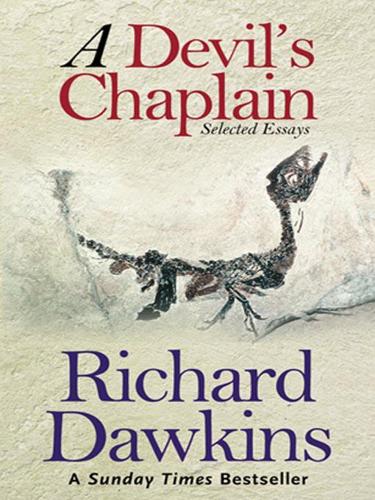
A Devil's Chaplain: Selected Writings
by
Richard Dawkins
Published 1 Jan 2004
Eastern mystics have always been deeply mysterious and hard to understand. Therefore eastern mystics must have been talking about quantum theory all along. Similar mileage is made of Heisenberg’s Uncertainty Principle (‘Aren’t we all, in a very real sense, uncertain?’), Fuzzy Logic (‘Yes, it’s OK for you to be fuzzy too’), Chaos and Complexity Theory (the butterfly effect, the platonic, hidden beauty of the Mandelbrot Set – you name it, somebody has mysticized it and turned it into dollars). You can buy any number of books on ‘quantum healing’, not to mention quantum psychology, quantum responsibility, quantum morality, quantum aesthetics, quantum immortality and quantum theology.
…
A., (i) Coevolutionary arms race, (i), (ii), (iii), (iv), (v) Competition For opposite sex, (i), (ii) Survival of macromutations in absence of, (i) Within species, causing extinction, (i) Complexity (see also Genome: Information content of) As information content, (i) Increase in, (i) Complexity theory, Misuse of, (i) Computer, (i), (ii), 157 (see also Virus, Computer) Convergence Modern physics and eastern mysticism, (i) Science and religion, (i), (ii) Conway Morris, Simon, (i), (ii), (iii) Cooperation, Evolution of, (i) Copying, see Fidelity under Gene, Meme Creationism ‘Intelligent design’, (i), (ii) Young Earth Creationism, (i) Creationists Propaganda of, (i), (ii) Refusing to debate with, (i), (ii) Regrettable gift of punctuated equilibrists to, (i) Creator, The Added to later editions of Origin, (i)f Litters genomes with pseudogenes, (i) Treats genomes of newts capriciously, (i) Crick, Francis, (i), (ii), (iii), (iv), (v), (vi), (vii) Cronin, Helena, (i), (ii) Crow, James, (i)f Croze, Harvey, (i), (ii) Crystals Alleged magical properties of, (i) Self-assembly of, (i) Structure of lattices, (i) Cultural relativism, (i), (ii), (iii), (iv) Cultural Studies, (i) Culture, (i), 151 (see also Meme) Culturgen, (i), (ii) Cupitt, Don, (i) Curie brothers, (i) Cuvier, Georges, (i) Darwin, Charles, (i), (ii) His coining of ‘Devil’s Chaplain’, (i) His disagreement with Wallace, (i) His encyclopaedic knowledge, (i) His near anticipation of Fisher on sex ratios, (i) His near discovery of Mendelism, (i) His ‘other’ theory, see Sexual selection His timeless achievement, (i) His Victorian outlook, (i), (ii) His views on race, (i), (ii) Not against punctuationism, (i) On worms, (i) Darwinism Coining by Wallace, (i) Core, (i) Incompatibility with blending inheritance, (i) Moral implications of, (i) Opposing as human being, (i) Universal, (i), (ii), (iii) Data Compression of, (i) Independent, (i) Davies, Paul, (i) Dawkins, Juliet, (i), (ii), (iii) Dawkins’ Law of the Conservation of Difficulty, (i) Death, Forecasting, (i) Deleuze, Gilles, (i) Delius, Juan, (i) Dennett, Daniel, (i), (ii)f, (iii), (iv), (v) On memes, (i)f, (ii), (iii) Descent of Man, The, (i), (ii) Design, Illusion of, (i), (ii) Determinism, see ‘Genetic determinism’ Development (see also Embryology) Coding for complex life cycles, (i) Complex recipe-like effects of genes on, (i), (ii), (iii) Embryonic, Evolutionary change in terms of, (i) Point at which foetus ‘becomes human’, (i) Rubber band and blanket analogy for, (i) Devil’s Chaplain, A, (i), (ii) Diamond, (i), (ii) Diamond, Jared, (i) Diamond, John, (i), (ii), (iii) Digger wasp, (i) Disraeli, Benjamin (as typewriter transubstantiated), (i) DNA Duplicating, (i) Fingerprinting, (i) Information content of, (i), (ii) Junk, (i), (ii) National database, (i) Parasitic, (i), (ii) Selfish, (i)f, (ii) Sequencing, (i) Viral, (i), (ii) Dobzhansky, Theodosius, (i), (ii) Dog, (i) Dolly (sheep), (i), (ii), (iii), (iv), (v), (vi) Double-blind trials, (i), (ii), (iii) Double Helix, The, (i) Douglas-Hamilton, Iain and Oria, (i) Düsing, Carl, (i) Eberhard, W.

Human Compatible: Artificial Intelligence and the Problem of Control
by
Stuart Russell
Published 7 Oct 2019
It is a straightforward process, using methods such as inductive logic programming,44 to create programs that propose new concepts and definitions in order to identify theories that are both accurate and concise. At present, we know how to do this for relatively simple cases, but for more complex theories the number of possible new concepts that could be introduced becomes simply enormous. This makes the recent success of deep learning methods in computer vision all the more intriguing. The deep networks usually succeed in finding useful intermediate features such as eyes, legs, stripes, and corners, even though they are using very simple learning algorithms.
…
For a much better explanation of quantum computation, see Scott Aaronson, Quantum Computing since Democritus (Cambridge University Press, 2013). 34. The paper that established a clear complexity-theoretic distinction between classical and quantum computation: Ethan Bernstein and Umesh Vazirani, “Quantum complexity theory,” SIAM Journal on Computing 26 (1997): 1411–73. 35. The following article by a renowned physicist provides a good introduction to the current state of understanding and technology: John Preskill, “Quantum computing in the NISQ era and beyond,” arXiv:1801.00862 (2018). 36. On the maximum computational ability of a one-kilogram object: Seth Lloyd, “Ultimate physical limits to computation,” Nature 406 (2000): 1047–54. 37.
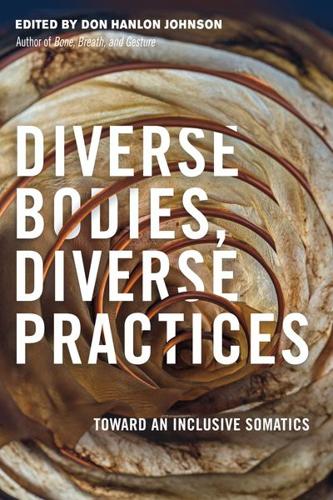
Diverse Bodies, Diverse Practices: Toward an Inclusive Somatics
by
Don Hanlon Johnson
Published 10 Sep 2018
For other men, the physical body overrides the emotional self; relationships bring up unprocessed material around intimacy, where the emotional self is not yet ready to be engaged in sexuality. This leads to dissociative sexual experiences or sexual experiences that require intoxicants in order to be successful. Morin’s complexity theory helps explain the impact of life on gay men and how they see themselves in the larger world: Self-organizing beings—which on our planet, are essentially living beings—are systems that are not only not closed (protecting their own integrity and their identity) but also open to their environment, from which they derive matter, energy, information, and organization.
…
and questions of lineage, 161–165 who decides group membership, 175–178 black people books authored by prominent, 229 on double consciousness in the U.S. of, 186 blackness, identifying with, 176–177 blessings (iré), cowry shell divination, 47–48 blue, as color of the West, 55 bodily practices. see also Japanese society, bodily practices as alienation from authentic self, 203–204 body as authentic self in, 204 constriction and release in, 82–83 rarely valued as theme of academic study, 202 somatics as new field of, 204–208 body accessing in somatic practice, 189 in autism. see autistic embodiment Babaylan and decolonizing of, 191 beginning of embodiment, 252–253 and body politic, 12–16 derivation of word, 10 and environment in epigenetics, 257–259 impact of life on gay men, 262–264 as interconnected process, 133–135 learning how to hold e, 243 as process, 133 reframing as resource and teacher, 86 returning to African ways of embodiment, 244 soma-cultural perspective on. see balance, seeking via 5Rhythms somatics and the social, 201–204 white people and safety of, 237–240 working with other autistics, 116 body politic, and body, 12–16 body practices, social change and, 9–12 body privilege, in gay community, 267–268 Bodynamics, reservoir theory, 268 bonsai tree metaphor, gay men, 254–255, 275 borderlands body and body politic, 12–16 democratic sensibility, 5–9 disoriented and vulnerable wanderers in, 4 from division to creation, 1–3 making bodies and social change, 9–12 shared suffering, 3–5 somatics, 16–19 Bowen, Bill, 265 Bowlby, John, 56 bracketing, mental vs. bodily, 206 brain causing dyspraxia in autistics, 96–97 cortical neurons in autistic, 91 epigenetic research on, 259 neuroplasticity of autistic, 106–107 in protogay child, 261–262 Brainspotting, pattern theory, 266 bullying childhood experiences of racism via, 232–233 most autistic children subjected to, 102 preventing by learning aikido, 106 Bureau of Indian Affairs (BIA), AIAN nations eligibility for benefits, 26 C Cabbage Patch doll, 166–167 California Institute of Integral Studies (CIIS), 82–83 Call of the Wild (London), 255 caregivers, attachment to our, 56 cathexis point, reservoir theory, 268–269 Catholic imperialism, 185–186, 187–189 Catholicism, red color in, 51 celibacy, Gandhi’s pleas for, 13 centering, and autistic students/clients, 116–117 chachayotes (ankle rattles), Danza Azteca, 52 Chang, Iris, 213–214 chant (oli), Hula Kahiko traditions, 60–61 chaos, rhythm of 5Rhythms and, 36–37 defined, 31 leads to catharsis, then to lyrical, 37–38 somatic sense of self, 40–42 Chemsex, 270 children, South as direction of, 64–66 Chinese-American civil movement, 213–214 CIIS (California Institute of Integral Studies), 82–83 clients, autistic, 116–117 closing the Gap, 145–147 cognition, autistic neurobiology and, 90 collective Gap, 135–139 collective wounding, depression, 144–145 colonialism colonization in Philippines, 184–189 decolonization in Philippines. see decolonization, somatics of Gandhi on purging body of effects of, 13 Gandhi’s analysis of, 15–16 hiding Lukimi practices during, 45 integrating oppression into somatics, 184 coming out process breaking free as gay man, 255 how gay men come into being, 257 increasing resiliency via, 274 Coming to America movie, 244 communal organization, 5–8 community breaking free as gay man and, 256 creating new social order, 2–3 double consciousness from loss of, 187 gay man expressing embodiment in, 274 joining Soul Sistah Circle, 172 complexity theory, Edgar Morin, 263 Connections (Roth), 41 consecrated beaded necklace/flag (eleke), Lukimi, 48–49 constriction, and release, 82–84 constructionist worldview, 21 containment, direction of west and, 56 cooperative communal organization, 5–8 Core Energetics, reservoir theory, 268 cortical neurons, autistic brain, 91 cowry shell divination (diloggun reading), 45–46 cowry shell diviner (oriate), 47–48 creation,, from division to, 1–3 creativity, difference essential to, 1–2 Crutcher, Terrance (killing of), 172 cultivation, narratives of in this book, 12 cycle of inquiry, somatic sense of self, 40–41 D dance of 5Rhythms. see 5Rhythms practice asking permission of ancestors to, 60–61 of autistic embodiment, 99–100, 103, 110–111, 114 between body and world, 133 changing bodily practice of, 9 feeling in sync with external universe, 50 freedom via, 25 with the Gap, 123–126, 135–139, 146–147 healing divided mind and body, 17, 25 as process of lifelong learning, 23 shaping infant into adult, 11 West African. see West African dance danzante, Danza Azteca and, 52–53 de-armoring, autistics, 117 decolonization, somatics of accessing depth through Babaylan, 189–192 accessing length through Bahala Na, 194–196 accessing width through Kapwa, 192–194 collective dignity, collective responsibility, 196–197 DeGruy, Joy, 87, 235 de-historicizing the body, 210–212, 213 democracy creating inclusive social order, 5–6 European Enlightenment subordinated, 7–8 in fifth-century BCE Greece, 6 long struggle of, 6–7 nurturing individual/collective healing, 8–9 welfare of others in, 7 depression from childhood abuses, 259 family lineage of, 144 in gap between wounding/healing, 124–125 as individual and collective, 144–145 isolation in, 143–144 toying with death in, 130–131 despair, kapwa as anchor for deep, 194 determination in face of uncertainty (bahala na), 195–196 Dewey, John, 8–9 DiAngelo, Robin, 153–154 difference, essential to creativity, 1–2 dignity, collective, 196–197 diloggun reading (cowry shell divination), 45–46 diversity autism and human neurodiversity, 90 creating new out of, 2 soma-cultural perspective on, 21–22 division, to creation from, 1–3 DNA markers, passing trauma through epigenetic, 235, 236 dolls, in biracial childhood, 166–167 double consciousness of black people in U.S., 186 of Filipinos after generations of colonialism, 187 drugs, influence on gay somatic life, 269–270 drums, 244–245 Du Bois, W.E.B., 186, 191, 229 dual attention cultivating mindful presence, 107 quality of expansiveness in, 109 work with autistic students and clients, 117 Duncan, Isadora, 206 dununba (largest dun), 244 dununfola (player of drums), 245 dununs (three drums), 244 dyspraxia in autistic individuals, 96–97 neuroplasticity supplanting, 107 shaming young autistics for lack of physical aptitude, 103 E Ealom, Tayla. see social wounds/personal transformation Earth direction of South as element of, 64 rhythm of flowing and Mother, 33–34 East, direction of the, 51–53 Eastern philosophy, mind-body issue in, 11 ebbo prescriptions, cowry shell divination, 48–49 Ebonics, 234 ecstasy, in sexual experiences/expression, 36–37 efun (used in ceremony for protection), 60 elders, North as direction of, 59 Eleggua, as living energy in Lakimi, 49 eleke (consecrated beaded necklace/flag), Lukimi practice, 48–49 Emancipation Proclamation, 222 embodiment autistic. see autistic embodiment gay men and therapeutic, 271–276 gay men seek to explain their, 257 reawakening for gay men, 255 relationship of protogay boy to, 261 EMDR (Eye Movement Desensitization and Reprocessing), pattern theory, 266 Emergent Strategy (Brown), 80, 84 emotion, ethnic origin and, 152 empire, oppression of, 184 engagement, somatic sense of self, 40–41 ennvrkvpv (in the middle) sexual orientation, 28 Enriquez, Virgilio, 189, 195 environment autistic embodiment and, 115 and body in epigenetics, 257–259 embodied experience shaped by, 230 expanding/contracting and, 81–84 gay men profoundly shaped by, 255 molded into different shapes by our, 275 White people’s social, 153 whole body interaction with, 131–132 epigenetics genetic theory and, 257–259 how gay men come into being, 257 passing trauma through DNA markers, 235, 236 physical environment and, 269 Erotic Mind (Morin), 272 Europe, Reich addressing social devastation in, 13–14 European Enlightenment, 7–8, 10 expansiveness as quality of akido, 109 working with other autistics, 117 experience characteristics of, 207–208 disconnection of thought and, 206 environment shapes our embodied, 230 as a flow, 207 learning from history, 208–210 nature of autistic, 90–91 peace education grounded in, 208–210 trauma manifests in embodied, 236 unexamined framework of bodily, 206 Worldwork field dynamics and, 212–213 Experiencing and the Creation of Meaning (Gendlin), 206–208 experiential psychology, 212–216 external experience (labas), kapwa and, 194 eye contact, autistics and, 95–96 Eye Movement Desensitization and Reprocessing (EMDR), pattern theory, 266 F fable-like story (patakí), cowry shell divination, 47 fallow field concept, rhythm of stillness, 38–39 family origins, biracial child, 161–162 fascism, Reich’s analysis of, 14–16 Faye, Oumou, 245 field dynamics, Worldwork, 212–213 flowers, South as direction of, 64 flowing, rhythm of 5Rhythms and, 32–34 defined, 31 exploring somatic sense of self, 40–42 For Harriet, online community, 175 Foster, Kimberley, 175 Francis-Ecoffey, Stephanie. see black and white: biracial in America freedom letting go of chaos for, 38 requires body practices, 14 Freudian psychology U.S. colonial rule in Philippines and, 186–187 Wilhelm Reich shaped by, 14 Fukuma, Yoshiaki, 208–209 G Gandhi, Mohandas, 12–16 Gap closing, 145–147 collective, 135–139 definition of, 123 and I, 123–134 structuring, 139–143 gay coming out as, 33 what it means to be, 22–23 gay men, somatic psychotherapy and beginning of embodiment, 252–253 beginning to work with, 253–257 bibliography, 276–282 coming into being, 257–265 genetic theory and epigenetics, 257–259 how I got here, 251–252 overview of, 249–250 physical psychoeducation, 265–266 protogay boy, 260–261 protogay child, 261–265 revisiting epigenetics, 269–271 somatic theory, 266–269 therapeutic embodiment and, 271–276 Gendlin, Eugene, 61, 131–132, 206–208 genetic theory, and epigenetics, 257–259 The Great Turning, awaits us, 146 Greece, democracy in in fifth-century BCE, 6 grief colonialism and undigested, 188 exploring using rhythm of staccato, 35 healing by turning slowly towards wound, 146–147 from impacts of racism, 122, 139, 144–145 kapwa as anchor for deep, 194 living in white supremacist culture and, 170–172 role of Babaylan in guidance through, 190 as turning point in healing process, 3, 190 Griffin, Susan, 6–7, 202, 210 guilt creating personhood without, 183 of having caused pain to others, 79 undoing fat hatred in order to process, 81 Gutierrez, Francisca, 65 Gutiérrez.

Never Let a Serious Crisis Go to Waste: How Neoliberalism Survived the Financial Meltdown
by
Philip Mirowski
Published 24 Jun 2013
Of course, sometimes the natural sciences themselves encountered something commensurable to a crisis in their own fields of endeavor—think of dark matter and dark energy, or the breakdown of causality in the 1920s—but they didn’t respond by evasive maneuvers and suppressing its consideration, as did the economists. In retrospect, appeals to science will be seen to have proven a bit of a red herring in coming to terms with the current crisis. Physical complexity theory or neuromysticism or dark matter won’t save us now. In the heat of battle, economists purported to be defending “science’”when, in fact, they were only defending themselves and their minions. Lesson 4: The failure of the economics profession is a saga of social disfunction The completeness of the [orthodox] victory is something of a curiosity and a mystery.
…
“Reporting Science and Conflicts of Interest in the Lay Press,” PLoS One 12 (December 2007): e1266. Cooke, Kristina, and Emily Flitter. “Economists Display Little Interest in Ethics Code,” Reuters, July 8, 2011, at http://ca.reuters.com/article/newsOne/idCATRE7673XK20110708. Cooper, Melinda. “Complexity Theory after the Crisis: The Death of Neoliberalism or the Triumph of Hayek?” Journal of Cultural Economy 4 (2011): 371–85. Cooper, Melinda. “Foucault, Neoliberalism and the Iranian Revolution,” in Vanessa Lemm and Miguel Vatter, eds., The Government of Life: Michel Foucault and Neoliberalism (New York: Fordham University Press, 2012).
…
See also Vroman, “Allusions to Evolution,” and Mirowski, Machine Dreams, on the origins of the “cyborg sciences.” 76 Cooper, Life as Surplus; Nadesan, Governmentality, Biopower and Everyday Life. 77 See, for instance, McKinnon, Neo-liberal Genetics; Ridley, The Agile Gene and The Rational Optimist; Pickering, The Cybernetic Brain; and my review of the latter book in Technology and Culture, 2012. 78 Cooper, “Complexity Theory after the Crisis”; Walker and Cooper, “Genealogies of Resistance.” 79 This subtle ontological move and its relationship to political action is best illustrated by the neoliberal response to global warming, discussed in chapter 6. 80 Peck, Constructions of Neoliberal Reason, p. xiii. 81 Neoliberals tend to perceive democracy as desirable only insofar as democratic institutions encourage the development of the economic system they advocate.
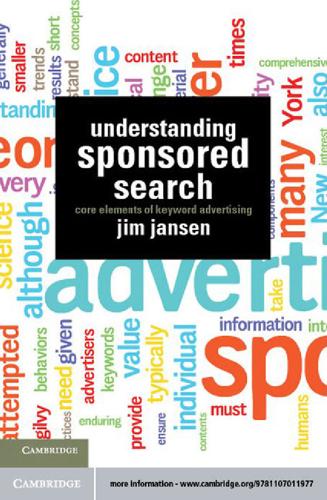
Understanding Sponsored Search: Core Elements of Keyword Advertising
by
Jim Jansen
Published 25 Jul 2011
Instead, in general systems theory, a system is characterized by the interactions of its components and the nonlinearity of those interactions. In other words, we take the totality and the complexity of interactions into account simultaneously. Potpourri: General systems theory has a lot in common with chaos theory and complexity theory. Chaos theory addresses the study of complex dynamical systems (i.e., systems that follow a fixed rule over time), where the system is highly dependent on Bringing It All Together initial conditions. This means that very slight fluctuations in the initial conditions can radically affect the end state of the system.
…
G., 71 biologically programmed desires, 125 The Black Swan, 218 Bloom’s Taxonomy, 96 Borden, Neil H., 131 bounded rationality, 98, 100 Boyce, Rick, 10 brand, 6, 14–15, 25, 69–70, 74, 95, 103, 111–122, 126–127, 129–130, 140–142, 144, 201, 207, 221, 223, 225 brand advertising, 126 Brand attitude, 116 brand awareness, 113 brand equity, 114 brand familiarity, 116 brand image, 1, 14–15, 70, 103, 112–114, 117, 120, 141 Brand recall, 114, 117 Brand recognition, 113, 117 Brand relationship, 114–115, 117 273 274 Index Brand trust, 116–117 branded keyphrases, 119–120, 141, 183, 187 branded terms, 41, 69–70, 186 branding, xiii, 16, 65, 69, 103, 106, 111–114, 116–118, 120–121, 126, 128–129, 131, 135, 140–142, 149, 171, 177, 190, 199, 203, 207–209, 213, 227 Brewer, Jeffrey, 11 Brin, Sergey, 206, 217–218 Broder, Andrei, 44 Brooks, Nico, 76–77 Bullington, Brett, 12 butterfly effect, 205 buying decision, 98–99, 130 buying funnel, 86, 93–98, 101, 103–106, 129–130, 210, 213 Capitani, 74 Caples, John, 127 CA$HVERTISING, 125 causation, 153 caveat emptor, 179 chaos theory, 204 check-in applications, 224 choice set, 71, 79, 94, 120, 130 Choice uncertainty, 99 classic advertising appeals, 124 click fraud, 167–168, 170, 221 Click potential, 76 clickthrough lift, 124 click-through rate, 24, 74–75, 178, See€clickthrough rate, 14–15 The Cluetrain Manifesto, 129 Commercial Alert, 21 communication process, 32–33, 36, 54, 86, 101–103, 105–106, 111, 207, 210, 213 communication theory, 86 complexity theory, 204 comScore, 152 concept of chunking, 42 concept of technological innovation, 5 consumer behavior, xiii, 86, 89, 94, 96, 98, 101, 103, 105–106, 129 consumer buying behavior, 98, 103 consumer buying process, 94, 98, 100–101, 104, 106 consumer decision making, 86, 93–95, 101, 105, 208, 213 consumer purchasing behavior, 86 consumer search process, 48, 90, 93, 98 consumer searching, 41, 47, 63, 86–87, 90, 93, 95, 98–99, 210 consumer searching behavior, 41, 86, 95, 210 content targeting, 19 context, ix, x, xiii, xix, xx, xxi, 1, 11, 32–33, 36, 43, 69, 86, 88, 91–92, 97, 100–103, 106, 112, 114–115, 119, 126–128, 131, 157, 159–164, 166, 177, 187, 212, 217, 220, 224, 226 contextual advertising, xii, 19, 225 Conversion potential, 76 Corporate branding, 112 Correlation, 153 Credence goods, 39–40 creditability, 150 Culliton, James, 131 curiosity, i, ix, x, xiv, 46, 125 Customer brand image, 120 customer market segmentation, 120 Database of Intentions, 31 dayparting, 184, 186 Delhagen, Kate, 12 determinants, 92–93, 98, 118 Direct Hit Technologies, 21 direct response, 126 direct response advertising, 126 Doc Seals, 129 dominate, 125 east, 22, 24, 72 ebay, 179 Ebbinghaus, H., 74 economic theory, 49, 91 effectiveness, 24, 35, 113, 118, 145, 149, 151, 159, 170, 180, 210 efficiency, 62, 151, 170, 180, 210 empirical methods, xii erosion, 159–160 escape, 125 Esch, F.

The Organized Mind: Thinking Straight in the Age of Information Overload
by
Daniel J. Levitin
Published 18 Aug 2014
Kolmogorov complexity theory encapsulates it this way: Something is random when you cannot explain how to derive a sequence using any fewer than the number of elements in the sequence itself. This definition of complexity meshes with our everyday, lay use of the term. We say that a car is more complex than a bicycle, and surely it takes a far larger set of instructions to build a car than a bicycle. Information theory can be applied to organizational systems like the file and folder hierarchy on your computer, or to org charts in a company. And, according to Kolmogorov complexity theory, if the org chart can be described by a small number of simple rules, the company is said to be highly structured.
…
Sustained concentration and effort is most effective not when fragmented into little pieces by multitasking, but when apportioned into big focused chunks separated by leisure, exercise, or other mentally restorative activities. Multitasking results from information overload, trying to attend to too many things at once. When the many things we’re attending to require a decision, how much information do we need to make optimal decisions? Optimal complexity theory states that there is an inverted U function for how much information or complexity is optimal. Too little is no good, but so is too much. In one study, experimenters simulated a military exercise. Players in the simulated game were college students in teams who were either invading or defending a small island country.

Machine, Platform, Crowd: Harnessing Our Digital Future
by
Andrew McAfee
and
Erik Brynjolfsson
Published 26 Jun 2017
I am convinced that if [the price system] were the result of deliberate human design, and if the people guided by the price changes understood that their decisions have significance far beyond their immediate aim, this mechanism would have been acclaimed as one of the greatest triumphs of the human mind. Hayek’s paper, which anticipated many of the ideas of what would coalesce into complexity theory later in the twentieth century, highlighted that the actions of individual members could generate information that was highly valuable to the entire crowd. What’s more, this information often can’t be gleaned from observing a small number of members: you’ll never learn the price of tin by watching just a couple of miners or metalworkers.
…
Acton, Brian, 140 additive manufacturing, 107; See also 3D printing Adore Me, 62 adults, language learning by, 68–69 advertising content platforms and, 139 data-driven decision making for, 48, 50–51 Facebook and, 8–9 radio airplay as, 148 advertising agencies, 48 advertising revenue Android as means of increasing, 166 Craigslist’s effect on, 139 free apps and, 162 print media and, 130, 132, 139 African Americans identifying gifted students, 40 and search engine bias, 51–52 aggregators, 139–40 AGI (artificial general intelligence), 71 agriculture automated milking systems, 101 drones and, 99–100 “food computers,” 272 machine learning and, 79–80 robotics and, 101–2 Airbnb future of, 319–20 hotel experience vs., 222–23 lack of assets owned by, 6–7 limits to effects on hotel industry, 221–23 network effects, 193 as O2O platform, 186 peer reviews, 209–10 rapid growth of, 9 as two-sided network, 214 value proposition compared to Uber, 222 Airline Deregulation Act, 181n airlines, revenue management by, 181–82 air travel, virtualization in, 89 Akerlof, George, 207, 210 albums, recorded music, 145 algorithms; See also data-driven decision making bias in systems, 51–53 and Cambrian Explosion of robotics, 95–96 comparing human decisions to, 56 O2O platforms and, 193 Quantopian and, 267–70 superiority to System 1 reasoning, 38–41 “algo traders,” 268; See also automated investing Alibaba, 6–8 Alipay, 174 AlphaGo, 4–6, 14, 74, 80 Alter, Lloyd, 90 Amazon automatic price changes, 47 bar code reader app, 162 data-driven product recommendations, 47 development of Web Services, 142–43 Mechanical Turk, 260 as stack, 295 warehouse robotics, 103 Amazon EC2, 143 Amazon Go, 90–91 Amazon S3, 143 Amazon Web Services (AWS), 75, 142–43 American Airlines (AA), 182 amino acid creation, 271–72 analog copies, digital copies vs., 136 “Anatomy of a Large-Scale Hypertextual Web Search Engine, The” (Page and Brin), 233 Anderson, Chris, 98–100 Anderson, Tim, 94 Andreessen, Marc on crowdfunding, 262–63 and Netscape, 34 as self-described “solutionist,” 297 on Teespring, 263–64 Android Blackberry vs., 168 contribution to Google revenue/profits, 204 iOS vs., 166–67 Angry Birds, 159–61 anonymity, digital currency and, 279–80 Antikythera mechanism, 66 APIs (application programming interfaces), 79 apophenia, 44n apparel, 186–88 Apple; See also iPhone acquiring innovation by acquiring companies, 265 and industrywide smartphone profits, 204 leveraging of platforms by, 331 Postmates and, 173, 185 profitability (2015), 204 revenue from paid apps, 164 “Rip, Mix, Burn” slogan, 144n as stack, 295 application programming interfaces (APIs), 79 AppNexus, 139 apps; See also platforms for banking, 89–90 demand curve and, 157–61 iPhone, 151–53 App Store, 158 Apter, Zach, 183 Aral, Sinan, 33 Archilochus, 60–61 architecture, computer-designed, 118 Aristophanes, 200 Arnaout, Ramy, 253 Arthur, Brian, 47–48 artificial general intelligence (AGI), 71 artificial hands, 272–75 artificial intelligence; See also machine learning current state of, 74–76 defined, 67 early attempts, 67–74 implications for future, 329–30 rule-based, 69–72 statistical pattern recognition and, 72–74 Art of Thinking Clearly, The (Dobelli), 43 arts, digital creativity in, 117–18 Ashenfelter, Orley, 38–39 ASICs (application-specific integrated circuits), 287 assets and incentives, 316 leveraging with O2O platforms, 196–97 replacement by platforms, 6–10 asymmetries of information, 206–10 asymptoting, 96 Atkeson, Andrew, 21 ATMs, 89 AT&T, 96, 130 August (smart door lock), 163 Austin, Texas, 223 Australia, 100 Authorize.Net, 171 Autodesk, 114–16, 119, 120 automated investing, 266–70 automation, effect on employment/wages, 332–33 automobiles, See cars Autor, David, 72, 101 background checks, 208, 209 back-office work, 82–83 BackRub, 233 Baidu, 192 Bakos, Yannis, 147n Bakunin, Mikhail, 278 Ballmer, Steve, 151–52 bandwagon effect, 217 banking, virtualization and, 89–90, 92 Bank of England, 280n bank tellers, 92 Barksdale, Jim, 145–46 barriers to entry, 96, 220 Bass, Carl, 106–7, 119–20 B2B (business-to-business) services, 188–90 Beastmode 2.0 Royale Chukkah, 290 Behance, 261 behavioral economics, 35, 43 Bell, Kristen, 261, 262 Benioff, Mark, 84–85 Benjamin, Robert, 311 Benson, Buster, 43–44 Berlin, Isiah, 60n Berners-Lee, Tim, 33, 34n, 138, 233 Bernstein, Michael, 260 Bertsimas, Dimitris, 39 Bezos, Jeff, 132, 142 bias of Airbnb hosts, 209–10 in algorithmic systems, 51–53 digital design’s freedom from, 116 management’s need to acknowledge, 323–24 and second-machine-age companies, 325 big data and Cambrian Explosion of robotics, 95 and credit scores, 46 and machine learning, 75–76 biology, computational, 116–17 Bird, Andrew, 121 Bitcoin, 279–88 China’s dominance of mining, 306–7 failure mode of, 317 fluctuation of value, 288 ledger for, 280–87 as model for larger economy, 296–97 recent troubles with, 305–7 and solutionism, 297 “Bitcoin: A Peer-to-Peer Electronic Cash System” (Nakamoto), 279 BlaBlaCar, 190–91, 197, 208 BlackBerry, 168, 203 Blitstein, Ryan, 117 blockchain as challenge to stacks, 298 and contracts, 291–95 development and deployment, 283–87 failure of, 317 and solutionism, 297 value as ledger beyond Bitcoin, 288–91 Blockchain Revolution (Tapscott and Tapscott), 298 Bloomberg Markets, 267 BMO Capital Markets, 204n Bobadilla-Suarez, Sebastian, 58n–59n Bock, Laszlo, 56–58 bonds, 131, 134 bonuses, credit card, 216 Bordeaux wines, 38–39 Boudreau, Kevin, 252–54 Bowie, David, 131, 134, 148 Bowie bonds, 131, 134 brand building, 210–11 Brat, Ilan, 12 Bredeche, Jean, 267 Brin, Sergey, 233 Broward County, Florida, 40 Brown, Joshua, 81–82 Brusson, Nicolas, 190 Burr, Donald, 177 Bush, Vannevar, 33 business conference venues, 189 Business Insider, 179 business processes, robotics and, 88–89 business process reengineering, 32–35 business travelers, lodging needs of, 222–23 Busque, Leah, 265 Buterin, Vitalik, 304–5 Byrne, Patrick, 290 Cairncross, Francis, 137 California, 208; See also specific cities Calo, Ryan, 52 Cambrian Explosion, 94–98 Cameron, Oliver, 324 Camp, Garrett, 200 capacity, perishing inventory and, 181 Card, David, 40 Care.com, 261 cars automated race car design, 114–16 autonomous, 17, 81–82 decline in ownership of, 197 cash, Bitcoin as equivalent to, 279 Casio QV-10 digital camera, 131 Caves, Richard, 23 Caviar, 186 CDs (compact discs), 145 cell phones, 129–30, 134–35; See also iPhone; smartphones Census Bureau, US, 42 central bankers, 305 centrally planned economies, 235–37 Chabris, Chris, 3 Chambers, Ephraim, 246 Champy, James, 32, 34–35, 37, 59 Chandler, Alfred, 309n Chase, 162 Chase Paymentech, 171 check-deposit app, 162 children, language learning by, 67–69 China Alibaba in, 7–8 concentration of Bitcoin wealth in, 306–7 and failure mode of Bitcoin, 317 mobile O2O platforms, 191–92 online payment service problems, 172 robotics in restaurants, 93 Shanghai Tower design, 118 Xiaomi, 203 Chipotle, 185 Choudary, Sangeet, 148 Christensen, Clay, 22, 264 Churchill, Winston, 301 Civil Aeronautics Board, US, 181n Civis Analytics, 50–51 Clash of Clans, 218 classified advertising revenue, 130, 132, 139 ClassPass, 205, 210 and economics of perishing inventory, 180–81 future of, 319–20 and problems with Unlimited offerings, 178–80, 184 and revenue management, 181–84 user experience, 211 ClassPass Unlimited, 178–79 Clear Channel, 135 clinical prediction, 41 Clinton, Hillary, 51 clothing, 186–88 cloud computing AI research, 75 APIs and, 79 Cambrian Explosion of robotics, 96–97 platform business, 195–96 coaches, 122–23, 334 Coase, Ronald, 309–13 cognitive biases, 43–46; See also bias Cohen, Steven, 270 Coles, John, 273–74 Collison, John, 171 Collison, Patrick, 171–74 Colton, Simon, 117 Columbia Record Club, 131 commoditization, 220–21 common sense, 54–55, 71, 81 companies continued dominance of, 311–12 continued relevance of, 301–27 DAO as alternative to, 301–5 decreasing life spans of, 330 economics of, 309–12 future of, 319–26 leading past the standard partnership, 323–26 management’s importance in, 320–23 markets vs., 310–11 as response to inherent incompleteness of contracts, 314–17 solutionism’s alternatives to, 297–99 TCE and, 312–15 and technologies of disruption, 307–9 Compass Fund, 267 complements (complementary goods) defined, 156 effect on supply/demand curves, 157–60 free, perfect, instant, 160–63 as key to successful platforms, 169 and open platforms, 164 platforms and, 151–68 and revenue management, 183–84 Stripe and, 173 complexity theory, 237 Composite Fund (D. E. Shaw), 267 composition, musical, 117 computational biology, 116–17 computer-aided design, 119–20 computers (generally) and Go, 3–6 origins of programming, 66–67 and standard partnership, 31 concentration, sales/profits, 311–12 confabulation, 45n conference venues, 189 confirmation bias, 57 Confucius, 1 connections, human, 122–24 consciousness, 120 construction sites, drones for mapping, 99 consumer loyalty and, 210–11 consumer surplus, 155–56, 159, 161, 164, 173 content, crowd-created, 8, 234 content platforms, 139 contracts blockchain and, 291–95 and failure mode of decentralized things, 317–19 inherent incompleteness of, 314–17 contributions, to open-source software, 242–43 coordination costs, 313–14 Cope, David, 117, 119 Copyright Arbitration Royalty Panel (CARP), 147n core in centrally planned economies, 235, 236 as counterpart to the crowd, 15 crowd as, 230–31 crowd as independent of, 271–75 DAO vs., 303 handling of bad actors, 234 leveraging of crowd by, 260–70 libraries as, 230 mismatching of problem to, 256–58 Cornell Aeronautical Laboratory, 72 “Corporal Coles hand,” 273–74 counterfeit goods, 290 Cowen, Tyler, 208–9 Craigslist, 138–39 Crawford, Kate, 52 creative destruction, 330 creativity definitions of, 113 human connection in digitized world, 122–24 limits of computers’ contributions, 119–22 machines and, 110–19 other forms of computer-aided activity vs., 119–22 credit cards, 214–16 credit scores, 46–47 CRISPR, 258 CRISPR-Cas9 gene-editing tool, 271–72 Crocker, F.
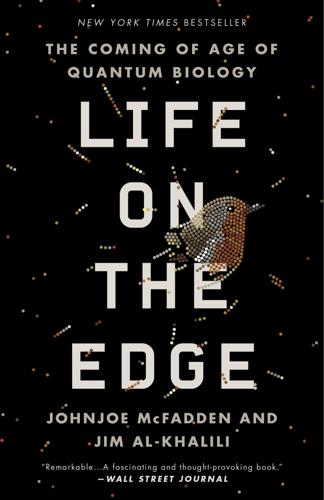
Life on the Edge: The Coming of Age of Quantum Biology
by
Johnjoe McFadden
and
Jim Al-Khalili
Published 14 Oct 2014
Reflections on the motive force of life In chapter 2 we peered inside a steam engine to discover that its motive force involved capturing the random motion of the sea of billiard-ball-like molecules and directing the molecular turbulence toward driving the piston within the cylinder. We then asked whether life can be entirely accounted for by the same “order from disorder” thermodynamic principle that drives steam engines. Is life just an elaborate steam engine? Many scientists are convinced that it is, but in a subtle way that needs a little elaboration. Complexity theory studies the tendency of certain forms of random chaotic motion to generate order through the phenomenon of self-organization. For example, as we have already discussed, the molecules within liquids are moving entirely chaotically, yet when your bathtub is draining the water spontaneously flows around the drain in an orderly clockwise or counterclockwise direction.
…
clownfish, see anemonefish cockroaches collagen: biomolecule collagenase action, 3.1, 3.2, 3.3 dinosaur fossil, 3.1, 9.1 role structure, 3.1, 3.2, 3.3 tadpole tail, 3.1, 3.2, 3.3, 3.4 collagenase: enzyme, 3.1, 3.2 how it works, 3.1, 3.2, 3.3, 3.4, 3.5, 3.6 jaws, 3.1, 3.2, 3.3, 3.4 role, 3.1, 3.2, 3.3, 3.4 structure, 3.1, 3.2 tadpole tail compass, avian entanglement mechanism, 1.1, 1.2, 1.3, 2.1, 6.1, 6.2, epl.1 magnetic sense, 1.1, 1.2, 6.1, 6.2 magnetite question radical pair reaction, 6.1, 6.2 role of light Schulten’s work Wiltschkos’ work compass, chemical, 1.1, 6.1, 6.2, 6.3 compass, conventional compass, inclination, 1.1, 1.2, 6.1, 6.2 compass, quantum compass, radical pair, 6.1, 6.2 compass, sun, 6.1, 6.2 complexity theory computational theory of mind computers, 8.1, 8.2, 8.3, 8.4 viruses Condon, Edward consciousness: binding problem, 8.1, 8.2, 8.3, 8.4 emergence EM field theories explanations function hard problem ideas, 8.1, 8.2, 8.3 ion channels, 8.1, 8.2 mechanics of thought Penrose-Hameroff theory quantum mechanical phenomenon, 8.1, 8.2, 8.3, 8.4 sense of “self,” what is it?

The Rise of the Network Society
by
Manuel Castells
Published 31 Aug 1996
For instance, he shows, mathematically, that if we represent systems of relations by a graph, the key to generating a small-world phenomenon (which epitomizes a networking logic) is the presence of a small fraction of very long-range, global edges, which contract otherwise distant parts of the graph, while most edges remain local, organized in clusters.100 This accurately represents the logic of local/global networking of innovation, as documented in this chapter. The important contribution of the complexity theory school of thought is its emphasis on non-linear dynamics as the most fruitful approach to understanding the behavior of living systems, both in society and in nature. Most of the work of the Santa Fe Institute researchers is of a mathematical nature, not an empirically based analysis of natural or social phenomena.
…
Capra shows how cutting-edge research in areas as diverse as cell development, global ecological systems (as represented by the controversial Gaia theory, and by Lovelock’s “Daisyworld” simulation model), neuroscience (as in the work of Gerald Edelman or Oliver Sacks), and studies on the origins of life based on emerging chemical network theory, are all manifestations of a non-linear dynamics perspective.102 Key new concepts, such as attractors, phase portraits, emergent properties, fractals, offer new perspectives in making sense of observations of behavior in living systems, including social systems – thus paving the way for a theoretical linkage between various fields of science. Not by reducing them to a common set of rules, but by explaining processes and outcomes from the self-generating properties of specific living systems. Brian Arthur, a Stanford economist with the Santa Fe Institute, has applied complexity theory to formal economic theory, proposing concepts such as self-reinforcing mechanisms, path dependency, and emergent properties, and showing their relevance in understanding the features of the new economy.103 In sum, the information technology paradigm does not evolve toward its closure as a system, but toward its openness as a multi-edged network.
…
Cappelli, Peter (1997) Change at Work, New York: Oxford University Press. —— and Rogovsky, Nicolai (1994) “New work systems and skill requirements”, International Labour Review, 133(2): 205–20. Capra, Fritjof (1996) The Web of Life, New York: Random House. —— (1999a) Personal communication, Berkeley, October. —— (1999b) “Complexity theory”, unpublished presentation at the University of California, Berkeley, November. Carey, M. and Franklin, J.C. (1991) “Outlook: 1990–2005 industry output and job growth continues slow into next century”, Monthly Labor Review, November: 45–60. Carnoy, Martin (1989) The New Information Technology: International Diffusion and its Impact on Employment and Skills.
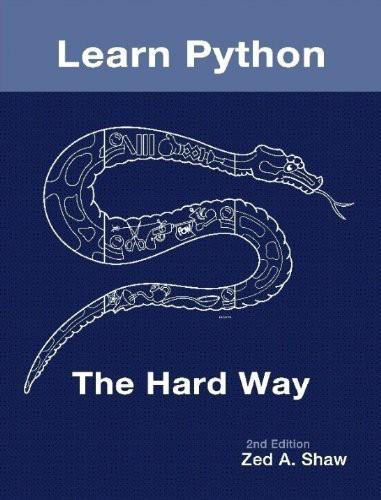
Learn Python the Hard Way
by
Zed Shaw
Published 1 Jan 2010
Exercise 27: Memorizing Logic Today is the day you start learning about logic. Up to this point you have done everything you possibly can reading and writing files, to the terminal, and have learned quite a lot of the math capabilities of Python. From now on, you will be learning logic. You won't learn complex theories that academics love to study, but just the simple basic logic that makes real programs work and that real programmers need every day. Learning logic has to come after you do some memorization. I want you to do this exercise for an entire week. Do not falter. Even if you are bored out of your mind, keep doing it.

The Kingdom of Speech
by
Tom Wolfe
Published 30 Aug 2016
It took him several years to work up the nerve to say publicly what he really thought.b The linguists William Stokoe of Gallaudet University (for the deaf), Gordon Hewes, and Roger Westcott edited one of the classics of late-twentieth-century liguistics, Language Origins, in 1974—with the proud claim that they had filled in a gap in Chomsky’s Syntactic Structures.c And on they came, linguists and anthropologists intent upon shoring up Chomsky’s great edifice with evidence…the gestural theory…the big brain theory…the social complexity theory…and…and… …and more and more scholars sat at their desks just like junior Chomskys trying to solve the mysteries of language with sheer brainpower. The results were not electrifying. Nevertheless, Chomsky had brought the field back to life. In February of 1967—bango!—Chomsky shot up clear through the roof of their little world of linguistics and lit up the sky…with a twelve-thousand-word excoriation of America’s role in the war in Vietnam entitled “The Responsibility of Intellectuals.”
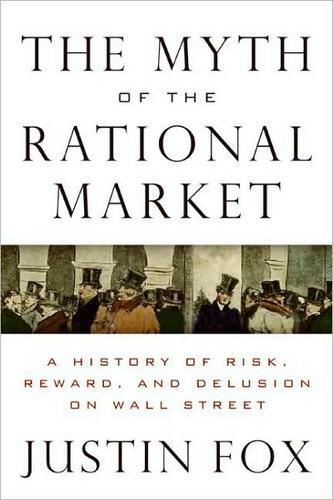
The Myth of the Rational Market: A History of Risk, Reward, and Delusion on Wall Street
by
Justin Fox
Published 29 May 2009
C., 248–49 Chaos (Gleick), 70, 234 chaos theory, 67, 134, 301–2, 304 Chase Financial Policy, 163–64 Chicago Board of Options Exchange, 145 Chicago Board of Trade, 40 Chicago Mercantile Exchange, 145, 194, 219,227–28, 230 Chicago Tribune, 35–36 Cisco Systems, 261–62, 262–63, 278, 284 Citrin, Robert, 362n. 17 Clinton, Bill, 244 CNA Financial, 125 Coca-Cola, 270–71 coin-flip game, 26, 212–13 collateralized debt obligations (CDOs), 314 Collins, Jim, 284 Colorado Springs, Colorado, 35–36 Columbia Business School, 211 Columbia University, 47–48 Commodities Corp., 223–24 commodities market, 20, 39–40, 69–72, 133, 145, 194–95 Commodity Futures Trading Commission, 244 Common Stocks as Long-Term Investments (Smith), 22 competition, 160, 181, 353–54n. 25 complexity theory, 134, 301–2, 304 Complexity (Waldrop), 302 computers, 29, 86–87, 99–101, 204, 219, 224, 232, 234, 303–4 The Condition of the Working-Class in England in 1844 (Engels), 369n. 1 conglomerates, 120, 166 Convertible Hedge Associates, 218 Cootner, Paul, 71, 134, 223 corporations, 4, 14, 66, 137, 153–55, 159–61, 351–52n. 2 Corrigan, Gerald, 243 Council of Institutional Investors, 272–73 Cowles, Alfred, III, 35–39, 42, 43, 51–52, 55, 68, 70, 98, 111, 323 Cowles Commission for Research in Economics, 37, 51–53, 65, 76–78, 89, 341n. 9 Cowles Foundation, 55, 58 credit default swaps, 314 credit markets, xii, 317 currency markets, 92–93, 145, 236, 241, 250 Darwin, Charles, 9 De Bondt, Werner, 187, 201, 206, 296 Debreu, Gerard, 77–78, 150, 344n. 9 debt, 25, 170, 313–15 decision theory, 177–78 deflation, 11, 19–20 DeLong, Brad, 251 demand curves, 39 Department of Applied Economics (Cambridge), 64 deregulation, 152, 258, 320 derivatives, xii, xiv, 150–52, 220–21, 235, 236–37 dice games, 27.
…
See also rational market hypothesis and agency costs, 162 and behavioral finance, 299–300 and the Chicago School, xiii, 101–5 and contrary evidence, 224–25 and corporate finance, 355n. 38 described, 153 and Fama, 97, 206–7 and finance, 202–6 and Friedman, 93 and Graham, 119–20 and information availability, 182 and Jensen, 107 and market anomalies, 304 and market crashes, 228, 232 and Mills, 320 and mutual funds, 125, 130, 131 origin of, 43, 73 and portfolio theory, 54–55, 57 and psychology, 201–2 resistance to, 105–7, 269–70 and risk, 139 and Samuelson, 73 and security analysis, 366n. 29 and Shiller, 196–98 and Shleifer, 247 and stock market bubbles, 315 and takeovers, 166–68 taxonomy of, 101 testing, 190, 194–95 “Efficient Markets: Theory and Evidence” (Fama), 104 Einstein, Albert, 7, 50, 66 Ellis, Charley, 130, 131 Employee Retirement Income Security Act (ERISA), 272, 290 Employee Retirement Security Act, 137–38 endogenous change, 305–6 endowment effect, 294 Engel, Louis, 97–98 Engels, Friedrich, 369n. 1 Engle, Robert, 139 Enron, 267, 283 environmental risk, 185 equilibrium theory and the Arrow-Debreu framework, 77–78 and asset pricing, 87 background of, 9–12 and behavioral finance, 301 and complexity theory, 304–6 and derivatives, 237 and intrinsic values, 193 and Keynesian economics, 35 and mathematics, 49–50 and Pareto’s Law, 349–50n. 2 and Reder, 89–90 and Samuelson, 61 equity risk premium, 141–43, 263–64 Erhard, Werner, 285, 319 Erhard Seminars Training (est), 285 event study method, 102 exchange rates, 92–93, 200, 250 executive compensation, 164–65, 274–79, 279–80, 284–85 expected utility, 51–52, 54, 75, 80, 176–77, 193 experimental economics, 188–90 Fallows, James, 365n. 8 Fama, Eugene, 323 and Alexander, 72 and Asness, 259–60 and behavioral finance, 295–96, 296–97, 298, 299–300 and the Chicago School of Economics, 96 and computing, 99–100 and the efficient market hypothesis, 101, 103–5, 193–94, 204, 206–8 and equity risk premium, 263 and experimental economics, 190 and the Journal of Financial Economics, 201 and Mandelbrot, 70, 134 and market crashes, 232 satirical depiction of, 287–88 and Shleifer, 248, 252 and stock price momentum, 209–10 and value stocks, 225 Fannie Mae, 313 Farmer, J.
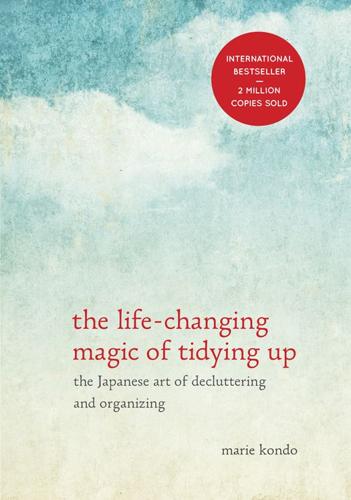
The Life-Changing Magic of Tidying Up: The Japanese Art of Decluttering and Organizing
by
Marie Kondo
Published 1 Jan 2011
The process of assessing how you feel about the things you own, identifying those that have fulfilled their purpose, expressing your gratitude, and bidding them farewell, is really about examining your inner self, a rite of passage to a new life. The yardstick by which you judge is your intuitive sense of attraction, and therefore there’s no need for complex theories or numerical data. All you need to do is follow the right order. So arm yourself with plenty of garbage bags and prepare to have fun. Start with clothes, then move on to books, papers, komono (miscellany), and finally things with sentimental value. If you reduce what you own in this order, your work will proceed with surprising ease.
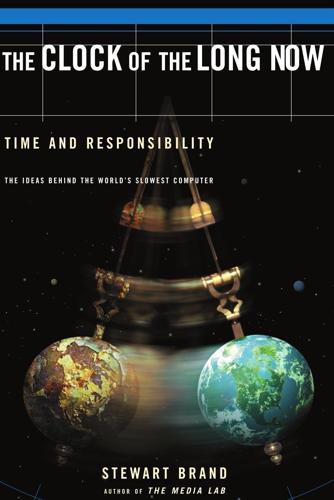
Clock of the Long Now
by
Stewart Brand
Published 1 Jan 1999
Many have noticed, these decades, that there seem to be fewer long-duration projects, even though there is growing wealth to invest in such work. Kevin Kelly once raised the question at a dinner with complexity scientists. In friendly but acerbic terms they mocked the ambitions of The Long Now Foundation. Kelly paraphrased their argument: Since complexity theory shows that even the fairly near future is inherently unpredictable, any polygenerational plan will guess wrong about what a future generation wants or needs. Suppose a previous generation had expended great effort planning for dirigible ports around the world in the year 2000! Inevitable technology obsolescence and economic discounting renders any long-term return of value impractical.
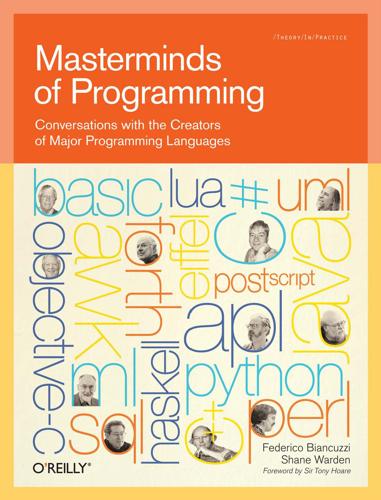
Masterminds of Programming: Conversations With the Creators of Major Programming Languages
by
Federico Biancuzzi
and
Shane Warden
Published 21 Mar 2009
Engineers learn a variety of skills during their training, first in university classes and then in on-the-job training working on real-world projects. Most important is to learn general principles. In engineering that includes the laws of physics and engineering principles of a particular discipline. In computing that would mean computer science principles such as algorithms, data structures, and complexity theory, as well as the principles of software engineering. In any field, it is important to develop a feel for how things are done. If software applications follow expected norms and are consistently designed, the skillful developer can often intuit the structure and behavior of a new system without searching piles of manuals.
…
What’s applicable and appropriate in one layer is not necessarily appropriate at the other layer, but you also can’t deny the reality of the other layers. James: That’s the whole concept of emergent systems. That’s what science is all about and language is all about. That’s one of the concepts from the concept of complexity theory. You get the sense of emergence, and there’s no one fundamental layer. Certainly people have understood that in computing for a long time. You have multiple layers, and no one of them is the true layer. When you say the pattern movement has left itself very narrow on purpose, do you think it’s stuck at one layer when it should address the whole stack?
…
I really think too many programmers have worried about making things run fast in the wrong places. It’s been an obsession in this field for years and years. Even though computers have gotten so much faster, that doesn’t matter. They’re still obsessed with what I’ll call the micro-optimizations. They don’t know complexity theory, they don’t understand the “order-of” stuff, but they’re worried about little, itty-bitty speed improvements. I wrote a subroutine package and then I went and profiled it. You can’t always guess where you need to optimize, you’ve got to go measure, and then you fix those problems. One subroutine took 30% of the time.
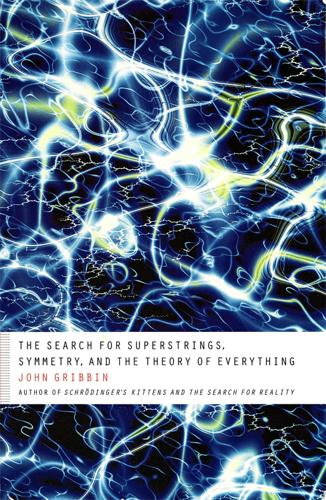
The Search for Superstrings, Symmetry, and the Theory of Everything
by
John Gribbin
Published 29 Nov 2009
.… Gribbin's straightforward approach leads the layman through the maze of scientific babble and ideas without either complicating or oversimplifying matters.” —Katrina Dixon, The Scotsman (U.K.) “Writing in his clear prose style, Gribbin introduces the general reader to the mysterious world of high-energy physics—a formidable task because of the complex theories involved; nevertheless, he translates these ideas into a readable, enjoyable narrative. His extensive historical treatment of physics research from the foundation work done in the 19th century to the latest concepts of superstrings is remarkable. Gribbin takes the reader to a world of multidimensions—a fictionlike picture—where scientists are trying to merge the forces of the universe in a grand unified theory called supersymmetry.”
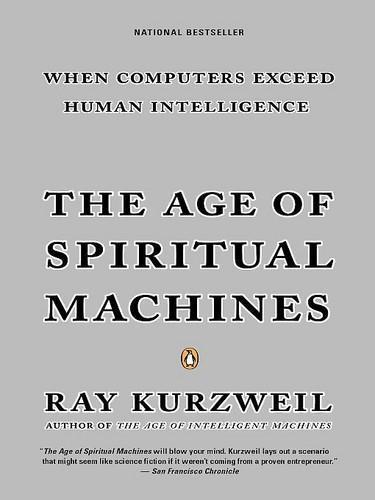
The Age of Spiritual Machines: When Computers Exceed Human Intelligence
by
Ray Kurzweil
Published 31 Dec 1998
The design of a jet engine, for example, involves more than one hundred variables and requires satisfying dozens of constraints. Evolutionary algorithms used by researchers at General Electric were able to come up with engine designs that met the constraints more precisely than conventional methods. Evolutionary algorithms, part of the field of chaos or complexity theory, are increasingly used to solve otherwise intractable business problems. General Motors applied an evolutionary algorithm to coordinate the painting of its cars, which reduced expensive color changeovers (in which a painting booth is put out of commission to change paint color) by 50 percent.
…
A $1,000 personal computer (in 1999 dollars) can perform about a trillion calculations per second.4 Supercomputers match at least the hardware capacity of the human brain—20 million billion calculations per second.5 Unused computes on the Internet are being harvested, creating virtual parallel supercomputers with human brain hardware capacity. There is increasing interest in massively parallel neural nets, genetic algorithms, and other forms of “chaotic” or complexity theory computing, although most computer computations are still done using conventional sequential processing, albeit with some limited parallel processing. Research has been initiated on reverse engineering the human brain through both destructive scans of the brains of recently deceased persons as well as noninvasive scans using high resolution magnetic resonance imaging (MRI) of living persons.

Connectography: Mapping the Future of Global Civilization
by
Parag Khanna
Published 18 Apr 2016
Oxford University Press, 2013. Bobbitt, Philip. The Shield of Achilles: War, Peace, and the Course of History. Anchor, 2003. Bodie, Zvi, Alex Kane, and Alan J. Marcus. Investments and Portfolio Management. McGraw-Hill/Irwin, 2011. Bousquet, Antoine, and Simon Curtis. “Beyond Models and Metaphors: Complexity Theory, Systems Thinking, and International Relations.” Cambridge Review of International Affairs 24, no. 1 (2011): 43–62. Boschma, Ron, and Ron Martin. “The Aims and Scope of Evolutionary Economic Geography. Utrecht University (Jan. 2010). Boyd, Danah. It’s Complicated: The Social Lives of Networked Teens.
…
The Big Ideas of Lee Kuan Yew. Straits Times Press, 2014. Jennings, Ken. Maphead: Charting the Wide, Weird World of Geography Wonks. Scribner, 2012. Jervis, Robert. System Effects: Complexity in Political and Social Life. Princeton University Press, 1999. Johnson, Neil. Simple Complexity: A Clear Guide to Complexity Theory. Oneworld, 2010. Kagan, Robert. Dangerous Nation: America’s Foreign Policy from Its Earliest Days to the Dawn of the Twentieth Century. Vintage, 2007. Kagan, Robert A. Adversarial Legalism: The American Way of Law. Harvard University Press, 2003. Kahn, Matthew E. Climatopolis: How Our Cities Will Thrive in the Hotter Future.
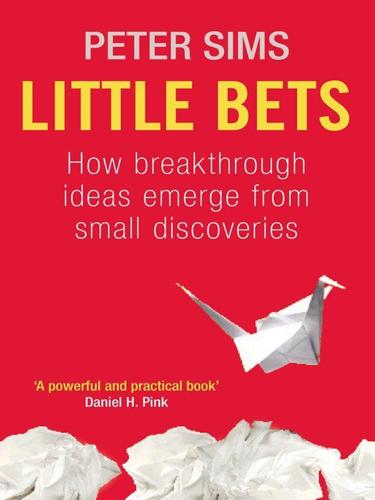
Little Bets: How Breakthrough Ideas Emerge From Small Discoveries
by
Peter Sims
Published 18 Apr 2011
Some sat so still, no one could tell whether they were alive or dead. Research institutions gathered statistics about the causes of the sudden migration, but soon the number of dead bodies exceeded the means to collect and bury them. Yunus began to dread his own lectures. “What good were all my complex theories when people were dying of starvation on the sidewalks and porches outside my lecture hall?” he asked himself. “Nothing in the economic theories I taught reflected the life around me.” It was Yunus’s opinion that “Economists spend their talents detailing the processes for development and prosperity, but rarely reflect the origin and development of poverty and hunger.”

To Sell Is Human: The Surprising Truth About Moving Others
by
Daniel H. Pink
Published 1 Dec 2012
And positivity during your efforts doesn’t mean coating yourself or others in a thick glaze of sugar. In fact, a particular recipe—a golden ratio of positivity—leads to the best results. In research she carried out with Marcial Losada, a Brazilian social scientist who uses mathematical models and complexity theory to analyze team behavior,12 Fredrickson had a group of participants record their positive and negative emotions each day for four weeks.* She and Losada calculated the ratio of positive to negative emotions of the participants—and then compared these ratios with the participants’ scores on a thirty-three-item measurement of their overall well-being.

Peer-to-Peer
by
Andy Oram
Published 26 Feb 2001
It’s worth noting in passing that the previous construction is not proven to be nonparallelizable. Besides the product-of-two-primes problem, its security rests on no one knowing how to perform the repeated modular squaring in parallel. This problem is tied up with the “P vs. NC” problem in computational complexity theory and is outside the scope of this chapter. Similar to the better known “P vs. NP” problem, which concerns the question, “Which problems are easy?” the P vs. NC problem asks, “Which problems are parallelizable?”[56] Fungible micropayments All of the micropayment schemes we have previously described are nonfungible.
…
Our discussion is not meant as exhaustive, yet it provides some examples of various cryptographic primitives and technologies used for electronic cash: public key encryption, hash functions, digital signatures, certificates, blinding functions, proofs of knowledge, and different one-way and trap door problems based on complexity theory. The list reads like a cryptographic cookbook. Indeed, the theoretical foundations of digital cash—and the design of systems—have been actively researched and developed over the past two decades. Only in the past few years, however, have we begun to see the real-world application of micropayments and digital cash, spurred by the growth of the Internet into a ubiquitous platform for connectivity, collaboration, and even commerce.

Hit Refresh: The Quest to Rediscover Microsoft's Soul and Imagine a Better Future for Everyone
by
Satya Nadella
,
Greg Shaw
and
Jill Tracie Nichols
Published 25 Sep 2017
I became particularly interested in a theoretical aspect of computer science that was, at its heart, designed to make fast decisions in an atmosphere of great uncertainty and finite time. My focus was a computer science puzzle known as graph coloring. No, I wasn’t coloring graphs with crayons. Graph coloring is part of computational complexity theory in which you must assign labels, traditionally called colors, to elements of a graph within certain constraints. Think of it this way: Imagine coloring the U.S. map so that no state sharing a common border receives the same color. What is the minimal number of colors you would need to accomplish this task?
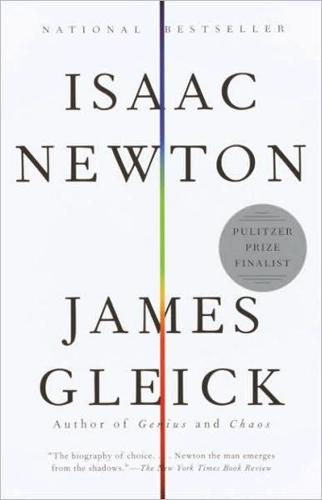
Isaac Newton
by
James Gleick
Published 1 Jan 2003
14 Its publication notwithstanding, he had never stopped working on the Principia. He was preparing a second edition. He scoured Greek texts for clues to his belief that the ancients had known about gravity and even the inverse-square law. He contemplated new experiments and sought new data for his complex theory of the moon’s motions. Besides correcting printer’s errors, he was drafting and redrafting whole new sections, refining his rules for philosophy. He struggled with the inescapable hole in his understanding of gravity’s true nature. He twisted and turned: “Tis inconceivable that inanimate brute matter should (without the mediation of something else which is not material) operate upon & affect other matter without mutual contact,” he wrote one correspondent.
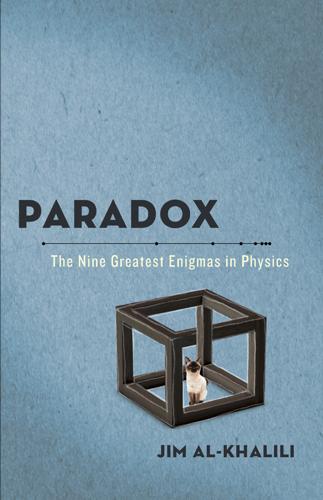
Paradox: The Nine Greatest Enigmas in Physics
by
Jim Al-Khalili
Published 22 Oct 2012
There is also a fascinating and possibly even more important flip side of chaos: that the repeated application of the same simple rules which lead to chaotic behavior, starting from organized regular motion, can sometimes lead from bland, structureless form to the emergence of beautiful and complex patterns—that we can get order and complexity where there was none before. You start with something without structure, allow it to evolve, and you begin to see structure and patterns spontaneously emerging. This idea has led to the spawning of new academic disciplines known as emergence and complexity theory, which are beginning to play a major role in many diverse areas, from biology to economics to artificial intelligence. FREE WILL When it comes to what all this has to say about the nature of free will (and therefore about the Paradox of Laplace’s Demon), there are still many different philosophical views and the issue is far from resolved.

On Nature and Language
by
Noam Chomsky
Published 16 Apr 2007
Which picture of himself does John prefer <which picture of himself> b. Which picture of John does he prefer <which picture of John> The binding principles apply on these richer representations giving the right result: the anaphor is bound by the name in (51a), the name cannot enter into a coreference relation with the c-commanding pronoun in (51b). No complex theory of reconstruction is needed, and the empirically correct result is achieved by simply tracing “movement” back to its elementary computational components (on the adjustments needed to get appropriate operator-variable structures at LF see Chomsky (1993), Fox (2000), Rizzi (2001b); on the fact that it is 43 On nature and language apparently sufficient to bind only one occurrence of the anaphor in (51a) see the references just quoted, and also the discussion in Belletti and Rizzi (1988); on the different behavior of arguments and adjuncts under reconstruction, Lebeaux (1988)).
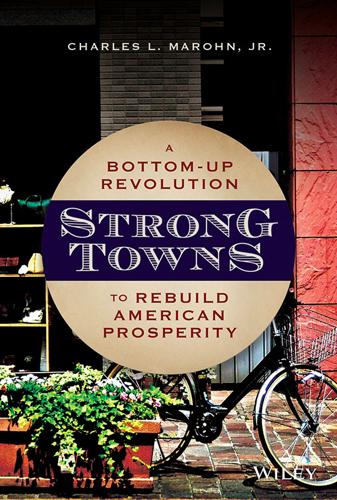
Strong Towns: A Bottom-Up Revolution to Rebuild American Prosperity
by
Charles L. Marohn, Jr.
Published 24 Sep 2019
We’re more comfortable behaving as if our cities are merely complicated. Increasingly, they are not. Notes 1 Ann Sussman and Justin B. Hollander, Cognitive Architecture: Designing For How We Respond to the Built Environment (New York: Routledge, 2015). 2 Ibid. 3 Neil Johnson, Simply Complexity: A Clear Guide to Complexity Theory (London: Oneworld Publications, 2017). 2 Incremental Growth Take a tentative step in the dark. If you do not run into something, you just gained knowledge. If you hit a wall, the incremental nature of your advance gives you wisdom without much lost. Now take an abrupt leap in the dark.

Me Talk Pretty One Day
by
David Sedaris
Published 4 Jun 2001
The bet had been the sole reason for our visit, and the resulting insufferable tour of Buildings A through D taught us never again to express an interest in our father’s workplace. My own scientific curiosity eventually blossomed, but I knew enough to keep my freakish experiments to myself. When my father discovered my colony of frozen slugs in the basement freezer, I chose not to explain my complex theories of suspended animation. Why was I filling the hamster’s water beaker with vodka? “Oh, no reason.” If my experiment failed, and the drunken hamster passed out, I’d just put her in the deep freeze, alongside the slugs. She’d rest on ice for a few months and, once thawed and fully revived, would remember nothing of her previous life as an alcoholic.
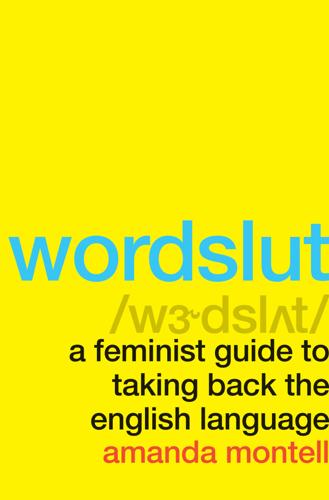
Wordslut: A Feminist Guide to Taking Back the English Language
by
Amanda Montell
Published 27 May 2019
In her book, Tannen claims that from early childhood, women and men are socialized to live in two opposing cultures with two opposing sets of values, so they grow up to understand things differently. Not better or worse, just different. As a result, men’s goals when they talk are to communicate information, while women’s are to form connections. Another, more complex theory suggests that women’s conversational style has developed as a coping strategy that reflects their position in our culture. This argument is inspired by Janet Holmes, who suggests that our society requires women to be the emotional laborers—shoulders to cry on, carriers of sympathetic burdens.

The Planet on the Table
by
Kim Stanley Robinson
Published 2 Jan 1986
“But there is no close security guarding the banks containing old art books. No one expects them to be tampered with.” “It’s astonishing,” I said with a wave of my fork, “it is baroque, it is byzantine in its ingenuity!” “Yes,” she said. “Beautiful, in a way.” “However,” I pointed out to her, “you have no proof— only this perhaps over-complex theory. You have found no first edition of a book to confirm that the computer-generated volumes add Heidi’s painting, and you have found no physical anachronism in the painting itself.” Gloomily she clicked her fork against her empty salad bowl, then rose to refill it. “It is a problem,” she admitted.
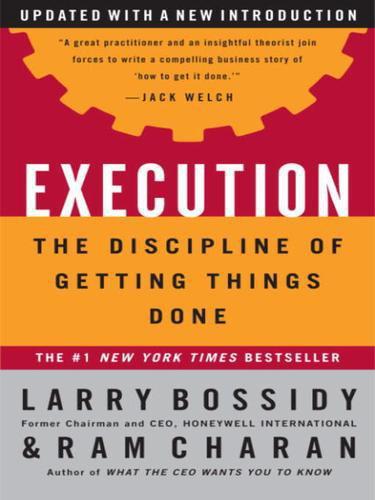
Execution: The Discipline of Getting Things Done
by
Larry Bossidy
Published 10 Nov 2009
In this chapter, we present a new reality-based framework for cultural change that creates and reinforces a discipline of execution. This approach is practical and completely linked to measurable business results. The basic premise is simple: cultural change gets real when your aim is execution. You don’t need a lot of complex theory or employee surveys to use this framework. You need to change people’s behavior so that they produce results. First you tell people clearly what results you’re looking for. Then you discuss how to get those results, as a key element of the coaching process. Then you reward people for producing the results.

Design for Hackers: Reverse Engineering Beauty
by
David Kadavy
Published 5 Sep 2011
It’s a good idea to aim to build upon this success by targeting these keywords further, or targeting related keyphrases. Look for synonyms that you may not already be using (bump/lump, mouth/lip), and update your content accordingly. Ranking highly for your target keywords There are endless complex theories on just how a site ranks highly on search engines. Some of those theories have no basis at all. The truth is, nobody except little robots at Google knows just how a site ranks higher than another. What we do know is that the content of a page, how the page is coded, and the authority of other pages that link to a page – especially for the topic in question – are the most powerful dictators of how well a page ranks on search engines.

First Light: Switching on Stars at the Dawn of Time
by
Emma Chapman
Published 23 Feb 2021
Oddly, The New York Times still placed a negative spin on that success in its headline ‘Eclipse 4 seconds late here, but a brilliant show’.10 The complexities of the Solar System are now understood to such a degree that computers can predict eclipses to within one second, an accuracy level that is unlikely to improve. This stagnation is not due to the need for better computers, or other complex theories, or more sinister-looking men on rooftops. The rate at which the Earth spins, about 23 hours, 56 minutes and 4 seconds per revolution, is slowing down because of the braking effect of the gravitational pull of the Moon. Thus a day will be longer in the future, and we cannot predict by how much because the rate is decreasing erratically.
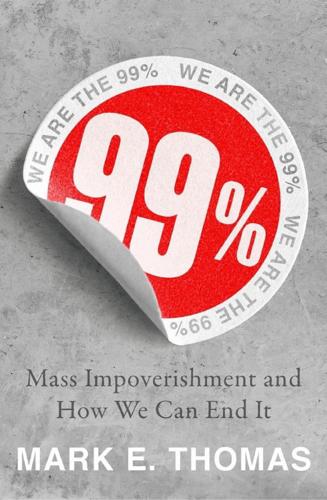
99%: Mass Impoverishment and How We Can End It
by
Mark Thomas
Published 7 Aug 2019
But it is not true. Part Three shows that if we discard the narrative of unaffordability and take steps now to accelerate economic growth and to ensure that the benefits of that growth are shared more fairly, we can create an attractive future for coming generations. Seeing the solutions doesn’t need any complex theory. It just needs us to open our eyes to the facts. We can see what works and what doesn’t work, both in our own history and by looking around the world. Then we just need to make sure we do what works. Far from there being no alternative to our current plight, there is a wide spectrum of different forms of capitalism available to us – and some of them work much better than others.

Average Is Over: Powering America Beyond the Age of the Great Stagnation
by
Tyler Cowen
Published 11 Sep 2013
The underlying models just aren’t getting that much better, and when the underlying models are more complicated, they very often are not more persuasive to the typical research economist. I would sum up the blend as follows: (a) much better data, (b) higher standards for empirical tests, and (c) lots of growth in complex theory but not matched by a corresponding growth in impact. Mathematical economics, computational economics, complexity economics, and game theory continue to grow, as we would expect of a diverse and specialized discipline, but they are if anything losing relative ground in terms of influence. Economics is becoming less like Einstein or Euclid, and more like studying the digestive system of a starfish.

Simple Rules: How to Thrive in a Complex World
by
Donald Sull
and
Kathleen M. Eisenhardt
Published 20 Apr 2015
Kathy’s simple rules journey began when she and Shona Brown began studying the strategies of technology-based companies as Shona worked on her dissertation. They were searching for fresh ideas that would break away from the stale paradigms of traditional strategy and organization theory. They found those ideas at the “edge of chaos” in complexity theory, and penned Competing on the Edge: Strategy as Structured Chaos. This project became a precursor to the simple rules research. Kathy is also indebted to another former PhD student, Professor Chris Bingham of the University of North Carolina. Chris was the perfect research partner, and together they pushed forward insights into how simple rules are learned and why they work so well.

Rethinking Money: How New Currencies Turn Scarcity Into Prosperity
by
Bernard Lietaer
and
Jacqui Dunne
Published 4 Feb 2013
It would be some two centuries later, with the development of computers with massive computational prowess, until equations that would have taken a stadium full of people working for hundreds of years to solve could be solved in a matter of seconds. Relatively precise solutions to the three-body problem were demonstrated. A new field known by various names, including nonlinear dynamics, fractals, chaos, or complexity theory, began to emerge. The concept of the butterfly effect, whereby a flutter of a butterfly wing might cause a massive change in the weather countries away, became common knowledge. In short, it was now understood that everything affects everything else in multifaceted, often unpredictable ways.

Cognitive Gadgets: The Cultural Evolution of Thinking
by
Cecilia Heyes
Published 15 Apr 2018
There is always tension in Darwinian evolutionary models between variant generation and faithful retention (Campbell, 1974), but, to the extent that metacognitive social learning strategies support detailed and accurate copying, they are likely to help cultural evolution, rather than the smart choices of a succession of individual agents, to produce complex theories, artifacts, and practices.2 CONCLUSION In the first section, I surveyed evidence that information is encoded for long-term storage by the same cognitive processes when the learning is either social or asocial—that is, when learning is and is not influenced by contact with another agent. This view is no longer controversial.

Quackery: A Brief History of the Worst Ways to Cure Everything
by
Lydia Kang
and
Nate Pedersen
Published 16 Oct 2017
Don’t worry, though, you can still find reproductions on the Internet. The Orgone Box Not long after the downfall of rectal dilators, a psychologist with an entrancing philosophy about sexual energy emerged to influence Western culture. Dr. Wilhelm Reich, a member of the second wave of post-Freud psychoanalysts, developed a complex theory about a universal life force he called “orgone,” the same universal life force acupuncturists might refer to as “qi,” or simply “The Force” to Star Wars enthusiasts. Reich argued that orgone was present in all living matter and that many diseases were the result of orgone flow being either restricted or not available in sufficient quantities.

Artificial Unintelligence: How Computers Misunderstand the World
by
Meredith Broussard
Published 19 Apr 2018
Meanwhile, sciences that involve human beings rather than elementary particles have proven more resistant to elegant mathematics. Economists suffer from physics envy over their inability to neatly model human behavior. An informal, incomplete grammar of the English language runs over 1,700 pages. Perhaps when it comes to natural language processing and related fields, we’re doomed to complex theories that will never have the elegance of physics equations. But if that’s so, we should stop acting as if or goal is to author extremely elegant theories, and instead embrace complexity and make use of the best ally we have: the unreasonable effectiveness of data.27 Data is unreasonably effective—seductively so, even.
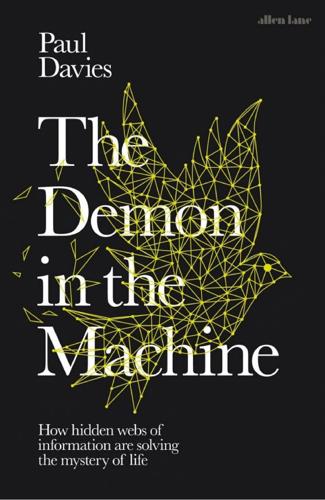
The Demon in the Machine: How Hidden Webs of Information Are Finally Solving the Mystery of Life
by
Paul Davies
Published 31 Jan 2019
An excellent critical review of the subject is given by Ross D. Hoehn et al., ‘Status of the vibrational theory of olfaction’, Frontiers in Physics, 19 March 2018; doi: 10.3389/fphy.2018.00025. 12. Scott Aaronson, ‘Are quantum states exponentially long vectors?’ Proceedings of the Oberwolfach Meeting on Complexity Theory, arXiv: quant-ph/0507242v1, accessed 8 March 2010. 13. The issue here is that there are different types of noise and their disruptive effects on quantum systems can be very different. Recent calculations have identified a regime in which a certain form of noise paradoxically enhances quantum transport effects.

Nuts and Bolts: Seven Small Inventions That Changed the World (In a Big Way)
by
Roma Agrawal
Published 2 Mar 2023
He questioned every theory he came across from the ancients and tested them with experiments, leading to his seminal work. He wrote: ‘The duty of man who investigates the writing of scientists, if learning the truth is his goal, is to make himself an enemy of all that he reads.’ In the subsequent centuries, scientists built on Ibn al-Haytham’s foundations. Today, we have complex theories of what light is: that light is formed from waves; that it’s formed from tiny particles called photons; that it is a bit of both. I’m going to use the wave theory of light for ease which says that light is a wave that carries energy and travels through space because of the vibrations or oscillations of electric fields and magnetic fields.

The 100 Best Vacations to Enrich Your Life
by
Pam Grout
Published 14 May 2007
In these three- to four-day programs for adults and seven- to eight-day programs for teens, stargazers find themselves observing, photographing, and electronically imaging various celestial objects through professional-grade telescopes, devising theories on globular clusters, and identifying near-Earth asteroids that only astronomy professors usually know about. The enthusiastic teacher, Don McCarthy, the University of Arizona professor who heads the programs, is so much fun (he has a whole collection of music about stars—for example, from Annie, Phantom of the Opera, and Cats) and has such a knack for explaining complex theories that past campers keep coming back year after year. In fact, Lisa Roubal, codirector of the program, jokes that she practically has to beg Astronomy Camp alumni to wait a year before returning so there will be room for new campers. Astronomy Camp, which has been going strong since 1988, takes place at Mount Lemmon, a mountaintop observatory just north of Tucson.

Cyber War: The Next Threat to National Security and What to Do About It
by
Richard A. Clarke
and
Robert Knake
Published 15 Dec 2010
The horror that could be caused by nuclear weapons (and the fear that any use would lead to extensive use) deterred nuclear-weapons nations from using their ultimate weapons against each other. It also deterred nations, both nuclear-armed and not, from doing anything that might provoke a nuclear response. Strategists developed complex theories about nuclear deterrence. Herman Kahn developed a typology with three distinct classes of nuclear deterrence in his works in the 1960s. His theories and analyses were widely studied by civilian and military leaders in both the United States and the Soviet Union. His clear, matter-of-fact writing about the likely scope of destruction in books like On Thermonuclear War (1960) and Thinking About the Unthinkable (1962) undoubtedly helped to deter nuclear war.

The Greatest Story Ever Told--So Far
by
Lawrence M. Krauss
Published 21 Mar 2017
It is important to note that ’t Hooft would never have approached the problem if Veltman had not been obsessed with it, even as most others gave up. The notion that one might ultimately extend the techniques that Feynman and others had developed to tame quantum electrodynamics to try to understand more complex theories such as spontaneously broken Yang-Mills theory was simply viewed as naïve by many in the field. But Veltman stayed with the project, and he wisely found a graduate student who was also a genius to help him. It took a while for ’t Hooft’s and Veltman’s ideas to sink in and the new techniques ’t Hooft had developed to become universally adopted, but within a year or so physicists agreed that the theory that Weinberg, and later Salam, had proposed, made sense.

The End of College: Creating the Future of Learning and the University of Everywhere
by
Kevin Carey
Published 3 Mar 2015
He and two coauthors recently name-checked a well-known article called “The Unreasonable Effectiveness of Mathematics in the Natural Sciences,” which “examines why so much of physics can be neatly explained with simple mathematical formulas such as F = ma or E = mc2. Meanwhile, sciences that involve human beings rather than elementary particles have proven more resistant to elegant mathematics.” “Perhaps when it comes to natural language processing and related fields,” they wrote, “we’re doomed to complex theories that will never have the elegance of physics equations. But if that’s so, we should stop acting as if our goal is to author extremely elegant theories, and instead embrace complexity and make use of the best ally we have: the unreasonable effectiveness of data.” Learning and human cognition are definitely among the “related fields.”

The Future of the Brain: Essays by the World's Leading Neuroscientists
by
Gary Marcus
and
Jeremy Freeman
Published 1 Nov 2014
A corollary is that circuit function is fully decomposable (given complete data) into neat sequences of causes and effects. In this sense, circuits resemble Laplacian models of classical mechanics, with circuit elements exerting purely local effects on each other and with connections mediating specific causal roles. In contrast, modern approaches from complexity theory and network science emphasize that global outcomes are irreducible to simple localized causes, and that the functioning of the network as a whole transcends the functioning of each of its individual elements. One key concept is that of “emergence.” Emergence builds on the basic observation that collective interactions among the elements of complex networked systems often give rise to new properties that do not exist at lower levels of organization.
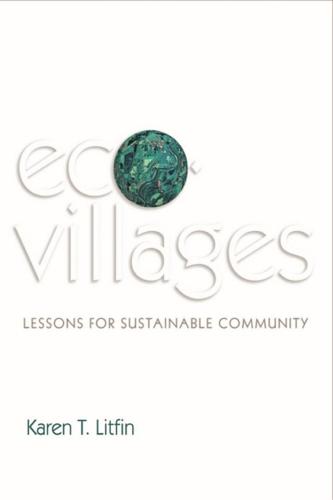
Ecovillages: Lessons for Sustainable Community
by
Karen T. Litfin
Published 16 Dec 2013
After all, we can have the community of our dreams only if we are willing to become the kind of person that community needs. 1 Through online research, I was aware of the accusation before my visit and even attempted to interview disgruntled former members. The only evidence I found for the accusation were some highly eccentric beliefs and a charismatic leader. I found, however, no coercion. 2 Dieter Duhm, The Sacred Matrix, Belzig, Germany: Verlag Meiga, 2008. 3 Rooted in complexity theory, sociocracy views social organizations as analogous to ecosystems: self-organizing and self-correcting through feedback loops. See John Buck and Sharon Villines, We the People: Consenting to a Deeper Democracy, Sociocracy.info, 2007. 4 Jeff Merrifield, Damanhur: The Story of the Extraordinary Artistic and Spiritual Community, Santa Cruz, CA: Hanford Mead Publishers, 2006, p. 121. 5 See Marshall B.
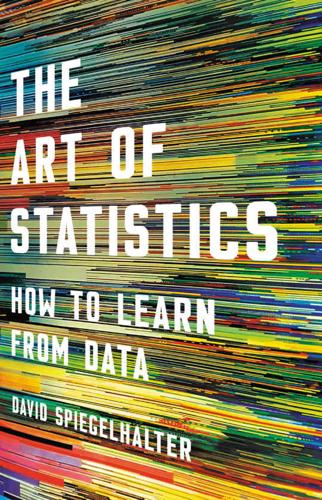
The Art of Statistics: How to Learn From Data
by
David Spiegelhalter
Published 2 Sep 2019
An alternative is to apply the Bonferroni method, and demand a P-value of 0.05/25,000, or 1 in 500,000, for the most extreme GP; for Shipman this would have occurred in 1984, when he had 105 deaths compared to the 59.2 that would be expected, an excess of 46. But even this would not be a reliable procedure to apply to all the GPs in the country. For the second problem is that we are carrying out repeated significance tests, as each year’s new data are added on and another test performed. There is some remarkable but complex theory, known by the delightful term ‘the Law of the Iterated Logarithm’, that shows that if we carry out such repeated testing, even if the null hypothesis is true, then we are certain to eventually reject that null at any significance level we choose. This is very worrying, as it means that if we keep testing a doctor for long enough then we are guaranteed to eventually think we have found evidence of excess mortality, even if in reality their patients are not subject to any excess risk.

The Art of Statistics: Learning From Data
by
David Spiegelhalter
Published 14 Oct 2019
An alternative is to apply the Bonferroni method, and demand a P-value of 0.05/25,000, or 1 in 500,000, for the most extreme GP; for Shipman this would have occurred in 1984, when he had 105 deaths compared to the 59.2 that would be expected, an excess of 46. But even this would not be a reliable procedure to apply to all the GPs in the country. For the second problem is that we are carrying out repeated significance tests, as each year’s new data are added on and another test performed. There is some remarkable but complex theory, known by the delightful term ‘the Law of the Iterated Logarithm’, that shows that if we carry out such repeated testing, even if the null hypothesis is true, then we are certain to eventually reject that null at any significance level we choose. This is very worrying, as it means that if we keep testing a doctor for long enough then we are guaranteed to eventually think we have found evidence of excess mortality, even if in reality their patients are not subject to any excess risk.

A History of the World in Seven Cheap Things: A Guide to Capitalism, Nature, and the Future of the Planet
by
Raj Patel
and
Jason W. Moore
Published 16 Oct 2017
Dirección General de Estadística, ed. 1955. Tercer censo agrícola ganadero y ejidal, 1950. Mexico City: Dirección General de Estadística. Disney, Anthony R. 2009. A History of Portugal and the Portuguese Empire. Vol 2. Cambridge: Cambridge University Press. Dodds, Joseph. 2011. Psychoanalysis and Ecology at the Edge of Chaos: Complexity Theory, Deleuze|Guattari and Psychoanalysis for a Climate in Crisis. London: Routledge. Doherty, Brian, Matthew Paterson, Alexandra Plows, and Derek Wall. 2003. “Explaining the Fuel Protests.” British Journal of Politics and International Relations 5, no. 1: 1–23. Dohrn-van Rossum, Gerhard. 1996.
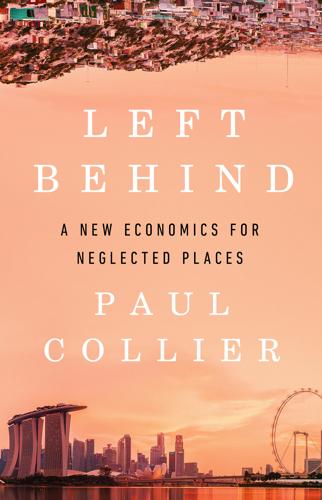
Left Behind
by
Paul Collier
Published 6 Aug 2024
What can we do to catch up? As an economist rigorously trained in the dominant Anglo-American school of thought, I know there are orthodox answers to questions about the policies appropriate for places hit by a shock. Their intellectual origin is in Chicago, where Milton Friedman visualized a complex theory of why market forces could be trusted to put things right through the image of a harp with taut strings. Adverse shocks, like the collapse of a mining industry, were analogous to plucking the harp’s strings: though they oscillate for a while, they soon settle back to their initial state. The shock will lower wages and property prices; that will create opportunities; and because the market is greedy for them, money will flood in, driving wages and prices back up again.
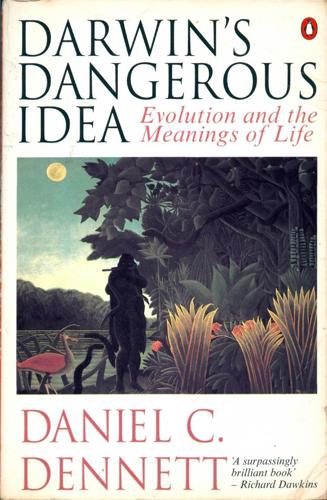
Darwin's Dangerous Idea: Evolution and the Meanings of Life
by
Daniel C. Dennett
Published 15 Jan 1995
That is the sin of greedy reductionism, but notice that it is only when overzealousness leads to falsification of the phenomena that we should condemn it. In itself, the desire to reduce, to unite, to explain it all in one big overarching theory, is no more to be condemned as immoral than the contrary urge that drove Baldwin to his discovery. It is not wrong to yearn for simple theories, or to yearn for phenomena that no simple (or complex!) theory could ever explain; what is wrong is zealous misrepresentation, in either direction. Darwin's dangerous idea is reductionism incarnate,9 promising to unite and explain just about everything in one magnificent vision. Its being the idea of an algorithmic process makes it all the more powerful, since the substrate neutrality it thereby possesses permits us to consider its application to just about anything.
…
Kauffman's new book, The Origins of Order: Self-Organization and Selection in Evolution (1993), summarizes and extends the research he has been engaged in for several decades, and lets us see for the first time how he himself places his ideas in the context of the history of the field. Many have heralded him as a Darwin-slayer, finally driving that oppressive presence from the scene, and doing it, moreover, with the flashing blade of {221} brand-new science: chaos theory and complexity theory, strange attractors and fractals. He himself has been tempted by that view in the past (Lewin 1992, pp. 40-43), but his book bristles with warnings, fending off the embrace of the anti-Darwinians. He begins the preface of his book (p. vii) by describing it as "an attempt to include Darwinism in a broader context": Yet our task is not only to explore the sources of order which may lie available to evolution.
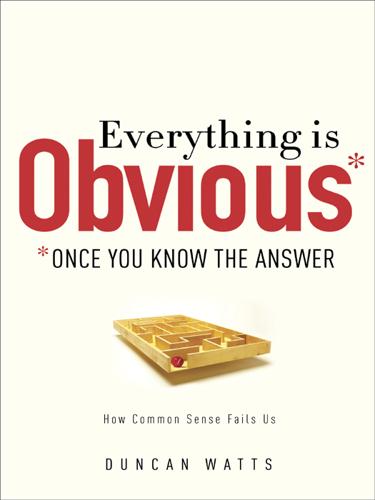
Everything Is Obvious: *Once You Know the Answer
by
Duncan J. Watts
Published 28 Mar 2011
Dawes (1999), in fact, makes the stronger argument that human “cognitive capacity shuts down in the absence of a story.” 16. For example, a preference for simplicity in explanations is deeply embedded in the philosophy of science. The famous Ockham’s razor—named for the fourteenth-century English logician William of Ockham—posits that “plurality ought never be posited without necessity,” meaning essentially that a complex theory ought never to be adopted where a simpler one would suffice. Most working scientists regard Ockham’s razor with something close to reverence—Albert Einstein, for example, once claimed that a theory “ought to be as simple as possible, and no simpler”—and the history of science would seem to justify this reverence, filled as it is with examples of complex and unwieldy ideas being swept away by simpler, more elegant formulations.

Fooled by Randomness: The Hidden Role of Chance in Life and in the Markets
by
Nassim Nicholas Taleb
Published 1 Jan 2001
Brent, Joseph, 1993, Charles Sanders Peirce: A Life. Bloomington: Indiana University Press. Brocas, I., and J. Carillo, eds., 2003, The Psychology of Economic Decisions: Vol. 1: Rationality and Well-being. Oxford: Oxford University Press. Brock, W. A., and P.J.F. De Lima, 1995, “Nonlinear Time Series, Complexity Theory, and Finance.” University of Wisconsin, Madison—Working Papers 9523. Brock, W. A., D. A. Hsieh, and B. LeBaron, 1991, Nonlinear Dynamics, Chaos, and Instability: Statistical Theory and Economic Evidence, Cambridge, Mass.: MIT Press. Brockman, John, 1995, The Third Culture: Beyond the Scientific Revolution.
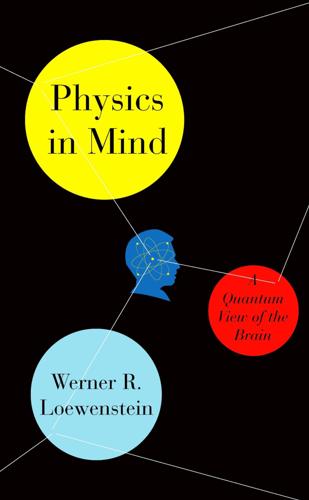
Physics in Mind: A Quantum View of the Brain
by
Werner Loewenstein
Published 29 Jan 2013
We picked among the arrows—and it was out of sheer self-interest—the one bearing for our little perch in the universe. But all the others are made of the same gossamery stuff. And gossamery is the right word. No matter how physicists and information theorists dealt with it, whether by using Boltzmann’s statistical mechanics, Shannon’s equation, complexity theory, or Planck’s energy-frequency relationship, and no matter how exact the quantifications, it always was, and could not escape being, something ethereal. Well, no longer. The astonishing experiments with quantum-computing molecules dealt with in the preceding chapter give us an almost palpable experience.

The Clockwork Universe: Saac Newto, Royal Society, and the Birth of the Modern WorldI
by
Edward Dolnick
Published 8 Feb 2011
There are almost no other historical examples of so strange a performance as this use/nonuse of calculus. To get something of its flavor, we have to imagine far-fetched scenarios. Think, for instance, of a genius who grew up using Roman numerals but then invented Arabic numerals. And then imagine that he conceived an incredibly complex theory that relied heavily on the special properties of Arabic numerals—the way they make calculations easy, for instance. Finally, imagine that when he presented that theory to the world he used no Arabic numerals at all, but only Roman numerals manipulated in obscure and never-explained ways. Decades after the Principia, Newton offered an explanation.
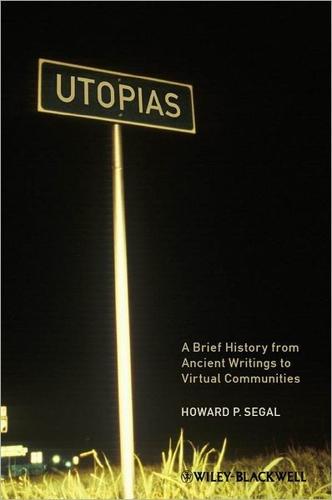
Utopias: A Brief History From Ancient Writings to Virtual Communities
by
Howard P. Segal
Published 20 May 2012
In 1795 he managed to secure work as a clerk in a cloth-making concern and, a few years later, as a traveling salesman. In 1826 he finally settled in Paris. Fourier’s first book appeared in 1808; his second not until 1822. These as well as his subsequent works received little attention, thanks to his terrible writing style. Only late in life did he gain a following, but he remained a reclusive bachelor whose complex theories of passionate attraction were cosmically distant from his personal practices.25 Fourier persistently preached that his version of utopia could come about only in small communities whose inhabitants actually knew one another, not in big cities filled with anonymous masses. He asserted the economic and moral superiority of agriculture over manufacturing.
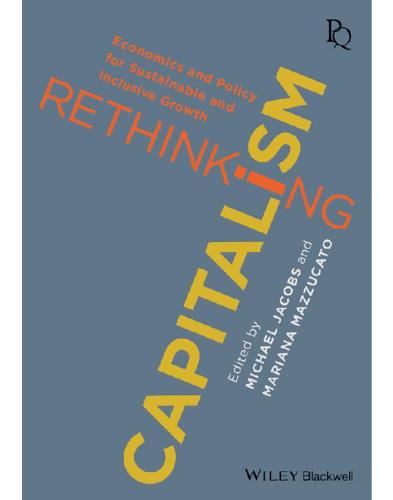
Rethinking Capitalism: Economics and Policy for Sustainable and Inclusive Growth
by
Michael Jacobs
and
Mariana Mazzucato
Published 31 Jul 2016
Getting the public finances into balance should be the overwhelming priority of fiscal policy. Taxation is necessary; but because it tends to disincentivise wealth creation and work, it should be kept as low as possible. Within each of these propositions lurks many a disagreement among academic economists, often informed by subtly complex theory and detailed empirical evidence. But it is not hard to find these views expressed in public debate; and they have dominated the practice of policy-making over recent years. The orthodox model provides an attractively simple framework for thinking about economics and policy. It combines the mathematical elegance of neoclassical microeconomics with plausible claims about the macroeconomy.

The Rapture of the Nerds
by
Cory Doctorow
and
Charles Stross
Published 3 Sep 2012
There’s a distant, roaring sob and another crash. “Who’d have thought he had it in him?” “Whose side are you on, Ade? What have you been selling these bastards? I expect I’ll be dead by dusk, so you can tell me.” “I told you, but you didn’t listen. There is no conspiracy. The movement is an emergent phenomenon. It’s complexity theory, not ideology. The cloud wants to instantiate an ambassador, and events conspire to find a suitable host and get some godvomit down his throat.” Ade nods at him. “Now the cloud wants the ambassador to commune with something on the American continent, and there you are. How do I know the cloud wants this?
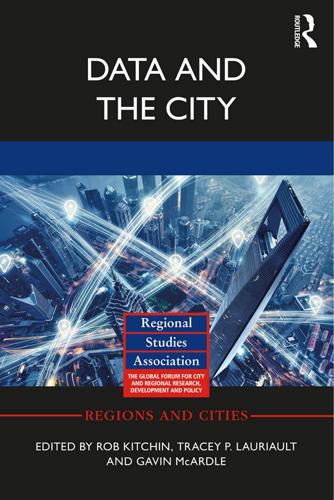
Data and the City
by
Rob Kitchin,Tracey P. Lauriault,Gavin McArdle
Published 2 Aug 2017
Hezri, A.A. (2004) ‘Sustainability indicators system and policy processes in Malaysia: a framework for utilisation and learning’, Journal of Environmental Management 73(4): 357–371. Holden, M. (2006) ‘Urban indicators and the integrative ideals of cities’, Cities 23(3): 170–183. Innes, J. and Booher, D.E. (2000) ‘Indicators for sustainable communities: A strategy building on complexity theory and distributed intelligence’, Planning Theory & Practice 1(2): 173–186. Keim, D., Kohlhammer, J., Ellis, G. and Mansmann, F. (2010) Mastering the Information Age – Solving Problems with Visual Analytics. Eurographics Association. Available from: www.vismaster.eu/book [accessed 29 August 2016].

The Last Stargazers: The Enduring Story of Astronomy's Vanishing Explorers
by
Emily Levesque
Published 3 Aug 2020
As it turned out, a documentary crew was filming our group during the eclipse, and they caught me bouncing excitedly in place in the immediate aftermath of totality, out of breath like I’d just run a race and gasping that it had been “the fastest two and a half minutes of my life.” • • • Total solar eclipses can be some of the toughest but most rewarding events to observe in astronomy. They give us a unique opportunity to study everything from the sun itself to complex theories of gravity and spacetime. Similar events also happen on a much smaller scale, known as transits or occultations rather than eclipses but following the same general principle. Observing the planet Venus as it passes in front of the sun can help us learn more about Venus’s atmosphere and how to identify planets around other stars.

Uncharted: How to Map the Future
by
Margaret Heffernan
Published 20 Feb 2020
Shared ambition drives avid collaboration: not to fall short, not to let each other down, to bring your best with a passion to do together something that could never be done alone. Everyone has expertise but everyone also needs help for the project to yield results. So much of the talk at CERN is so abstract – invisible particles, complex theories, unproven hypotheses, amorphous organisational structures – that it is a surprise to see, at the entrance to the Large Hadron Collider, a wall of giant spanners. The test of pure theory turns out to be mightily mechanical and, until DUNE is up and running, the LHC is the biggest single piece of machinery in the world.

Capital Without Borders
by
Brooke Harrington
Published 11 Sep 2016
William Robinson, “Social Theory and Globalization: The Rise of a Transnational State,” Theory and Society 30 (2001): 160. 7. Krippner, “The Financialization of the American Economy.” 8. Richard Deeg and Mary O’Sullivan, “The Political Economy of Global Finance Capital,” World Politics 61 (2009): 731–763. 9. Bill Maurer, “Complex Subjects: Offshore Finance, Complexity Theory, and the Dispersion of the Modern,” Socialist Review 25 (1995): 113–145. 10. Anthony Giddens, The Consequences of Modernity (Stanford, CA: Stanford University Press, 1990), 21. 11. Michael Parkinson, Certificate in International Trust Management, 4th ed. (Birmingham, UK: Central Law Training, 2004), 3. 12.
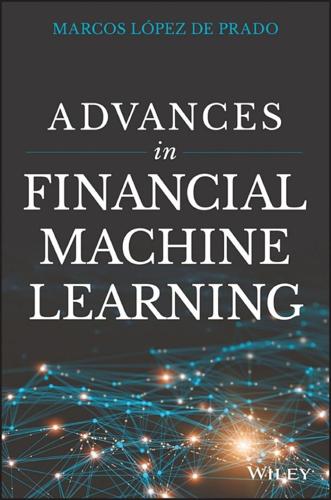
Advances in Financial Machine Learning
by
Marcos Lopez de Prado
Published 2 Feb 2018
I have no doubt in my mind, econometrics is a primary reason economics and finance have not experienced meaningful progress over the past 70 years (Calkin and López de Prado [2014a, 2014b]). For centuries, medieval astronomers made observations and developed theories about celestial mechanics. These theories never considered non-circular orbits, because they were deemed unholy and beneath God's plan. The prediction errors were so gross, that ever more complex theories had to be devised to account for them. It was not until Kepler had the temerity to consider non-circular (elliptical) orbits that all of the sudden a much simpler general model was able to predict the position of the planets with astonishing accuracy. What if astronomers had never considered non-circular orbits?
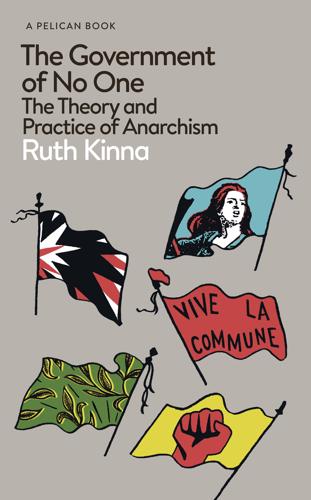
The Government of No One: The Theory and Practice of Anarchism
by
Ruth Kinna
Published 31 Jul 2019
A perennial anarchist complaint about party-approved forms of Marxism is that it presents socialism as scientific, encouraging abstruse theory that is difficult to understand and a technical approach to political argument; Marxism politicized science to use it as a tool to beat the bourgeoisie, but in Goodman’s terms, it promoted a concept of scientific objectivity or neutrality. The beauty of propaganda by the deed was that it did not rely on the mastery of complex theory. Burning land registry documents or refusing to respect a prohibition on a meeting in order to provoke an aggressive police response effectively taught hard lessons about the flimsiness of private property rights and legal bias and intolerance. Even if these lessons were inspired by heaps of written propaganda and a good amount of anarchist theory, the actions were hands-on, vivid and intelligible.

Origin Story: A Big History of Everything
by
David Christian
Published 21 May 2018
But curiously, when we see human history as part of the larger history of the biosphere and the universe, the distinctive features of our species stand out more clearly. Today, scholars in many different fields seem to be converging on similar answers to the question of what makes us different. When you see sudden, rapid changes like this, start looking for tiny changes that have huge consequences. Complexity theory and the related field of chaos theory are full of changes like this. Often, they are described as butterfly effects. The metaphor comes from the meteorologist Edward Lorenz, who pointed out that in weather systems, tiny events (the flapping of a butterfly’s wings, perhaps?) can get amplified by positive feedback cycles, generating a cascade of changes that may unleash tornadoes thousands of miles away.

The Irrational Economist: Making Decisions in a Dangerous World
by
Erwann Michel-Kerjan
and
Paul Slovic
Published 5 Jan 2010
If the NSF is going to significantly increase its support for interdisciplinary decision sciences, risk management, and disaster research, integrated social/ economic/ecological/geo-science data are needed. Suppose we had these data? What do we do then? How do we aggregate? Traditional probabilistic risk assessment has obvious limitations for understanding extreme events, but what are the alternatives? Are new approaches such as complexity theory part of the answer? What can we learn from these data that will help us better understand individual and collective behaviors in the face of catastrophes? The NSF itself will not answer these questions, but it is likely to fund leading scholars who will. Their work, informed by both disciplinary and interdisciplinary learning, will ultimately change the way many people think of the world and affect their daily decisions.
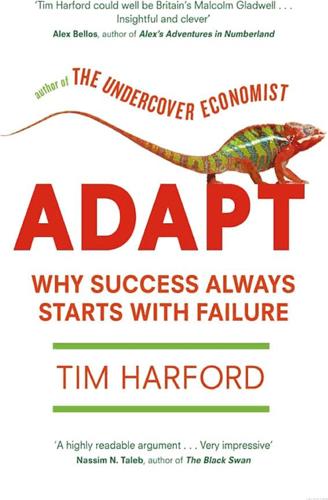
Adapt: Why Success Always Starts With Failure
by
Tim Harford
Published 1 Jun 2011
, 165 Bertrand, Marianne, 135 Bhopal disaster, 184 Billing, Noel Pemberton, 87–8 biomass systems, 170–1 bird flu, 97 Björkman, Martina, 142–3 Blair, Tony, 20, 30, 141 Boulton-Paul Defiant aircraft, 85 BP, 216–19, 245 Bradley, James, 106 Branson, Sir Richard, 112, 243 Brazil, 117, 148 breeding, selective, 175–6 Bremer, Paul, 1700000140345 >58 Brin, Sergey, 232 Bromgard, Jimmy Ray, 252 Buiter, Willem, 205 bulldog, British, 175–6 Bulow, Jeremy, 205 Bunting, Madeleine, 130 Burroughs 3500 computer, 69–71 Bush, Laura, 119 Bush, President George W., 20, 59, 64 business world: evolutionary theory and, 14–15, 16, 17, 18–19, 174–5, 233–4; failure in, 8–10, 11–12, 18–19, 36, 148–9, 224, 239–46; see also corporations and companies; economics and finance Cadbury’s dairy milk chocolate, 165 CAFE environmental standards in USA, 172–3, 176 Canon, 241 Capecchi, Mario, 97–101, 102, 114, 140, 152, 223 Carbon Trust, 163–5 Cardano, Gerolamo, 83 Carlsmith, James, 251> Case Foundation, 119 Casey, General George W., 55, 59, 71 catastrophe experts, 184–6, 191, 194–5, 208 Cave-Brown-Cave, Air Commodore Henry, 81, 83, 85, 88, 114 centralised decision making, 70, 74–5, 226, 227, 228; warfare and, 46–7, 67–8, 69, 71, 76, 78–9 centrally planned economies, 11, 21, 23–6, 68–9, 70 Challenger shuttle disaster, 184 Charles, Prince, 154 Chernobyl disaster, 185 Chile, 3, 69–72, 76, 148 China, 11, 94, 131, 143, 147, 150, 152 Christensen, Clayton, 239–40, 242, 245 Chuquicamata mine (Chile), 3 Churchill, Winston, 41–2, 82, 85 Citigroup, 205131 Clay Mathematics Institute, 110 climate change, 4, 20; carbon dioxide emissions and, 132, 156, 159–65, 166–9, 173, 176, 178–80; ‘carbon footprinting’, 159–66; carbon tax/price idea, 167–9, 178–80, 222; environmental regulations and, 169–74, 176, 177; ‘food miles’ and, 159, 160–1, 168; governments/politics and, 157–8, 163, 169–74, 176, 180; greenhouse effect and, 154–6; individual behaviour and, 158–63, 164, 165–6; innovation prizes and, 109, 179; methane and, 155, 156, 157, 159–60, 173, 179, 180; new technologies and, 94–5; simplicity/complexity paradox, 156, 157–8; Thaler-Sunstein nudge, 177–8; uncertainty and, 156 Coca-Cola, 28, 243 Cochrane, Archie, 123–7, 129, 130, 140, 238, 256 cognitive dissonance, 251–2 Cold War, 6, 41, 62–3 Colombia, 117, 147 complexity theory, 3–4, 13, 16, 49, 72103, 237 computer games, 92–3 computer industry, 11–12, 69, 70–1, 239–42 corporations and companies: disruptive technologies and, 239–44, 245–6; environmental issues and, 157–8, 159, 161, 165, 170–1, 172–3; flattening of hierarchies, 75, 224–5, 226–31; fraud and, 208, 210, 212–13, 214; innovation and, 17, 81–2, 87–9, 90, 93–4, 95–7, 108–11, 112, 114, 224–30, 232–4; limited liability, 244; patents and, 95–7, 110, 111, 114; randomised experiments and, 235–9; skunk works model and, 89, 91, 93, 152, 224, 242–3, 245; strategy and, 16, 18, 27–8, 36, 223, 224–34; see also business world; economics and finance cot-death, 120–1 credit-rating agencies, 188, 189, 190 Criner, Roy, 252 Crosby, Sir James, 211, 214, 250, 256 Cuban Missile Crisis, 41, 63 Cudahy Packing, 9 dairy products, 158, 159–60, 164–5, 166 Darwin, Charles, 86 Dayton Hudson, 243 de Montyon, Baron, 107–8 Deal or No Deal (TV game show), 33–5, 253 decentralisation, 73, 74–8, 222, 224–5, 226–31; Iraq war and, 76–8, 79; trial and error and, 31, 174–5, 232, 234 decision making: big picture thinking, 41, 42, 46, 55; consistent standards and, 28–9; diversity of opinions, 31, 44–5, 46, 48–50, 59–63; doctrine of unanimous advice, 30–1, 47–50, 62–3, 64, 78; grandiosity and, 27–8; idealized hierarchy, 40–1, 42, 46–7, 49–50, 55, 78; learning from mistakes, 31–5, 78, 119, 250–1, 256–9, 261–2; local/on the ground, 73, 74, 75, 76–8, 79, 224–5, 226–31; reporting lines/chain of command, 41, 42, 46, 49–50, 55–6, 58, 59–60, 64, 77–8; supportive team with shared vision, 41, 42, 46, 56, 62–3; unsuccessful, 19, 32, 34–5, 41–2; see also centralised decision making Deepwater Horizon disaster (April 2010), 36, 216–19, 220 Democratic Republic of Congo, 139–40 Deng Xiaoping, 1 Denmark, 148 Department for International Development (DFID), 133, 137–8 development aid: charter cities movement, 150–3; community-driven reconstruction (CDR), 137–40; corruption and, 133–5, 142–3; economic ‘big push’ and, 143–5, 148–9; feedback loops, 141–3; fundamentally unidentified questions (FUQs), 132, 133; governments and, 118, 120, 143, 144, 148–9; identification strategies, 132–5; microfinance, 116, 117–18, 120; Millennium Development Villages, 129–30, 131; product space concept, 145–8; randomised trials and, 127–9, 131, 132, 133, 134, 135–6, 137–40, 141; randomistas, 127–9, 132, 133, 135–40, 258; selection principle and, 117, 140–3, 149; SouthWest project in China, 131; success and failure, 116, 118–20, 130–1; Muhammad Yunus and, 116, 117–18 digital photography, 240–1, 242 Dirks, Ray, 211–12, 213 disk-drive industry, 239–40, 242 Djankov, Simeon, 135 domino-toppling displays, 185, 200–1 Don Basin (Russia), 21–2, 24, 27 dot-com bubble, 10, 92 Dubai, 147, 150 Duflo, Esther, 127, 131, 135, 136 Dyck, Alexander, 210, 213 eBay, 95, 230 econometrics, 132–5 economics and finance: banking system as complex and tightly coupled, 185, 186, 187–90, 200, 201, 207–8, 220; bankruptcy contingency plans, 204; Basel III regulations, 195; bond insurance business, 189–90; bridge bank/rump bank approach, 205–6; capital requirements, 203, 204; centrally planned economiepos=0000032004 >11, 21, 23–6, 68–9, 70; CoCos (contingent convertible bonds), 203–4; complexity and, 3–4; decoupling of financial system, 202, 203–8, 215–16, 220; Dodd-Frank reform act (2010), 195; employees as error/fraud spotters, 210, 211, 212, 213, 215; energy crisis (1970s), 179; evolutionary theory and, 14–17, 18–19, 174–5; improvements since 1960s, 215; inter-bank payments systems, 207; latent errors and, 209–10, 215; ‘LMX spiral’, 183–4, 189; narrow banking approach, 206–7, 215; need for systemic heat maps, 195–6; reinsurance markets, 183; zombie banks, 201–2; see also business world; corporations and companies; financial crisis (from 2007) Edison, Thomas, 236, 238 Eliot, T.S., 260 Elizabeth House (Waterloo), 170–1, 172 Endler, John, 221–2, 223, 234, 239 Engineers Without Borders, 119 Enron, 197–8, 200, 208, 210 environmental issues: biofuels, 84, 173, 176; clean energy, 91, 94, 96, 245–6; corporations/companies and, 159, 161, 165, 170–1, 172–3; renewable energy technology, 84, 91, 96, 130, 168, 169–73, 179, 245; see also climate change Equity Funding Corporation, 212 Ernst and Young, 199 errors and mistakes, types of, 208–10; latent errors, 209–10, 215, 218, 220 European Bank for Reconstruction and Development (EBRD), 188 European Union, 169, 173 Evans, Martin, 100 evolutionary theory, 6, 12–13, 15–17, 174, 258; business world and, 14–17, 174–5, 233–4; Darwin and, 86; digital world and, 13–14, 259–60; economics and, 14–17, 174–5; Endler’s guppy experiments, 221–2, 223, 239; fitness landscapes, 14–15, 259; Leslie Orgel’s law, 174, 175, 176, 177, 178, 180; problem solving and, 14–15, 16; selective breeding and, 175–6 expertise, limits of, 6–8, 16, 17, 19, 66 extinction events, biological, 18–19 Exxon (formerly Jersey Standard), 9, 12, 188, 245 F-22 stealth fighter, 93 Facebook, 90, 91 failure: in business, 8–10, 11–12, 18–19, 36, 148–9, 224, 239–46; chasing of losses, 32–5, 253–4, 256; in complex and tightly coupled systems, 185–90, 191–2, 200, 201, 207–8, 219, 220; corporate extinctions, 18–19; denial and, 32, 34–5, 250–3, 255–6; disruptive technologies, 239–44, 245–6; of established industries, 8–10; government funding and, 148–9; hedonic editing and, 254; honest advice from others and, 256–7, 258, 259; learning from, 31–5, 78, 119, 250–1, 256–9, 261–2; modern computer industry and, 11–12, 239–42; as natural in market system, 10, 11, 12, 244, 245–6; niche markets and, 240–2; normal accident theory, 219; recognition of, 36, 224; reinterpreted as success, 254–5, 256; shifts in competitive landscape, 239–46; ‘Swiss cheese model’ of safety systems, 186–7, 190, 209, 218; types of error and mistake, 208–10; willingness to fail, 249–50, 261–2; of young industries, 10 Fearon, James, 137, Federal Aviation Administration, 210 Federal Reserve Bank, 193–4 feedback, 25, 26, 42, 178, 240; in bureaucratic hierarchies, 30–1; development and, 141–3; dictatorships’ immunity to, 27; Iraq war and, 43–5, 46, 57–8, 59–62; market system and, 141; praise sandwich, 254; public services and, 141; self-employment and, 258; yes-men and, 30 Feith, Douglas, 44, 45 Ferguson, Chris ‘Jesus’, 32 Fermi nuclear reactor (near Detroit), 187 Festinger, Leon, 251 financial crisis (from 2007), 5, 11, 25; AIG and, 189, 193–5, 215–16, 228; bankers’ bonuses, 198; banking system as complex and tightly coupled, 185, 186, 187–90, 200, 201, 207–8, 220; bond insurance business and, 189–90; collateralised debt obligations (CDOs), 190, 209; credit default swaps (CDSs), 187–9, 190, 194; derivatives deals and, 198, 220; faulty information systems and, 193–5; fees paid to administrators, 197; government bail-outs/guarantees, 202, 214, 223; Lehman Brothers and, 193, 194, 196–200, 204–5, 208, 215–16; ‘LMX spiral’ comparisons, 183–4, 189; Repo 105 accounting trick, 199 Financial Services Authority (FSA), 214 Firefox, 221, 230 Fleming, Alexander, 83 Food Preservation prize, 107, 108 Ford Motor Company, 46–7 fossil record, 18 Fourier, Joseph, 155 fraud, corporate, 208, 210, 212–13, 214 Friedel, Robert, 80 Frost, Robert, 260 A Funny Thing Happened on the Way to the Forum (musical), 248 Gage, Phineas, 21, 27 Galapagos Islands, 86, 87 Gale (US developer), 152 Galenson, David, 260 Galileo, 187 Galland, Adolf, 81 Gallipoli campaign (1915), 41–2 Galvin, Major General Jack, 62, 256 game theory, 138, 205 Gates, Bill, 110, 115 Gates, Robert, 59, 64, 78 Gates Foundation, 110 Geithner, Tim, 193–5, 196 GenArts, 13 General Electric, 9, 12, 95 Gilbert, Daniel, 255, 256 GlaxoSmithKline, 95 Glewwe, Paul, 127–8 Global Positioning System (GPS), 113 globalisation, 75 Google, 12, 15, 90, 91, 239, 245, 261; corporate strategy, 36, 231–4; Gmail, 233, 234, 241, 242; peer monitoring at, 229–30 Gore, Al, An Inconvenient Truth, 158 Göring, Hermann, 81 government and politics: climate change and, 157–8, 163, 169–74, 176, 180; development aid and, 118, 120, 143, 144, 148–9; financial crisis (from 2007) and, 193–5, 198–9, 202, 214, 215–16, 223; grandiosity and, 27–8; ideal hierarchies and, 46pos=00002pos=0000022558 >7, 49–50, 62–3, 78; innovation funding, 82, 88, 93, 97, 99–101, 102–3, 104, 113; lack of adaptability rewarded, 20; pilot schemes and, 29, 30; rigorous evaluation methods and, 29* Graham, Loren, 26 Grameen Bank, 116, 117 Greece, 147 Green, Donald, 29* greenhouse effect, 154–6 Gulf War, first, 44, 53, 65, 66, 67, 71; Battle of 73 Easting, 72–3, 74, 79 Gutenberg, Johannes, 10 Haldane, Andrew, 195, 258 Halifax (HBOS subsidiary), 211 Halley, Edmund, 105 Halliburton, 217 Hamel, Gary, 221, 226, 233, 234 Hanna, Rema, 135 Hannah, Leslie, 8–10, 18 Hanseatic League, 150 Harrison, John, 106–7, 108, 110, 111 Harvard University, 98–9, 185 Hastings, Reed, 108 Hausmann, Ricardo, 145 Hayek, Friedrich von, 1, 72, 74–5, 227 HBOS, 211, 213, 214 healthcare sector, US, 213–14 Heckler, Margaret, 90–1 Henry the Lion, 149, 150, 151–2, 153 Hewitt, Adrian, 169 Hidalgo, César, 144–7, 148 Higginson, Peter, 230 Hinkley Point B power station, 192–3, 230–1 Hitachi, 11 Hitler, Adolf, 41, 82, 83, 150 HIV-AIDS, 90–1, 96, 111, 113 Holland, John, 16, 103 Hong Kong, 150 Houston, Dame Fanny, 88–9, 114 Howard Hughes Medical Institute (HHMI), 101–3, 112 Hughes (computer company), 11 Humphreys, Macartan, 136, 137, 138–40 Hurricane aircraft, 82* IBM, 11, 90, 95–6 In Search of Excellence (Peters and Waterman, 1982), 8, 10 India, 135, 136, 143, 147, 169 individuals: adaptation and, 223–4, 248–62; climate change and, 158–63, 164, 165–6; experimentation and, 260–2; trial and error and, 31–5 Indonesia, 133–4, 142, 143 Innocentive, 109 innovation: corporations and, 17, 81–2, 87–9, 90, 93–4, 95–7, 108–11, 112, 114, 224–30, 232–4; costs/funding of, 90–4, 99–105; failure as price worth paying, 101–3, 104, 184, 215, 236; government funding, 82, 88, 93, 97, 99–101, 102–3, 104, 113; grants and, 108; in health field, 90–1, 96; large teams and specialisation, 91–4; market system and, 17, 95–7, 104; new technologies and, 89–90, 91, 94–5; parallel possibilities and, 86–9, 104; prize methodology, 106–11, 112, 113–14, 179, 222–3; randomistas and, 127–9, 132, 133, 135–40, 258; return on investment and, 83–4; skunk works model, 89, 91, 93, 152, 224, 242–3, 245; slowing down of, 90–5, 97; small steps and, 16, 24, 29, 36, 99, 103, 143, 149, 153, 224, 259–60; space tourism, 112–13, 114; specialisation and, 91–2; speculative leaps and, 16, 36, 91, 99–100, 103–4, 259–60; unpredictability and, 84–5 Intel, 11, 90, 95 International Christelijk Steunfonds (ICS), 127–9, 131 International Harvester, 9 International Rescue Committee (IRC), 137–8, 139 internet, 12, 15, 63, 90, 113, 144, 223, 233, 238, 241; randomised experiments and, 235–6, 237; see also Google Iraq war: al Anbar province, 56–7, 58, 64, 76–7; civil war (2006), 39–40; Commander’s Emergency Response Program (CERP), 77; counterinsurgency strategy, 43, 45, 55–6, 58, 60–1, 63–4, 65; decentralisation and, 76–8, 79; feedback and, 43–5, 46, 57–8, 59–62; FM 3–24 (counter-insurgency manual), 63; Forward Operating Bases (FOBs), 51–3, 57, 65; Haditha killings (19 November 2005), 37–9, 40, 42, 43, 52; new technologies and, 71, 72, 74, 78–9, 196; Samarra bombing (22 February 2006), 39; Tal Afar, 51, 52, 53–5, 61, 64, 74, 77, 79; trial and error and, 64–5, 66–7; US turnaround in, 35, 40, 46, 50–1, 53–6, 57–8, 59–61, 63–5, 78; US/allied incompetence and, 38, 39–40, 42–5, 46, 50, 64, 67, 79, 223; Vietnam parallels, 46 J&P Coats, 9 Jacobs, Jane, 87 James, Jonathan, 30 Jamet, Philippe, 192 Janis, Irving, 62 Japan, 11, 143, 176, 204, 208 Jay-Z, 119 Jo-Ann Fabrics, 235 Jobs, Steve, 19 Joel, Billy, 247–8, 249 Johnson, President Lyndon, 46, 47, 49–50, 60, 62, 64, 78 Jones, Benjamin F., 91–2 Joyce, James, 260 JP Morgan, 188 Kahn, Herman, 93 Kahneman, Daniel, 32, 253 Kantorovich, Leonid, 68–9, 76 Kaplan, Fred, 77 Karlan, Dean, 135 Kauffmann, Stuart, 16, 103 Kay, John, 206–7, 208, 215, 259 Keller, Sharon, 252 Kelly, Terri, 230 Kennedy, President John F., 41, 47, 62–3, 84, 113 Kenya, 127–9, 131 Kerry, John, 20 Keynes, John Maynard, 181 Kilcullen, David, 57, 60–1 Klemperer, Paul, 96, 205 Klinger, Bailey, 145 Kotkin, Stephen, 25 Kremer, Michael, 127–8, 129 Krepinevich, Andy, 45 Lanchester, John, 188 leaders: decision making and, 40–2; failure of feedback and, 30–1, 62; grandiosity and, 27–8; ignoring of failure, 36; mistakes by, 41–2, 56, 67; need to believe in, 5–6; new leader as solution, 59 Leamer, Ed, 132* Leeson, Nick, 184–5, 208 Lehman Brothers, 193, 194, 196–200, 204–5, 208, 215–16 Lenin Dam (Dnieper River), 24 Levine, John, 48–9 Levitt, Steven, 132–3 Liberia, 136–9 light bulbs, 162, 177 Lind, James, 122–3 Lindzen, Richard, 156 Livingstone, Ken, 169 Lloyd’s insurance, 183 Lloyds TSB, 214 Local Motors, 90 Lockheed, Skunk Works division, 89, 93, 224, 242 Lomas, Tony, 196, 197–200, 204, 205, 208, 219 Lomborg, Bjorn, 94 longitude problem, 105–7, 108 Lu Hong, 49 Lübeck, 149–50, 151–2, 153 Luftwaffe, 81–2 MacFarland, Colonel Sean, 56–7, 64, 74, 76–7, 78 Mackay, General Andrew, 67–8, 74 Mackey, John, 227, 234 Madoff, Bernard, 208212–13 Magnitogorsk steel mills, 24–5, 26, 153 Malawi, 119 Mallaby, Sebastian, 150, 151 management gurus, 8, 233 Manhattan Project, 82, 84 Manso, Gustavo, 102 Mao Zedong, 11, 41 market system: competition, 10–11, 17, 19, 75, 95, 170, 239–46; ‘disciplined pluralism’, 259; evolutionary theory and, 17; failure in as natural, 10, 11, 12, 244, 245–6; feedback loops, 141; innovation and, 17, 95–7, 104; patents and, 95–7; trial and error, 20; validation and, 257–8 Markopolos, Harry, 212–13 Marmite, 124 Maskelyne, Nevil, 106 mathematics, 18–19, 83, 146, 247; financial crisis (from 2007) and, 209, 213; prizes, 110, 114 Mayer, Marissa, 232, 234 McDonald’s, 15, 28 McDougal, Michael, 252 McGrath, Michael, 252 McMaster, H.R.

Babel No More: The Search for the World's Most Extraordinary Language Learners
by
Michael Erard
Published 10 Jan 2012
In music, he was average; tests of visuospatial ability stumped him; he said he couldn’t read maps or figure out new routes. This intrigued her, since it’s often thought that exceptional verbal abilities are associated with limited visuospatial abilities, or vice versa. To give these overlaps some order, she looked to a complex theory known as the Geschwind-Galaburda hypothesis, which links co-occurrences among dyslexia, gender, handedness, and other traits. As examples, there’s a predominance of left-handers among talented visual artists, and males are overwhelmingly more often dyslexic and autistic. In the 1980s, neurologists Norman Geschwind and Albert Galaburda looked to brain development for an answer.

Creativity, Inc.: Overcoming the Unseen Forces That Stand in the Way of True Inspiration
by
Ed Catmull
and
Amy Wallace
Published 23 Jul 2009
On the most basic level, it says that if there are competing explanations for why something occurs the way it does, you should pick the one that relies on the fewest assumptions and is thus the simplest. When Renaissance astronomers were trying to explain the movement of the planets, for example, there were many complex theories. The prevailing belief was that orbits were perfect circles, or epicycles, but as planetary observation improved, the models based on circles had to be made extremely complex in order to work. Then, Johannes Kepler hit upon the comparatively simple idea that the orbit of every planet is an ellipse, with the sun at one of two foci within it.

Fuller Memorandum
by
Stross, Charles
Published 14 Jan 2010
For thirds, blame the Politburo, which, in the 1950s, looked at the embryonic IT industry, thought "tools of capitalist profit-mongers," and denounced computer science as un-Communist. Proximate results: they got into orbit using hand calculators, but completely dropped the ball on anything that required complexity theory, automated theorem proving, or sacrificial goats. But that was then, and this is now, and we're not dealing with the Union of Soviet Socialist Republics, we're dickering with the Russian Federation. (When we're not trying to save ourselves from the end of the world, that is.) The Russians are no longer dragged backwards by the invisible hand of Lenin.

The Future of Money
by
Bernard Lietaer
Published 28 Apr 2013
It is indeed true that all this is not applicable just to monetary or business matters. The work pioneered by the Santa Fe Institute on complex adaptive systems has verified these principles in all types of systems physical, biological, social, economic, etc.) which are reaching a certain level of complexity. Complexity theory predicts that contrary to Newtonian logic, complexity does not grow linearly, but occurs in non-linear jumps in episodic stages of 'surfing at the edge of chaos'. These 'near-chaos' periods are when systems regenerate and restructure at the next level of complexity, according to Nobel Prize-winners Ilya Prigogine.

The Deep Learning Revolution (The MIT Press)
by
Terrence J. Sejnowski
Published 27 Sep 2018
Cellular Automata Another colorful character with a scientifically serious approach to complexity, Stephen Wolfram (figure 13.1) was a wunderkind, the youngest person ever to earn a doctorate in physics from Caltech at the age of 20, and the founder of the Center for Complex Systems Research at the University of Illinois in 1986. Wolfram thought that neural networks were too complex and decided instead to explore cellular automata. The Age of Algorithms 197 Figure 13.1 Stephen Wolfram at his home in Concord, Massachusetts, standing on an algorithmically generated floor. Wolfram was a pioneer in complexity theory and showed that even simple programs can give rise to the complexities of the kind we encounter in the world. Courtesy of Stephen Wolfram. Cellular automata typically have only a few discrete values that evolve in time, depending on the states of the other cells. One of the simplest cellular automata is a one-dimensional array of cells, each with value of 0 or 1 (box 13.1).

Ask Me About My Uterus: A Quest to Make Doctors Believe in Women's Pain
by
Abby Norman
Published 6 Mar 2018
But because it so directly challenges Sampson’s theory of retrograde menstruation, which has been the primary explanation for nearly a century, whether it will sit well with clinicians (who are not always researchers) is another matter entirely. For doctors who have been using Sampson’s theory (which is straightforward, easy to explain, and fairly simple for patients to comprehend) as an explanation for patients, having to grasp a more complex theory, and in turn distill it down for patient consumption, may seem a particularly daunting task. I don’t know how long it typically takes for these high-level theories that exist in the realm of scientific research to trickle down into clinical practice and eventually the public consciousness—but a lack of research funding and scientific consensus certainly hasn’t served to expedite what I can only assume is, at best, a somewhat lethargic process.

Custodians of the Internet: Platforms, Content Moderation, and the Hidden Decisions That Shape Social Media
by
Tarleton Gillespie
Published 25 Jun 2018
“Introduction: The Global and the Intimate.” Women’s Studies Quarterly, 3 (1–2): 13–24. PUPPIS, MANUEL. 2010. “Media Governance: A New Concept for the Analysis of Media Policy and Regulation.” Communication, Culture, and Critique 3 (2): 134–49. QVORTRUP, LARS. 2006. “Understanding New Digital Media: Medium Theory or Complexity Theory?” European Journal of Communication 21 (3): 345–56. RAPPAPORT, KIM. 1997. “In the Wake of Reno v. ACLU: The Continued Struggle in Western Constitutional Democracies with Internet Censorship and Freedom of Speech Online.” American University International Law Review 13 (3): 727. REAGLE, JOSEPH. 2010.

Silence on the Wire: A Field Guide to Passive Reconnaissance and Indirect Attacks
by
Michal Zalewski
Published 4 Apr 2005
One person can thus, effectively, divide a specific computational task among a large number of systems. In the process, they can consume only a tiny and negligible fraction of a system’s computing power that could nevertheless add up to the equivalent of a decent supercomputer, when millions of systems work on a problem together. World domination at hand? Not so fast. * * * [33] In complexity theory, polynomial problems can be solved by a Turing machine in time that is polynomially proportional to input length (number or size of variables for which the answer must be found). This means that the time needed to solve a polynomial problem corresponds directly to the input length raised to a constant exponent, which can be zero (causing the time not to depend on input length at all, as with testing for parity).

The Undoing Project: A Friendship That Changed Our Minds
by
Michael Lewis
Published 6 Dec 2016
Amos liked to use an expression he’d read someplace: “carving nature at its joint.” They were trying to carve human nature at its joint, but the joints of an emotion were elusive. That was one reason Amos didn’t particularly like to think or talk about emotion; he didn’t like things that were hard to measure. “This is indeed a complex theory,” Danny confessed one day in a memo. “In fact it consists of several mini-theories, which are rather loosely connected.” In reading about expected utility theory, Danny had found the paradox that purported to contradict it not terribly puzzling. What puzzled Danny was what the theory had left out.

In Our Own Image: Savior or Destroyer? The History and Future of Artificial Intelligence
by
George Zarkadakis
Published 7 Mar 2016
The emergentists’ counterargument is that interactions between the constituent parts of the system are also important for the behaviour of the system as a whole. However, if interactions are so important, what is the nature of these interactions? And how can we test whether they exist or not? For many scientists, emergentist theories that spring from cybernetics and complexity theory do not seem falsifiable, and are therefore suspiciously non-scientific. Suspicion about theories of emergence reflects the ideological divide between traditional scientific methods of reductionism versus alternative systemic, or holistic, methods. Reductionism is the very successfully applied idea in science whereby one tries to reduce a natural phenomenon to an irreducible level that can be then studied.
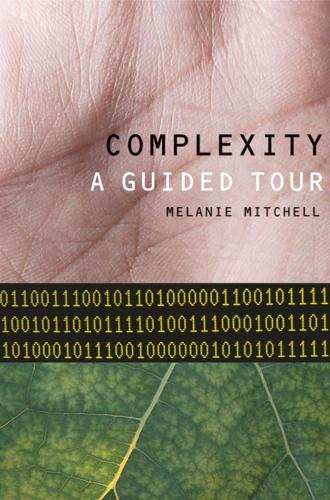
Complexity: A Guided Tour
by
Melanie Mitchell
Published 31 Mar 2009
Several of these measures and their usefulness are described in various chapters of this book. But how can there be a science of complexity when there is no agreed-on quantitative definition of complexity? I have two answers to this question. First, neither a single science of complexity nor a single complexity theory exists yet, in spite of the many articles and books that have used these terms. Second, as I describe in many parts of this book, an essential feature of forming a new science is a struggle to define its central terms. Examples can be seen in the struggles to define such core concepts as information, computation, order, and life.
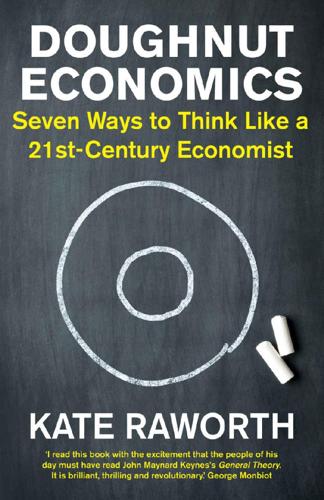
Doughnut Economics: Seven Ways to Think Like a 21st-Century Economist
by
Kate Raworth
Published 22 Mar 2017
Beyond the realm of starlings and chickens, bathtubs and showers, it soon becomes clear just how powerful systems thinking can be for understanding our ever-evolving world, from the rise of corporate empires to the collapse of ecosystems. Many events that first appear to be sudden and external – what mainstream economists often describe as ‘exogenous shocks’ – are far better understood as arising from endogenous change. In the words of the political economist Orit Gal, ‘complexity theory teaches us that major events are the manifestation of maturing and converging underlying trends: they reflect change that has already occurred within the system’.11 From this perspective, the 1989 fall of the Berlin Wall, the 2008 collapse of Lehman Brothers and the imminent collapse of the Greenland ice sheet have much in common.

The Swerve: How the Renaissance Began
by
Stephen Greenblatt
Published 31 Aug 2011
Totaling 7,400 lines, it is written in hexameters, the standard unrhymed six-beat lines in which Latin poets like Virgil and Ovid, imitating Homer’s Greek, cast their epic poetry. Divided into six untitled books, the poem yokes together moments of intense lyrical beauty, philosophical meditations on religion, pleasure, and death, and complex theories of the physical world, the evolution of human societies, the perils and joys of sex, and the nature of disease. The language is often knotty and difficult, the syntax complex, and the overall intellectual ambition astoundingly high. The difficulty would not in the least have fazed Poggio and his learned friends.
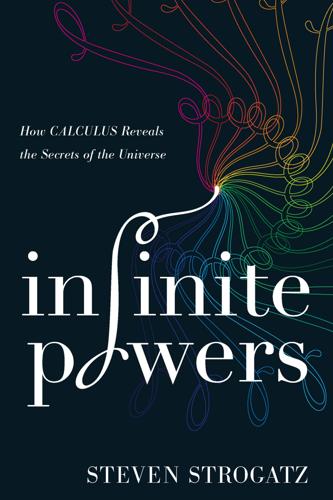
Infinite Powers: How Calculus Reveals the Secrets of the Universe
by
Steven Strogatz
Published 31 Mar 2019
Rather than saying a little about each of the topics mentioned here, I’ll focus on a few of them. After a brief foray into the differential geometry of DNA, where the mystery of curves meets the secret of life, we’ll consider some case studies that I hope you’ll find philosophically provocative. These include the challenges to insight and prediction caused by the rise of chaos, complexity theory, computers, and artificial intelligence. For all of that to make sense, however, we will need to review the fundamentals of nonlinear dynamics. Examining that context will allow us to better appreciate the challenges ahead. The Writhing Number of DNA Calculus has traditionally been applied in the “hard” sciences like physics, astronomy, and chemistry.

Spineless: The Science of Jellyfish and the Art of Growing a Backbone
by
Juli Berwald
Published 14 May 2017
Once complex cells and tissues like nervous systems evolved, they wouldn’t disappear because having a more sophisticated tool gives an animal a survival advantage. (Parasites are an exception. They often give up their complex systems and instead rely on those of their host to navigate the world.) But in 2008, scientists delving into the origins of animals performed an analysis that called the ever more complex theory into question. Comparing the DNA of a few different genes across a large range of animals suggested that it wasn’t sponges at the base of the animal tree of life. It was comb jellies. Remember the comb jelly Mnemiopsis? The same animals that took over the Black Sea seemed to have more differences in their genetic code than any other group of animals.
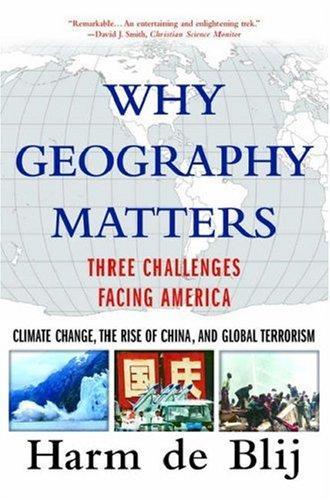
Why geography matters: three challenges facing America : climate change, the rise of China, and global terrorism
by
Harm J. De Blij
Published 15 Nov 2007
READING MAPS AND FACING THREATS It is often said that a picture is worth a thousand words. If that is true, then a map is worth a million, and maybe more. Even at just a glance, a map can reveal what no amount of description can. Maps are the language of geography, often the most direct and effective way to convey grand ideas or complex theories. The mother of all maps is the globe, and no household, especially one with school-age children, should be without one. A globe reminds us of the limits of our terrestrial living space when about 70 percent of its surface is water or ice, and much of the land is mapped as mountains or desert.

Warnings
by
Richard A. Clarke
Published 10 Apr 2017
The accelerating growth of technology makes it increasingly difficult for scientists, let alone bureaucrats, to decipher the risks. Many new technologies have proven the limits of government regulators’ ability to understand: genetic engineering, artificial intelligence, high-frequency trading, deep water drilling, and others. Mathematicians, system engineers, and social scientists have written extensively about complexity theories for decades. In recent years, however, we have seen a particular aspect of complexity emerging more clearly in the real world. Increasingly, we are operating or planning systems, software, or networks that no one person understands. It takes a team, one of many diverse talents. That team, however, is sometimes so large that it cannot be assembled in a conference room, auditorium, or even in a stadium.

The Denial of Death
by
Ernest Becker
Published 1 Jan 1973
If a thinker throws off too many unsystematic and rich insights, there is no place to grab onto his thought. The thing he is trying to illuminate seems as elusive as before. It is certain that Freud’s prominence is due to no small extent to his ability to make clear, simple, and systematic all of his insights and always to reduce the most complex theory to a few fundamentals. You can do this with Rank too, but the rub is that you must do it yourself by putting your own order into the broadside of Rank’s work. Although Rank knew that this requirement wasn’t fair either to the reader or to himself, he never did find anyone to rewrite his books; and so we ourselves have to try to go beyond the confusion of insights and penetrate to the heart of the problem.
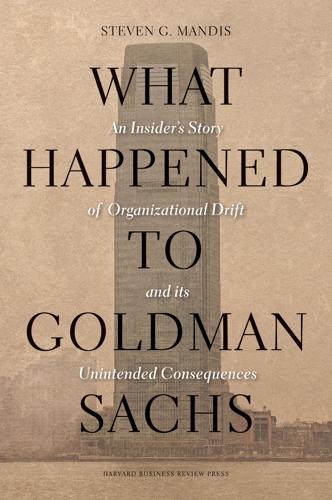
What Happened to Goldman Sachs: An Insider's Story of Organizational Drift and Its Unintended Consequences
by
Steven G. Mandis
Published 9 Sep 2013
As Harvard Business School professor Scott Snook argues, detecting organizational drift requires a sensitivity to the passage of time; single snapshots won’t do.1 To understand what’s happened to Goldman since the writing of the business principles in 1979, then, we have to look back to its performance over time, how its interpretation of the principles has changed, and the conditions in which it operates. But before we get to that analysis, it’s worth developing a deeper understanding of organizational drift and its implications. Drift into Failure Sidney Dekker, a professor who specializes in understanding human error and safety, has used complexity theory and systems thinking to better understand how complex systems “drift into failure” over an extended period of time. His theories are worth exploring because they, and the ideas of other researchers, provide us with a clear understanding of how systems interact and drift away from intended goals.

What to Think About Machines That Think: Today's Leading Thinkers on the Age of Machine Intelligence
by
John Brockman
Published 5 Oct 2015
Recently I spent an hour reading about the Middle East situation, and thinking. I didn’t come up with a solution. Now imagine a hypothetical Speedup SuperIntelligence Machine (as described by Nick Bostrom) that can think as well as the smartest human but 1,000 times faster. I doubt if it would come up with a solution either. Computational complexity theory reveals a wide class of problems immune to intelligence, in the sense that no matter how clever you are, no approach is any better than trying all possible solutions; no matter how much computing power you have, it won’t be enough. There are of course many problems where computing power does help.
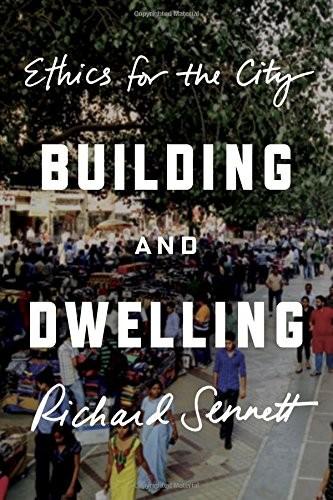
Building and Dwelling: Ethics for the City
by
Richard Sennett
Published 9 Apr 2018
A good general overview of this complex subject is François Gemenne, ‘The Anthropocene and Its Victims’, in Clive Hamilton, Christophe Bonneuil and François Gemenne (eds), The Anthropocene and the Global Environmental Crisis: Rethinking Modernity in a New Epoch (New York: Routledge 2015). 7. Philipp Rode and Ricky Burdett, ‘Cities: Investing in Energy and Resource Efficiency’, in Towards a Green Economy: Pathways to Sustainable Development and Poverty Eradication (United Nations Environment Programme, 2011), pp. 331–73. 8. Neil Johnson, Simply Complexity: A Clear Guide to Complexity Theory (London: Oneworld, 2009), pp. 39–40. Originally published as Two’s Company, Three is Complexity in 2007. 9. Geert Mak, Amsterdam: A Brief Life of the City, trans. Philipp Blom (New York: Vintage, 1999), p. 5. 10. Quoted in Richard Sennett, ‘The Public Realm’, lecture delivered at the Quant Foundation, July colloquium, 2002. 11.

Extreme Economies: Survival, Failure, Future – Lessons From the World’s Limits
by
Richard Davies
Published 4 Sep 2019
One was Milton Friedman, who by the mid-1950s was in his late forties and had been a leading light in the economics department for a decade. All the Chilean exchange students took classes with him and say that he was respected and liked, but that he was aloof and scary too. Mr Lüders had Friedman as a thesis adviser and recalls lectures of a striking clarity, with complex theory often explained through simple everyday stories. The other influence was Arnold Harberger who, like Friedman, was interested in practical economic questions, from the regulation of monopolies to the taxation of companies. Mr Harberger – who became known as ‘Alito’ – was the Chicago Boys’ day-to-day adviser, adopted uncle and drinking companion.

Life Inc.: How the World Became a Corporation and How to Take It Back
by
Douglas Rushkoff
Published 1 Jun 2009
But as profits and stock indexes rose, the stars themselves seemed to be aligning, and systems theory was as good a way as any of justifying the same options packages that young programmers would have been embarrassed by just a few years before, when they were antiestablishment hackers. While computer programmers were finding jobs in Silicon Valley, social scientists and chaos mathematicians won contracts at corporate-funded think tanks. The Santa Fe Institute studied complexity theory, and applied its findings to the market. The “four Cs,” as they came to be known—complexity, chaos, catastrophe, and cybernetics—now dominated economic thought. Building on the work of Hayek, the new science of economics held that there was no global, central controller in an economy—only a rich interaction between competing agents.
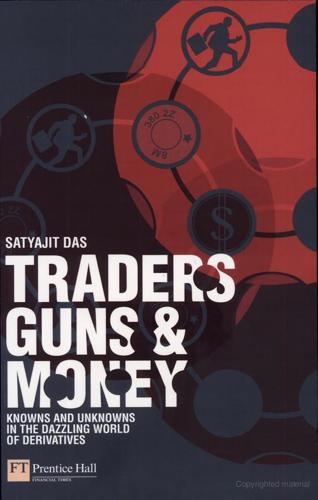
Traders, Guns & Money: Knowns and Unknowns in the Dazzling World of Derivatives
by
Satyajit Das
Published 15 Nov 2006
The unsustainable inflation in value was incomprehensible to the few that believed in rationality and efficiency. Trend chasers, ‘mo’ (momentum) buyers, kept buying because they kept making money; nobody could explain the overvaluation; the doomsayer’s position became untenable and, puzzled by the duration of overvaluation, even intelligent and honest analysts eventually succumbed, evolving complex theories of why it was different this time. The overvaluation was sustainable after all. Theories of the ‘new economy’ and the good returns allowed suspension of reality for a little longer but eventually, the Ponzi scheme collapsed.3 Every rising market is driven by a new paradigm, every crash is the same as the last crash.
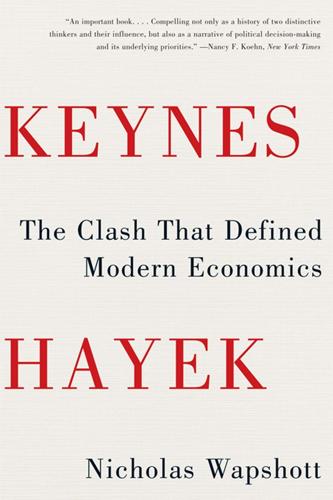
Keynes Hayek: The Clash That Defined Modern Economics
by
Nicholas Wapshott
Published 10 Oct 2011
But it soon dawned on Keynes that the timorous MacDonald, for all his radical credentials, was no progressive and in many respects was far less “socialist” than he was. Keynes provided the Macmillan Committee with a bravura performance at which he expostulated at length, and with extraordinary eloquence, his complex theories in language the layman could understand. The chairman, Lord Macmillan, a passionless judge, was so enamored with Keynes’s hypnotic daily lectures that he told him, “We hardly notice the lapse of time when you are speaking.”43 For those who find the ideas in A Treatise hard to grasp, Keynes’s exposition of them in plain language makes for hugely enjoyable reading, not least when he explains the effects of a disparity between savings and investment by invoking the workings of an imaginary banana republic.44 Along with the principles established in A Treatise, Keynes described his views on a number of elements in the economy that would become important in advancing the Keynesian Revolution and would define the difference between his ideas and those of the Austrian School in the impending duel with Hayek.

Science Fictions: How Fraud, Bias, Negligence, and Hype Undermine the Search for Truth
by
Stuart Ritchie
Published 20 Jul 2020
Ultimately, we want to build our scientific findings into strong theories that explain the world and predict future observations. See Michael Muthukrishna & Joseph Henrich, ‘A Problem in Theory’, Nature Human Behaviour 3, no. 3 (Mar. 2019): pp. 221–29; https://doi.org/10.1038/s41562-018-0522-1. But in a world where any given finding could fall to pieces after a replication attempt, complex theories could end up leading us down completely the wrong avenues. See Ian J. Deary, Looking Down on Human Intelligence: From Psychometrics to the Brain, Oxford Psychology Series, no. 34 (Oxford: Oxford University Press, 2000), particularly pp. 108–109. A more sublunary goal than theory-building, but still one we might want to consider, is triangulation: coming at a question from many different angles, using studies of different kinds with different underlying assumptions, checking whether they all converge on a single answer.

Whole Earth: The Many Lives of Stewart Brand
by
John Markoff
Published 22 Mar 2022
* * * That fall, Brand was invited to join the board of trustees of the Santa Fe Institute. Rooted in physics and founded by a group of scientists at the Los Alamos National Laboratory, it had tentacles and interests that spread throughout both the physical and social sciences and had a growing reputation for being at the forefront of several emerging disciplines, most notably complexity theory. The offer had come from George Cowan, a chemist who had been involved in the Manhattan Project and who had founded the institute. Cowan had picked up Brand on his radar and came to visit in Sausalito to personally make the pitch. Brand, already completely awestruck by the institute, responded immediately that if he had to choose between a British knighthood and a board position at the institute, he would be torn, and since there would be no knighthood, he would be honored.
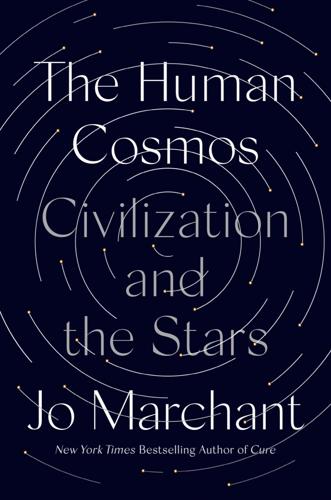
The Human Cosmos: A Secret History of the Stars
by
Jo Marchant
Published 15 Jan 2020
He was also a scathing critic of Panbabylonism, a school of thought that emerged in the late nineteenth century and argued that the Hebrew Bible was directly derived from Babylonian culture and mythology, and that the Babylonians had developed highly sophisticated astronomy as early as the third millennium BC. It was Kugler who worked out much of the detail of the astronomical theories Epping had unearthed. And he noticed something odd about the period relations that the Babylonians used to calculate the behavior of the Moon. This was the priests’ most complex theory. To fully describe the Moon and predict all-important lunar eclipses, they had to combine several different lunar cycles: the Moon’s variation in speed (anomalistic month); its progression through its phases (synodic month); and the time it takes to travel between the “nodes” where it crosses the Sun’s path (draconitic month).

Vanishing New York
by
Jeremiah Moss
Published 19 May 2017
It happened much faster. Neil Smith stopped writing about gentrification after 2006. He did not put forth a Fourth Wave to account for the dramatic changes the city endured under Bloomberg. A year before Smith’s death in 2012, I wrote to him and asked if he could provide a distillation of his complex theory. In conclusion, he told me: The class remake of the city was minor, small scale, and symbolic in the beginning, but today we are seeing a total class retake of the central city. Almost without exception, the new housing, new restaurants, new artistic venues, new entertainment locales—not to mention the new jobs on Wall Street—are all aimed at a social class quite different from those who populated the Lower East Side or the West Side, Harlem, or neighborhood Brooklyn in the 1960s.

The Food Revolution: How Your Diet Can Help Save Your Life and Our World
by
John Robbins
Published 14 Sep 2010
"Eat Right For Your Type is the diet solution to staying healthy, living longer, and achieving your ideal weight." -Peter D'Adamo86 "Eat Right For Your Type is not only one of the most preposterous books on the market, but also one of the most frightening. It contains just enough scientificsounding nonsense, carefully woven into a complex theory, to actually seem convincing to the uninitiated. Based on his and his father's 'research' and observation of patients, D'Adamo has pieced together the outrageous hypothesis that blood type determines which foods an individual should or should not eat.... Browsing through what at first glance appears to be a fairly impressive list of references, we found none that seem to support a connection between diet and blood type....

Schismatrix Plus
by
Bruce Sterling
Published 1 Jan 1995
A tall gangling boy in baggy clothing was running headlong beside the woven-wire fence surrounding the Sours, tugging a large box kite into flight. “You’re not the first I’ve cured,” Juliano said as they walked toward it. “I always said my Superbright students had promise. Some of them work here. A pilot project. I want to show you what they’ve done. They’ve been tackling botany from a perspective of Prigoginic complexity theory. New species, advanced chlorophylls, good solid constructive work.” “Wait,” said Lindsay. “I want to talk to this youngster.” He had noticed the boy s kite. Its elaborate paint job showed a nude man crammed stiflingly within the rigid planes of the box kite’s lifting surfaces. A woman in mud-smeared corduroy leaned over the woven fence, waving a pair of shears.

The Teeth of the Tiger
by
Tom Clancy
Published 2 Jan 1998
But for Brian that was a thing of the past. No, he and his brother were playing the game by the enemy's rules, and as long as the enemy didn't know it would be a profitable game. How many lives might they have saved already by taking down a banker, a recruiter, and a courier? The problem was that you could never know. That was complexity theory as applied to real life, and it was a priori impossible. Nor would they ever know what good they'd be doing and what lives they might be saving when they got this 56MoHa bastard. But not being able to quantify it didn't mean it wasn't real, like that child killer his brother had dispatched in Alabama.
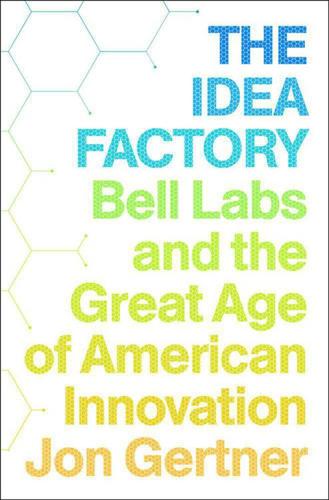
The Idea Factory: Bell Labs and the Great Age of American Innovation
by
Jon Gertner
Published 15 Mar 2012
THE MATH DEPARTMENT at Bell Laboratories had grown up around a single man, Thornton Fry, the son of a poor Ohio carpenter who was working on a PhD at the University of Wisconsin when Harold Arnold came through town on a recruiting trip in 1916. It was still a few years before the creation of Bell Labs, and Arnold, Western Electric’s research chief, was looking for a young mathematician who could assist the engineers with the complex theory that often accompanied their switching and transmission plans. In a job interview, Arnold asked Fry a number of questions to test his knowledge about the era’s most influential communications engineers. Did the young man know the work of Heaviside, Campbell, or Molina?17 Fry shook his head. He didn’t know a single one.

Algorithms to Live By: The Computer Science of Human Decisions
by
Brian Christian
and
Tom Griffiths
Published 4 Apr 2016
He elaborates: One might think that, once we know something is computable, whether it takes 10 seconds or 20 seconds to compute is obviously the concern of engineers rather than philosophers. But that conclusion would not be so obvious, if the question were one of 10 seconds versus 101010 seconds! And indeed, in complexity theory, the quantitative gaps we care about are usually so vast that one has to consider them qualitative gaps as well. Think, for example, of the difference between reading a 400-page book and reading every possible such book, or between writing down a thousand-digit number and counting to that number.
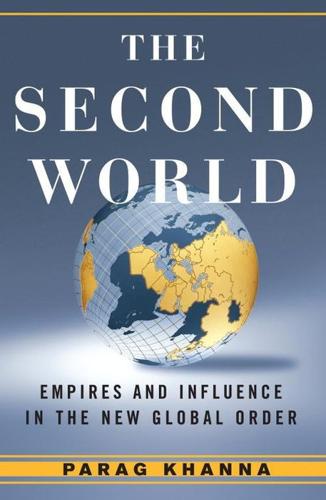
Second World: Empires and Influence in the New Global Order
by
Parag Khanna
Published 4 Mar 2008
Arnold Toynbee, Civilization on Trial (London: Oxford University Press, 1948), 8–9. 21. Technically defined, globalization comprises all cross-border interactions—economic, political, or cultural. Peter Marber, “Globalization and Its Contents,” World Policy Journal, Winter 2004–05, 29. 22. For a discussion of system dynamics and complexity theory, see Robert Jervis, System Effects: Complexity in Political and Social Life (Princeton, N.J.: Princeton University Press, 1997), ch. 1. 23. See Michael M. Weinstein, ed., Globalization: What’s New? (New York: Columbia University Press, 2005). Weinstein, as editor, shows no bias in favor of any particular definition of globalization. 24.
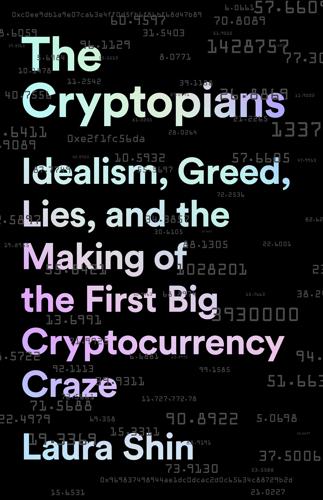
The Cryptopians: Idealism, Greed, Lies, and the Making of the First Big Cryptocurrency Craze
by
Laura Shin
Published 22 Feb 2022
He agreed to freelance for Ethereum, planning to take six to eight weeks off from his PhD. Two other hires were directed to focus on Solidity, a language thought up by Gav for implementing smart contracts: Christian Reitwießner, a quiet, reserved, and bespectacled German with a PhD in multiobjective optimization, algorithms, and complexity theory, and Lefteris Karapetsas, a self-deprecatingly funny Greek software developer with dark, wavy hair who had studied at the University of Tokyo and recently worked at Oracle in Berlin. Jeff’s team, which was building the Go client, was mostly remote, with programmers like the skinny, talkative, smiley, and energetic Berlin-based Felix Lange, who had been in the same coworking space as ETH Dev and had found Ethereum to be much cooler than his failing start-up.

Grand Transitions: How the Modern World Was Made
by
Vaclav Smil
Published 2 Mar 2021
Our Final Invention: Artificial Intelligence and the End of the Human Era. New York: Thomas Donne Books. Bassino, J-P. 2006. The growth of agricultural output and food supply in Meiji Japan: Economic miracle or statistical artifact? Economic Development and Cultural Change 54:503–520. Batty, M. 2013. An outline of complexity theory. http://www.spatialcomplexity.info/files/2013/02/Complexity-Lecture-1.pdf Beaumont, W. 1902 and 1906. Motor Vehicles and Motors: Their Design, Construction and Working by Steam Oil and Electricity. 2 volumes. Westminster: Archibald Constable & Company. Beer, C. et al. 2006. Small net carbon dioxide uptake by Russian forests during 1981–1999.

The Barbell Prescription: Strength Training for Life After 40
by
Jonathon Sullivan
and
Andy Baker
Published 2 Dec 2016
I enjoy hiking, walking, ocean swimming, riding my bicycle, that sort of things; but I have no illusion that these activities will make me stronger. They may be necessary, but for other reasons than the attainment of strength. I just consider walking necessary therapy, like sleeping. It also happened that part of my research in risk overlaps with complexity theory. The first thing one learns about complex systems is that they are not a sum of body parts: a system is a collection of interactions, not an addition of individual responses. Your body cannot be trained with specific and local muscle exercises. When you try to lift a heavy object, you recruit every muscle in your body, though some more than others.
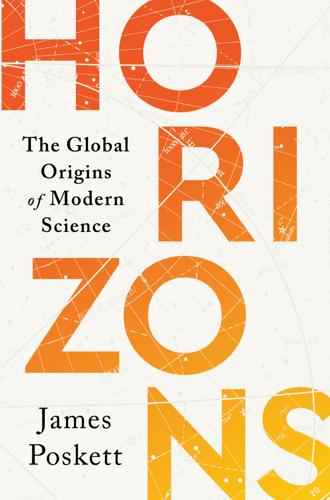
Horizons: The Global Origins of Modern Science
by
James Poskett
Published 22 Mar 2022
Instead, they were used as training devices in temples, helping young navigators memorize the different tidal and swell patterns. It is worth noting that, in the eighteenth century, European navigators did not have a workable theory of oceanic swells, whilst Newton himself had only just started to develop a more complex theory of the tides in his Principia.45 Ultimately, whilst Europeans tended to think of the Pacific as a vast, empty space, dotted with tiny islands, Polynesians understood the ocean itself as a kind of terrain. The Pacific was full of texture, swells and currents forming the equivalent of hills and valleys.

The Art of Computer Programming
by
Donald Ervin Knuth
Published 15 Jan 2001
Many other authors have contributed to the theory — notably Impagliazzo, Levin, Luby, and Hastad, who showed [STOC 21 A989), 12-24; 22 A990), 395-404] that pseudorandom sequences can be constructed from any one-way function — but such results are not surveyed here because they apply primarily to abstract complexity theory rather than to practical random number generation. The practical implications of theoretical work on pseudorandomness were first investigated empirically by P. L'Ecuyer and R. Proulx, Proc. Winter Simulation Conf. 22 A989), 467-476. If the numbers are not random, they are at least higgledy-piggledy. — GEORGE MARSAGLIA A984) EXERCISES 1. [10] Can a periodic sequence be equidistributed?
…
Considerably more comprehensive treatments can be found in the books Computational Com- Complexity of Algebraic and Numeric Problems by A. Borodin and I. Munro (New York: American Elsevier, 1975); Polynomial and Matrix Computations 1 by D. Bini and V. Pan (Boston: Birkhauser, 1994); Algebraic Complexity Theory by P. Biirgisser, M. Clausen, and M. Amin Shokrollahi (Heidelberg: Springer, 1997). EXERCISES . 1. [15] What is a good way to evaluate an "odd" polynomial / \ 2n+l , In—1 , , o U(x) - U2n+lX + +U2n-\X -\ \-UiX! 2. [M20] Instead of computing u(x + xo) by steps HI and H2 as in the text, discuss the application of Homer's rule B) when polynomial multiplication and addition are used instead of arithmetic in the domain of coefficients. 3. [20] Give a method analogous to Homer's rule, for evaluating a polynomial in two variables Yli+ ¦<nUiJx%y:''¦ (This polynomial has (n + l)(n + 2)/2 coefficients, and its "total degree" is n.)
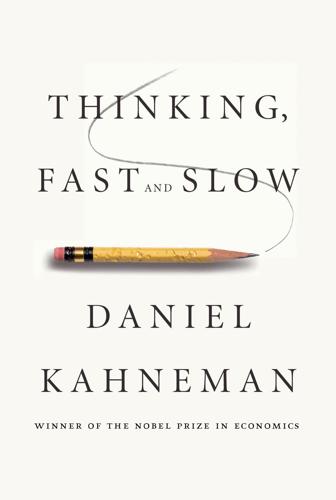
Thinking, Fast and Slow
by
Daniel Kahneman
Published 24 Oct 2011
His model could explain Anthony’s risk aversion, but it cannot explain Betty’s risk-seeking preference for the gamble, a behavior that is often observed in entrepreneurs and in generals when all their options are bad. All this is rather obvious, isn’t it? One could easily imagine Bernoulli himself constructing similar examples and developing a more complex theory to accommodate them; for some reason, he did not. One could also imagine colleagues of his time disagreeing with him, or later scholars objecting as they read his essay; for some reason, they did not either. The mystery is how a conception of the utility of outcomes that is vulnerable to such obvious counterexamples survived for so long.

City: Urbanism and Its End
by
Douglas W. Rae
Published 15 Jan 2003
See Jacobs, The Death and Life of Great American Cities (New York: Random House, 1961). See also Lyn H. Lofland, A World of Strangers (New York: Basic Books, 1973). For a more developed theoretical treatment of contact with diversity, see Richard Sennett, The Uses of Disorder (New York: Norton, 1970). Gerald Frug has constructed an inspiring and complex theory of urban change that hinges to a considerable degree on overcoming the sorting processes of late twentieth-century urban regions. See Frug, City Making: Building Cities Without Building Walls (Princeton: Princeton University Press, 1999). 46. By way of counterpoint, the explicit idea of urbanism was quite commonly used in a positive, normative vein.
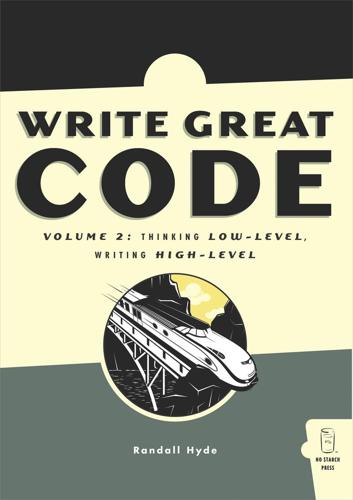
Write Great Code, Volume 2
by
Randall Hyde
Published 6 Aug 2012
For this reason, the optimization process is usually a case of compromise management, where you make tradeoffs and sacrifice certain subgoals (for example, running certain sections of the code a little slower) in order to create a reasonable result (for example, creating a program that doesn’t consume too much memory). 5.4.4.2 Optimization’s Effect on Compile Time You might think that it’s possible to choose a single goal (for example, highest possible performance) and optimize strictly for that. However, the compiler must also be capable of producing an executable result in a reasonable amount of time. The optimization process is an example of what complexity theory calls an NP-complete problem. These are problems that are, as far as we know, intractable. That is, a guaranteed correct result cannot be produced (for example, an optimal version of a program) without computing all possibilities and choosing the best result from those possibilities. Unfortunately, the time generally required to solve an NP-complete problem increases exponentially with the size of the input, which in the case of compiler optimization means roughly the number of lines of source code.
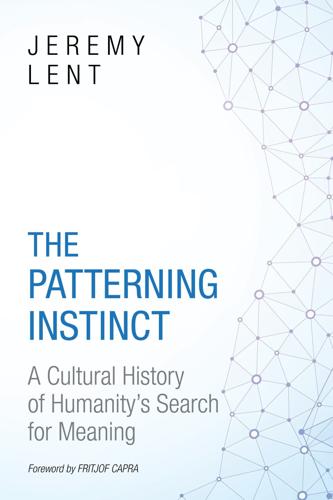
The Patterning Instinct: A Cultural History of Humanity's Search for Meaning
by
Jeremy Lent
Published 22 May 2017
In neither case was Euclid or Newton proved wrong; rather, the scope of their laws, once thought to be universal, was constrained by new findings.58 Some mathematicians point out that, in spite of its “unreasonable effectiveness,” there are domains where mathematics is far less effective, particularly those that exhibit self-organized behavior, such as biological systems, human interactions, weather patterns, and stock market fluctuations. Pioneering branches of modern science, such as systems biology and complexity theory, use mathematics to investigate these domains while rejecting the notion of an eternally fixed mathematical truth waiting to be discovered.59 The question of whether mathematics leads to the ultimate Truth has profound implications for how humanity can find meaning from the universe. If, instead of being the gateway to “the mind of God,” mathematics is a specific language constructed by the human mind, there may be other constructions of meaning offering alternative truths that are no less valid.
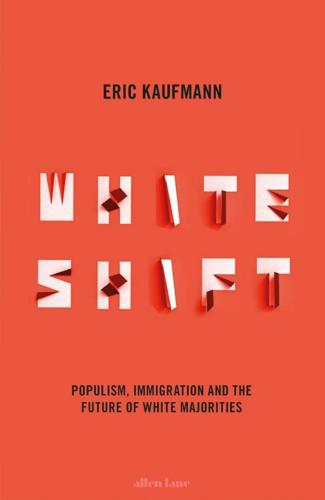
Whiteshift: Populism, Immigration and the Future of White Majorities
by
Eric Kaufmann
Published 24 Oct 2018
The recent liberalization of attitudes to homosexuality in America is a case in point: liberalization made people aware that attitudes were changing, which convinced fence-sitters, who in turn shifted the cultural landscape, which helped change the minds of other waverers, and so on. Psychological authoritarians who resolutely oppose homosexuality will nonetheless accept its legitimacy if this is viewed as the ‘normal’ social consensus. Complexity theory tells us that large changes may make no difference while small changes, the proverbial straw that breaks the camel’s back, do. Likewise, small shifts in cultural sensibilities at the margins can produce sudden swings in cultural mood. Consider the anti-racism norm as it pertains to immigration.

The Friendly Orange Glow: The Untold Story of the PLATO System and the Dawn of Cyberculture
by
Brian Dear
Published 14 Jun 2017
Mike Walker was one of the few who really turned out to have the right stuff to pick up the ball where I left off.” A friend of Andy’s, Mike Walker got interested in the JETS activities and would eventually take over the leadership of the project when Andy graduated from high school. Together they programmed the ILLIAC to play a version of Kalah (known also as Mancala) and didn’t understand enough complexity theory to calculate how long it would take to run through the possible outcomes. “One weekend we brought sleeping bags and started our program running to try to ‘solve’ Kalah by exhaustion, and about four in the morning, a microscopic way through the exhaustive search, a campus policeman found us sleeping behind the computer and kicked us out.

Inventor of the Future: The Visionary Life of Buckminster Fuller
by
Alec Nevala-Lee
Published 1 Aug 2022
Taking a small dome of venetian blinds, which was bound into a tight package, Fuller removed its rubber bands and tossed it gently into the air, demonstrating how it sprang into shape at once. By the time he finished, it was after midnight, and they could hear the tree frogs croaking outside. Elaine was entranced by the jitterbug, his praise of “the numbers nine and three, the circle, the triangle, the tetrahedron, and the sphere,” and “his complex theories of ecology, engineering, and technology.” When he sketched a diagram on the blackboard of “our old friend, the hypotenuse,” she was won over for good, whispering to her husband that she’d decided to attend Fuller’s classes. Willem responded, “I knew you would.” Fuller struck the German mathematician Max Dehn as a charlatan, but the other teachers were impressed.
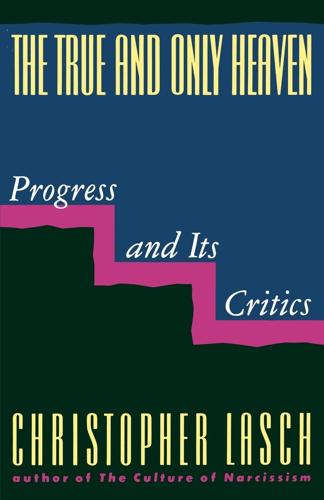
The True and Only Heaven: Progress and Its Critics
by
Christopher Lasch
Published 16 Sep 1991
In an interesting discussion of this essay, Thomas Bender argues that the classical sociologists intended gemeinschaft and gesellschaft to refer not to historical stages but to contrasting tendencies always present in any given society. It was only after World War II, according to Bender, that American sociologists began to use these concepts in a sequential fashion, thanks largely to the example of Wirth's influential essay. "With the dualistic perspective of Tönnies largely submerged in Wirth's evolutionary formulation, a complex theory with rich possibilities for historical research was transformed into a simplistic typology of social change." The "evolutionary" interpretation, however, did not originate with Louis Wirth. There is no indication in Simmel's essay that "communalism survives, and even thrives, in the heart of the modern metropolis," as Bender puts it.
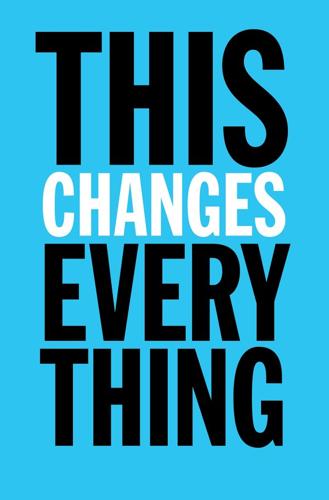
This Changes Everything: Capitalism vs. The Climate
by
Naomi Klein
Published 15 Sep 2014
Yet proponents of geoengineering research leave that out of the discussion.”22 Indeed in my time spent among the would-be geoengineers, I have been repeatedly struck by how the hard-won lessons about humility before nature that have reshaped modern science, particularly the fields of chaos and complexity theory, do not appear to have penetrated this particular bubble. On the contrary, the Geoclique is crammed with overconfident men prone to complimenting each other on their fearsome brainpower. At one end you have Bill Gates, the movement’s sugar daddy, who once remarked that it was difficult for him to decide which was more important, his work on computer software or inoculations, because they both rank “right up there with the printing press and fire.”
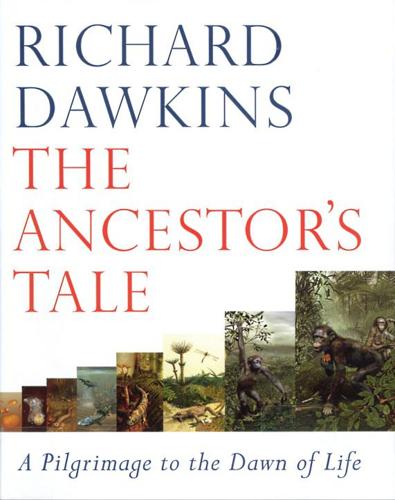
The Ancestor's Tale: A Pilgrimage to the Dawn of Evolution
by
Richard Dawkins
Published 1 Jan 2004
We are capable of walking on all fours like a typical mammal, but it is uncomfortable: hard work, because of our altered body proportions. Those proportional changes which now make us feel comfortable on two legs originally came about, Kingdon suggests, in the service of a minor shift in food habits -- to squat feeding. There is much more in Jonathan Kingdon's subtle and complex theory, but I will now recommend his book, Lowly Origin, and move on. My own slightly way-out theory of bipedality is very different but not incompatible with his. Indeed, most of the theories of human bipedality are mutually compatible, with the potential to assist rather than oppose one another. As in the case of the enlargement of the human brain, my tentative suggestion is that bipedality may have evolved through sexual selection, so again I postpone the matter to the Peacock's Tale.

Global Catastrophic Risks
by
Nick Bostrom
and
Milan M. Cirkovic
Published 2 Jul 2008
Such log-log negative linear plots correspond to inverse power probability density functions (pdfs) ( Sornette, 2004), and this behaviour is quite typical of many complex systems as popularized in the book Ubiquity by Mark Buchanan (see Suggestions for further reading). 8 . 1 0 . 3 Ext re m e value statistics In extreme value statistics similar regularities have emerged in the most surprising of areas - the extreme values we might have historically treated as awkward outliers. Can it be coincidence that complexity theory predicts inverse power law behaviour, extreme value theory predicts an inverse power pdf, and that empirically we find physical extremes of tides, rainfall, wind, and large losses in insurance showing pareto (inverse power pdf) distribution behaviour? 8. 1 1 Conclusion: against the gods? Global catastrophic risks are extensive, severe, and unprecedented.
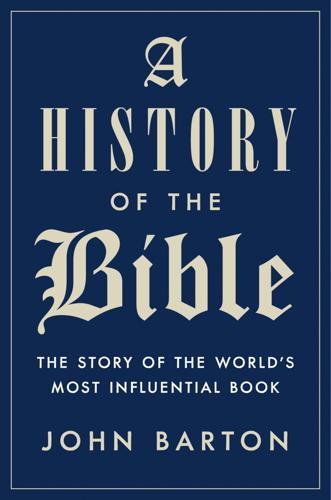
A History of the Bible: The Story of the World's Most Influential Book
by
John Barton
Published 3 Jun 2019
Even comparatively conservative readers are not always convinced that the stories are historical, and are sometimes willing to see them more as parables or edifying tales rather than as history – though there are still many who continue to take an interest in supposed enormous fish in the Mediterranean, capable of swallowing a man. Current scholarly study of the narrative books is polarized. Some scholars, especially in the German-speaking world, though also in North America and Israel, still concentrate on questions of origin and development, producing highly complex theories about the way oral and written materials have come together to form the books as we now have them.27 Others, particularly in North America, are much more interested in literary aspects of these texts, and tend to read them synchronically, that is, as finished wholes and as great literature, without any regard to questions of origin or development.28 In neither camp is there anything like consensus on the most fruitful conclusions these two approaches can achieve.

Growth: From Microorganisms to Megacities
by
Vaclav Smil
Published 23 Sep 2019
Global Well-Being since 1820, Paris: OECD, pp. 117–137. Bates, K. T., et al. 2015. Downsizing a giant: Re-evaluating Dreadnoughtus body mass. Biology Letters 11:20150215. Batt, R. A. 1980. Influences on Animal Growth and Development. London: Edward Arnold. Batty, M. 2006. Rank clocks. Nature 444:592–596. Batty, M. 2013. An outline of complexity theory. http://www.spatialcomplexity.info/files/2013/02/Complexity-Lecture-1.pdf. Bazzaz, F., and W. Sombroek, eds. 1996. Global Climate Change and Agricultural Production. Chichester: Wiley. BCRC (Beef Cattle Research Council). 2016. Optimizing feedlot feed efficiency. http://www.beefresearch.ca/research-topic.cfm/optimizing-feedlot-feed-efficiency-8.
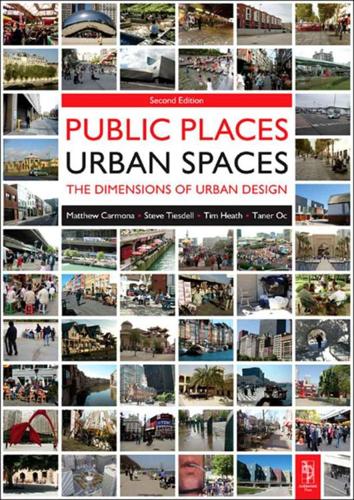
Public Places, Urban Spaces: The Dimensions of Urban Design
by
Matthew Carmona
,
Tim Heath
,
Steve Tiesdell
and
Taner Oc
Published 15 Feb 2010
. … Everything we identify with the man-made substitutes for natural bio-economies, that is, technologies, tends toward positive feedback, which is self-amplifying, self-reinforcing, and destabilising, featuring the removal of constraints to entropy flows and leading to the certain eventual destruction of that system.’ Showing how complexity theory can embrace both deep structures of interconnectedness, which we can never truly understand let alone control, and a myriad of processes and elements that combine into organic wholes, Batty (2005) argues that bottom-up processes – in which the outcomes are always uncertain – can combine with new forms of geometry associated with fractal patterns and chaotic dynamics to provide theories readily applicable to highly complex systems such as cities.
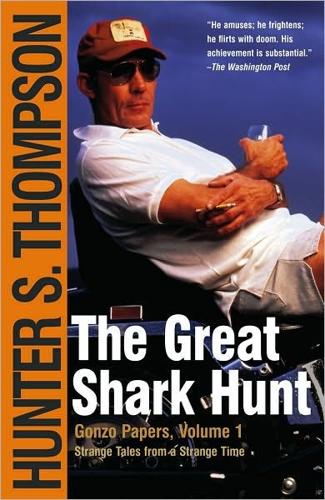
The Great Shark Hunt: Strange Tales From a Strange Time
by
Hunter S. Thompson
Published 6 Nov 2003
The problem becomes more and more serious as the stakes get higher, and by the time a candidate has survived enough primaries to convince himself and his staff that they will all be eating their lunches in the White House Mess for the next four years, he is long past the point of having either the time or the inclination to treat any journalist who doesn't already know him personally as anything but just another face in the campaign "press corps." There are many complex theories about the progressive stages of a presidential campaign, but for the moment let's say there are three: Stage One is the period between the decision to run for president and the morning after the New Hampshire primary when the field is still crowded, the staff organizations are still loose and relaxed, and most candidates are still hungry for all the help they can get -- especially media exposure, so they can get their names in the Gallup Poll; Stage Two is the "winnowing out," the separating of the sheep from the goats, when the two or three survivors of the early primaries begin looking like long-distance runners with a realistic shot at the party nomination; and Stage Three begins whenever the national media, the public opinion polls and Mayor Daley of Chicago decide that a candidate has picked up enough irreversible momentum to begin looking like at least a probable nominee, and a possible next president.

The First American: The Life and Times of Benjamin Franklin
by
H. W. Brands
Published 1 Jan 2000
But plenty of history’s commonplace ideas—from the flatness of the earth to the faster falling of heavy objects—had proven, on closer examination, to be wrong; what remained in the puzzle of the lightning was for the electrical conjecture to be tested. This was precisely what Franklin proposed to do. In April 1749 Franklin wrote a long letter to John Mitchell, a colleague of Peter Collinson and likewise a fellow of the Royal Society. In this letter he put forward a complex theory of lightning with a fairly simple essence: that particles of water in thunderclouds became electrically charged by their wind-borne jostling, and that lightning was nothing more than the discharge of the pent-up electrical force. This theory supported certain recommendations, which in turn comported with observation.

The Sum of All Fears
by
Tom Clancy
Published 2 Jan 1989
From Walker the Russians had learned how American cipher machines were designed and how their keying systems worked. The basics of the cipher machines hadn't really changed all that much in the preceding ten years. Improved technology had made them more efficient and much more reliable than their stepping-switch and pin-disc ancestors, but they all worked on a mathematical area called Complexity Theory, which had been developed by telephone engineers sixty years earlier to predict the working of large switching systems. And the Russians had some of the best mathematical theorists in the world. It was believed by many that knowledge of the structure of cipher machines might enable a really clever mathematician to crack a whole system.

Debt of Honor
by
Tom Clancy
Published 2 Jan 1994
To change now would be an admission of error, and Nagumo didn't like to do that any more than anyone else in the world. He decided that he'd suggest an improved offer for licensing rights, instead—not knowing that by failing to accept a personal loss of face, he'd bring closer something that he would have tried anything to avoid. 5—Complexity Theory Things rarely happen for a single reason. Even the cleverest and most skillful manipulators recognize that their real art lies in making use of that which they cannot predict. For Raizo Yamata the knowledge was usually a comfort. He usually knew what to do when the unexpected took place—but not always.
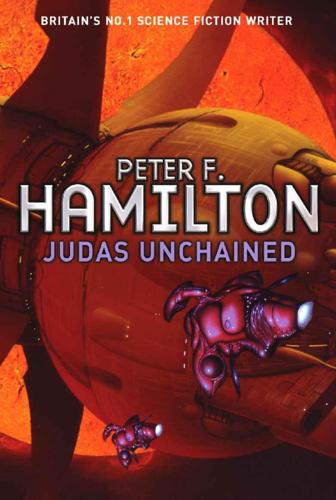
Judas Unchained
by
Peter F. Hamilton
Published 1 Jan 2006
‘For what it’s worth, I believe it was a genuine copy of Dudley Bose’s memories and personality.’ ‘But you don’t know that for certain.’ ‘If it’s not a copy of Bose, then what the hell is it?’ ‘Boys, boys,’ The Cat said. ‘Please. The smell of testosterone is getting foul back here. This is all sounding like a very dull lecture on complexity theory to me. You don’t have anything like enough real evidence to point the finger at any of them. If it was obvious who the Starflyer agent was, then we’d have realized by now.’ Despite his irritation at her tone, Stig had to admit she’d got a point. There was some memory about The Cat worrying away at the back of his brain, something he’d heard back in the Commonwealth.

The Art of Computer Programming: Sorting and Searching
by
Donald Ervin Knuth
Published 15 Jan 1998
Seward introduced the ideas of distribution counting and replacement selection; he showed that the first run in a random permutation has an average length of e — 1; and he analyzed external sorting as well as internal sorting, on various types of bulk memories as well as tapes. An even more noteworthy thesis—a Ph.D. thesis in fact — was written by Howard B. Demuth in 1956 ["Electronic Data Sorting" (Stanford University, October 1956), 92 pages; IEEE Trans. C-34 A985), 296-310]. This work helped 388 SORTING 5.5 to lay the foundations of computational complexity theory. It considered three abstract models of the sorting problem, using cyclic, linear, and random-access memories; and optimal or near-optimal methods were developed for each model. (See exercise 5.3.4-68.) Although no practical consequences flowed immediately from Demuth's thesis, it established important ideas about how to link theory with practice.

Artificial Intelligence: A Modern Approach
by
Stuart Russell
and
Peter Norvig
Published 14 Jul 2019
This is not surprising when one considers that because it includes inference in propositional logic as a special case, inference in Bayes nets is NP-hard. To prove this, we need to work out how to encode a propositional satisfiability problem as a Bayes net, such that running inference on this net tells us whether or not the original propositional sentences are satisfiable. (In the language of complexity theory, we reduce satisfiability problems to Bayes net inference problems.) This turns out to be quite straightforward. Figure 13.14 shows how to encode a particular 3-SAT problem. The propositional variables become the root variables of the network, each with prior probability 0.5. The next layer of nodes corresponds to the clauses, with each clause variable Cj connected to the appropriate variables as parents.